Home » 1st Grade Teaching Resources » 33 Engaging & Inspiring 1st Grade Science Projects


33 Engaging & Inspiring 1st Grade Science Projects
There are a lot of 1st grade science projects that can help children draw conclusions and make connections to the world around them. In first grade science, children learn about topics within life, physical, and earth sciences. That means there are a lot of different types of science experiments to choose from when looking for an engaging (or easy) project for your class or at home.
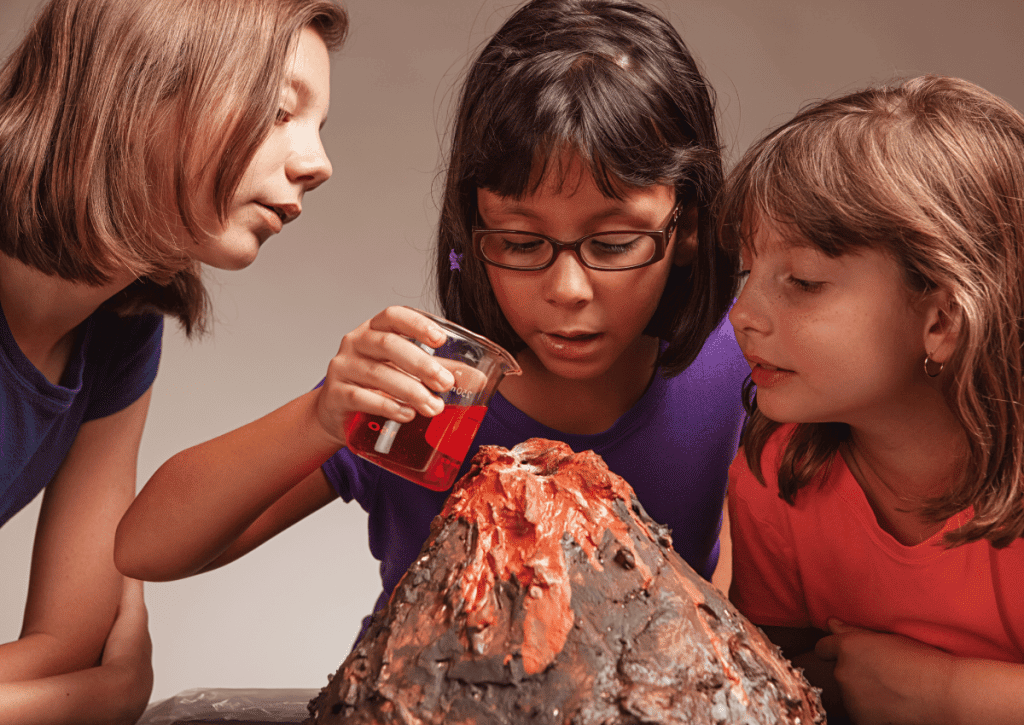
Table of Contents
What science topics do 1st graders learn, the best 1st grade science experiments, what are some easy science projects, check out these additional 1st grade resources.
Through the life sciences, first graders learn about the characteristics that differentiate living and nonliving things. They learn about animals and how they adapt to and interact with their surroundings.
Children at this age also learn about the seasons, weather patterns, and the water cycle through the earth sciences, along with the phases of the moon.
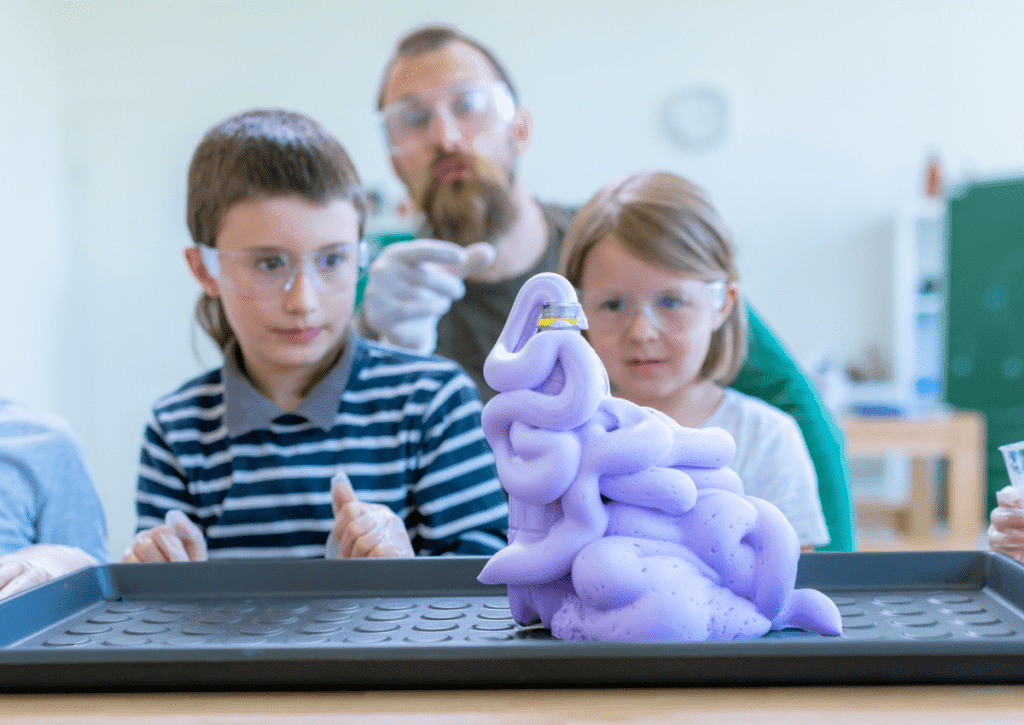
First graders are also introduced to the basic concepts of motion and forces where they explore how objects move, and they manipulate variables so they can compare cause and effect . Students this age learn how to ask a question that can be answered through investigation and observation. So a good science experiment that supports these topics starts with a testable question that children will be able to answer at the conclusion of the investigation.
In partnership with Teach Simple , whose marketplace is full of educational materials created by actual teachers (plus 50% of all revenues go to them), I’ve gathered 33 great kid-friendly science projects that your first grader will enjoy in the classroom or to pass the time by at home. Have a look!
The projects in the list below address the topics I mentioned above that 1st graders learn in school. Allow your child to take the time to manipulate variables and make observations and discuss them with you during the experiments so they can also learn how to draw conclusions.
- Make A Rainbow From Children’s Museum
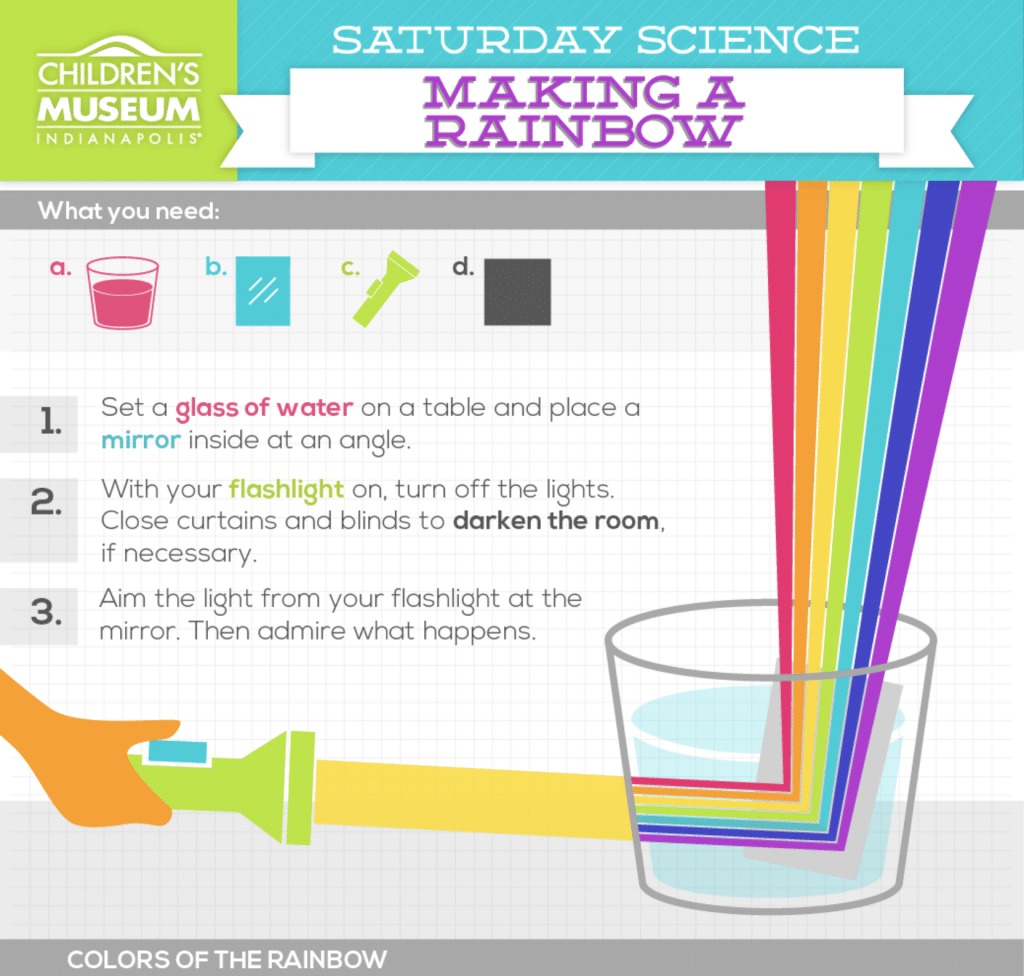
First graders love to learn about rainbows. This experiment shows how white light is a combination of all the colors of the rainbow. When you shine the flashlight on the glass of water, the light waves are refracted, or bent, causing the light to break into its various colors.
Supplies you’ll need:
- Clear glass
- Darkened room
If you’re looking for a bit more to hit this concept home, try out Teach Simple’s Colors Science, Literacy and Math Activity by KP Classroom, which provides companion activities to support this experiment.
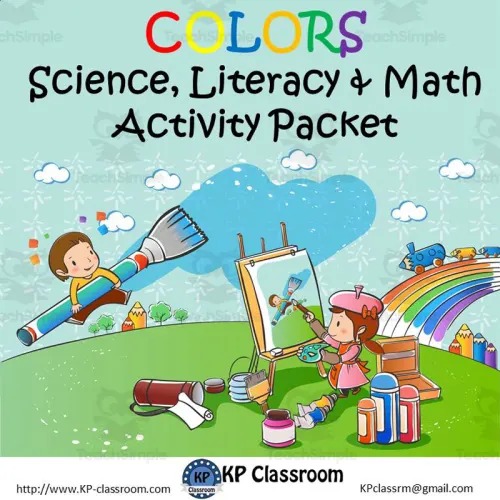
- Balloon Rocket From Scishow Kids
This is one of the most fun 1st grade science fair projects and it introduces the laws of motion and forces. During this project, students will observe when we blow the balloon up with more air, it should travel farther. Students will need to observe, measure, and record data.
- String (2-3 yards length recommended)
- 2 chairs or other object to tie each end of the string
Download this Hands-On STEAM- Physical Science e-book for supporting materials by Classroom Complete Press.
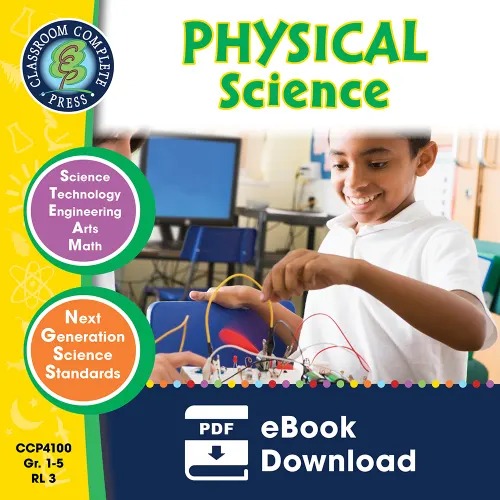
- Fluffy Slime Experiment From Elmer’s Store
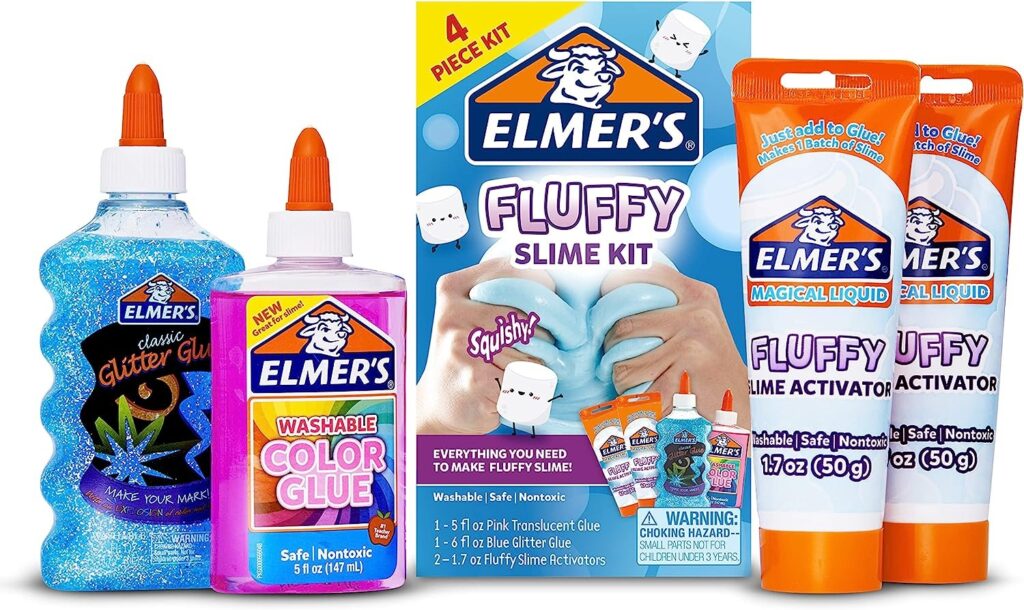
This is a fun and easy experiment where 1st graders learn how to mix multiple substances to create one new substance. I like the Elmer’s Fluffy Slime Kit set linked below as it makes two batches of soft, fluffy slime in two colors.
Pair this experiment with activities from this Hands-On- Physical Science: Matter & Materials unit for a lesson about states of matter by Classroom Complete Press. Have students discuss which state slime might fit into and why.
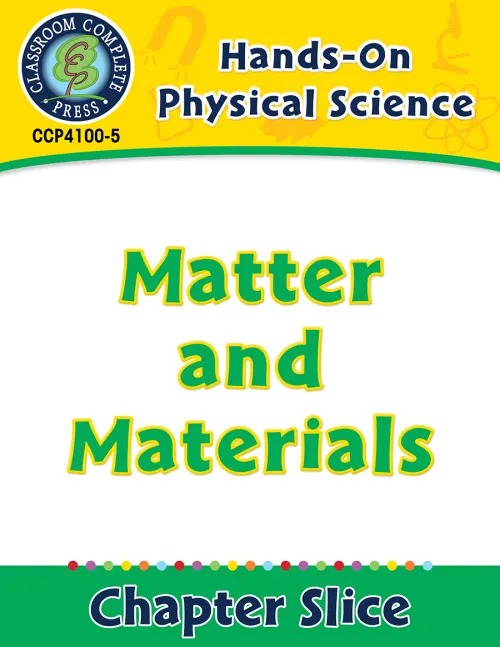
- Crayon Box STEM Activity By The Core Coaches
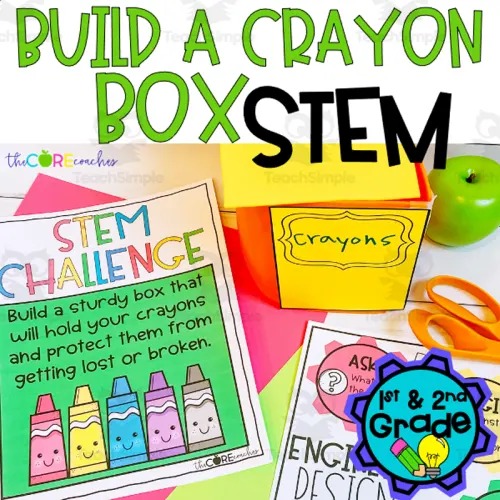
This project is designed to help your students think outside the box and learn how the world works. It helps students explore the engineering design process using common materials.
This digital download includes a list for material recommendations, but this challenge can be done with materials you have on hand, such as:
- Pipe cleaners
- Popsicle sticks
- Cotton balls
- Rubber bands
- Leaf Chromatography Project From Lostronaut’s Store
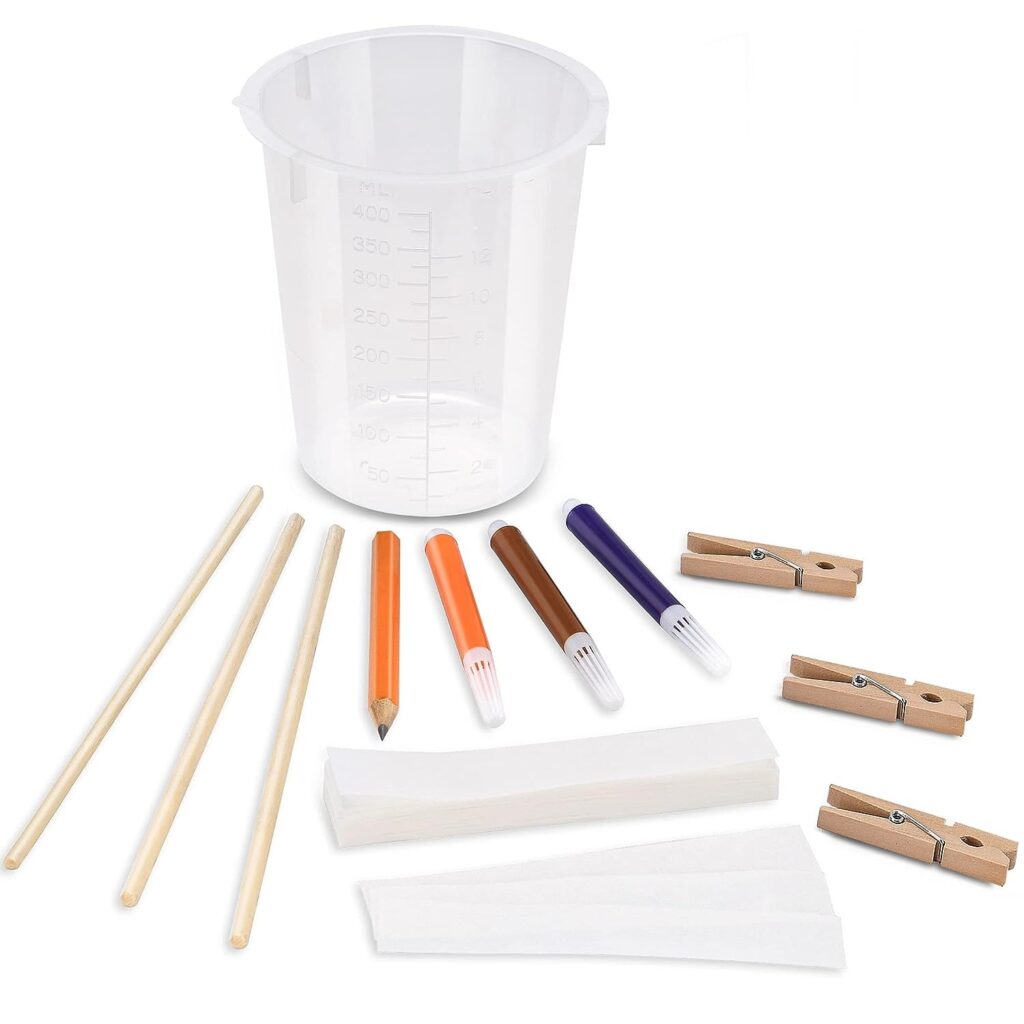
When learning about the four seasons, a natural question for first graders to ask is why leaves change colors in autumn.
To start this project, use a Seasonal Cycles Worksheet by Have Fun Teaching, to develop background knowledge prior to the experiment.
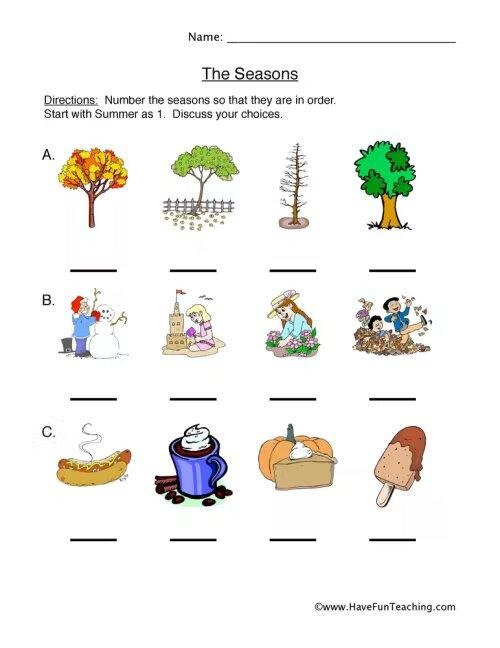
Next, have students go outside and collect different leaves. Break the leaves up, put the pieces in a cup, and add rubbing alcohol. Then use the chromatography kit linked below to set up the strips and watch the color bleed up. Discuss the different colors that separate out during the chromatography process.
- Dancing Rice From Farmingdale Library
Dancing rice is the perfect chemistry experiment for first graders because it demonstrates a chemical reaction. When vinegar is added to baking soda, the hydrogen ions in vinegar react with the sodium bicarbonate in the baking soda and releases gas.
- White vinegar
- Baking soda
- Optional: Food coloring
- Shoebox Guitar By Twin Sisters Digital Media
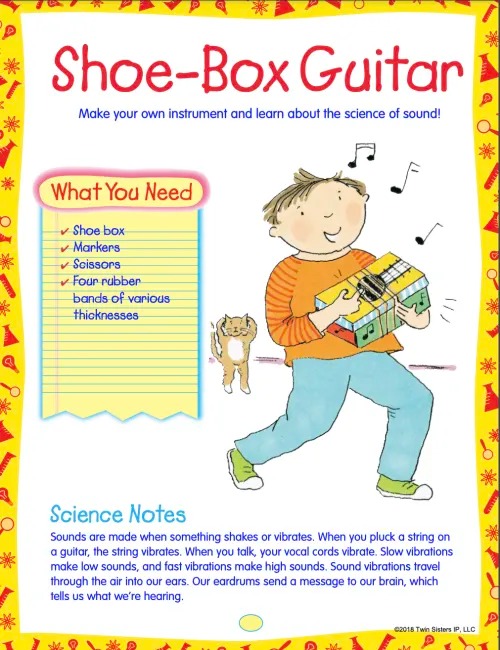
What’s better than conducting a science experiment about sound? Use the shoebox guitar project to teach students about vibrations and how sound travels. Then make some classroom music and dance out all that 1st grade energy.
- 4 rubber bands of varying thickness
Living vs Nonliving: Yeast vs. Sand
This first grade science experiment compares the properties of yeast and sand which look similar, but one of them is living and the other is nonliving.
Use this activity to spark a conversation about the properties of living and nonliving things and what all living things have in common.
This STEM Workbook and Living and Nonliving Things activity pack provide worksheets and activities to support learning about living vs. nonliving things.
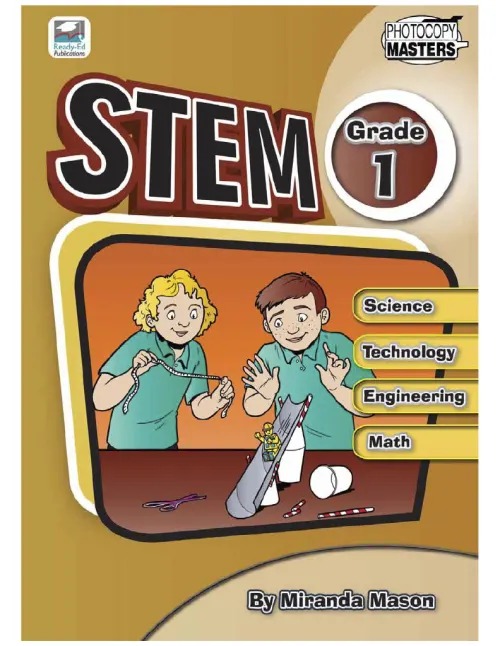
- Sink Or Float From Mayta The Brown Bear
This fun lab is a great introduction to the concept of density.
Gather whatever items you have on hand and a large bin of water. Have students make predictions about which items will sink and which will float. They can test objects like a small sheet of tinfoil, a pebble, a flower, a leaf, a stick , a marble, etc.
You can also use this Sink or Float Recording Sheet to collect data by Cherry Workshop.
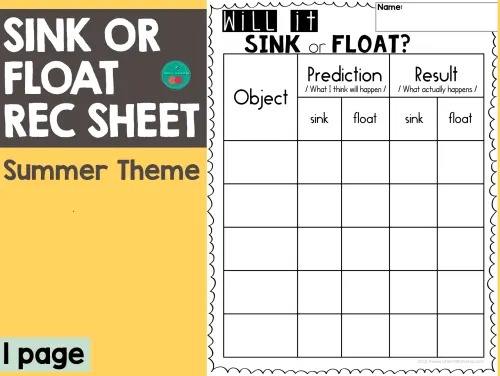
- Blubber Experiment From Learn With Mrs.B
In this experiment, students investigate the insulating properties of shortening or petroleum jelly as a substitute for animal fat.
- Plastic zip baggies
- Lard (shortening) or petroleum jelly
- Bowl of ice water
Combine this experiment with a lesson about arctic animals using some Polar Animals Flashcards by Fiddleticks Education or with this animal science unit All About Polar Bears to teach them how arctic animals stay warm in their polar environment by Simply Schoolgirl.
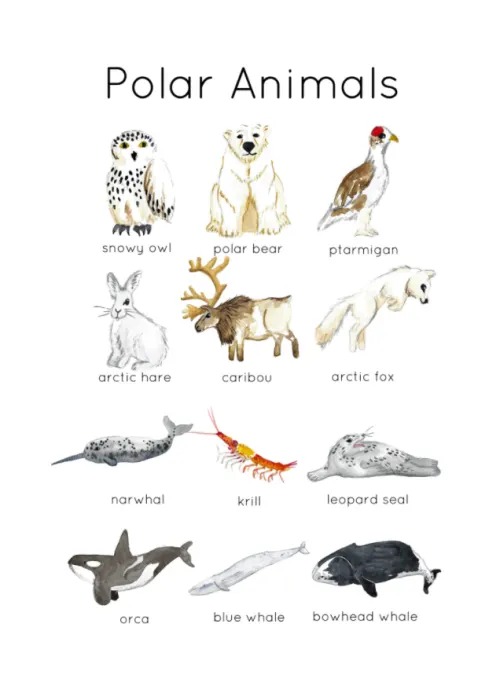
- Fossil Factory By Twin Sisters Digital Media
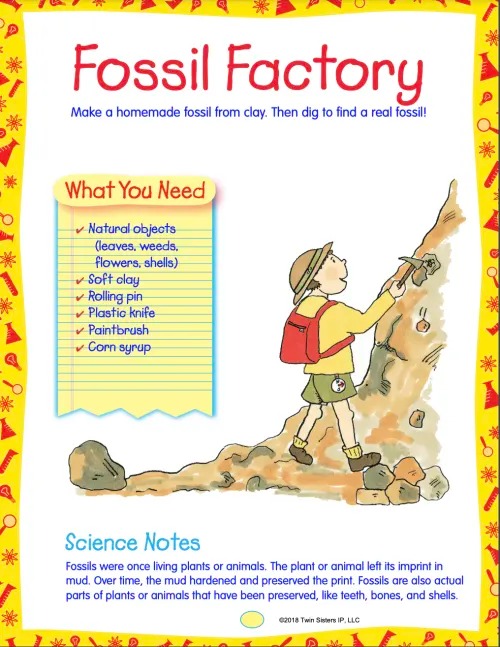
Get your students ready for a fossil adventure. First graders can design their own fossil out of clay and then go on an outdoor field trip to dig around for fossils outside after learning a bit more about them.
- Natural objects
- Rolling pin
- Plastic knife
- Paint brush
- Cloud In A Jar Experiment By Lilibette’s Resources
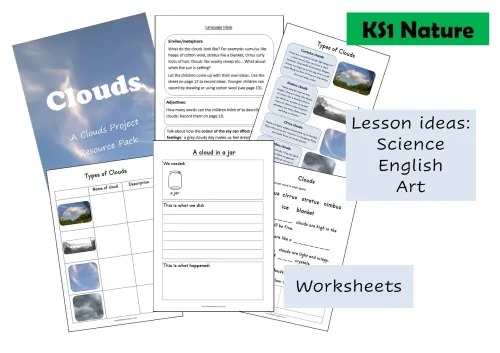
When learning about either weather or the water cycle, creating a cloud in a jar is the perfect activity to show children how clouds are formed when warm water vapor rises toward cooler temperatures and attaches to condensation nuclei. Specific instructions on how to make the cloud in the jar are available in the Clouds Mini Project Resource Pack below.
- The Penny Experiment From Kids Fun Science
This super easy experiment demonstrates the properties of water cohesion and surface tension. Start with a testable question like “How many drops of water fit on the head of a penny?”
Children should make their predictions. Let students design an investigation to answer the testable question. This experiment lends itself to teaching the scientific method .
- Cup of water
- Create Your Own Tornado From The 4M Store
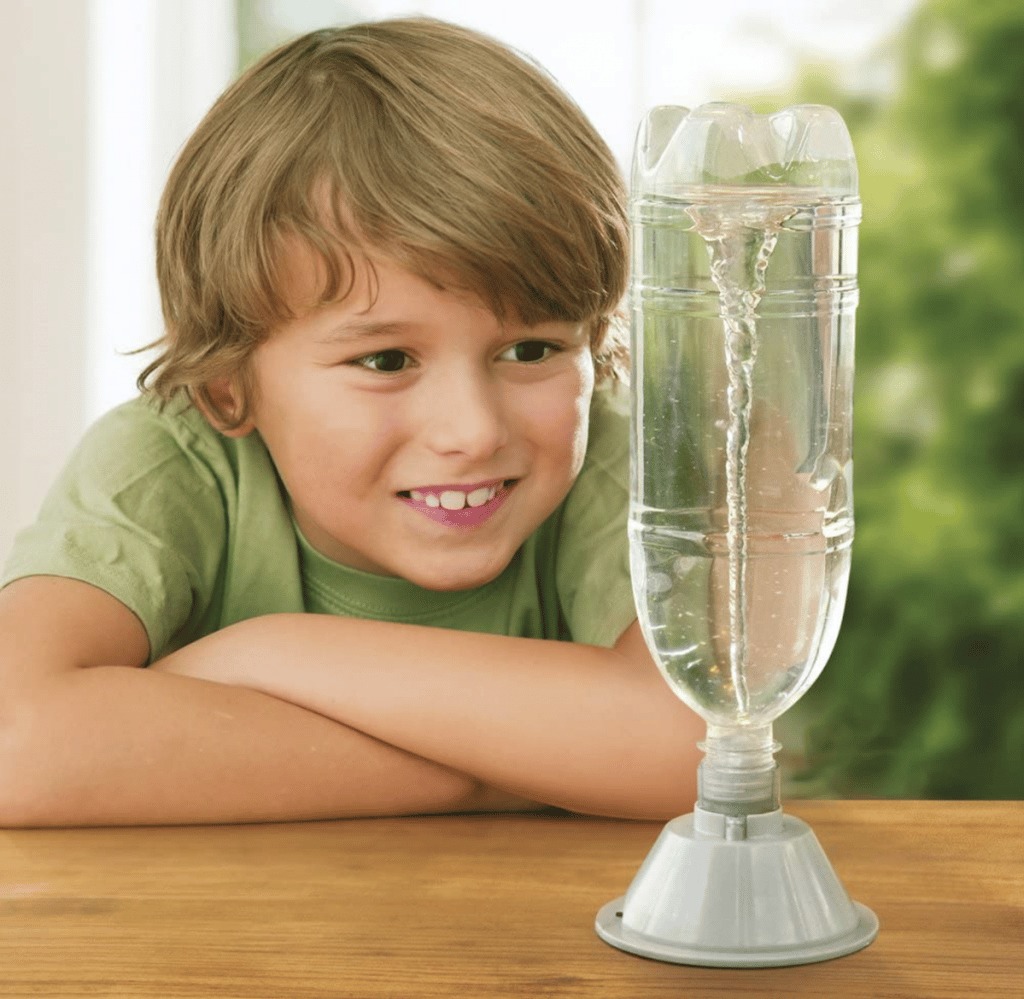
Who doesn’t love learning about how storms form? First graders will have fun putting their model together and simulating a tornado from this kit full of everything you need.
For further learning, have students listen to an audiobook, Tornados and Hurricanes by Twin Sisters Digital Media
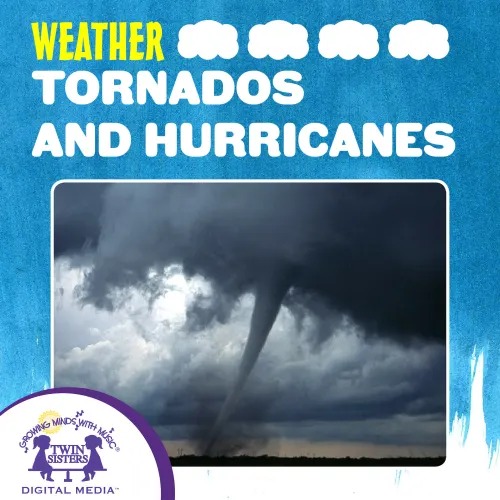
- How Many Pennies Can My Boat Hold? From KSU iTeach
In this experiment children will design and construct their own tinfoil boat. Then they will predict how many pennies the boat can hold before it sinks.
This experiment demonstrates the property of density.
- Bucket of water
A Water Experiment Journal by Kindergarten Cafe that includes a worksheet for students to collect data and record their observations is a great supplement.
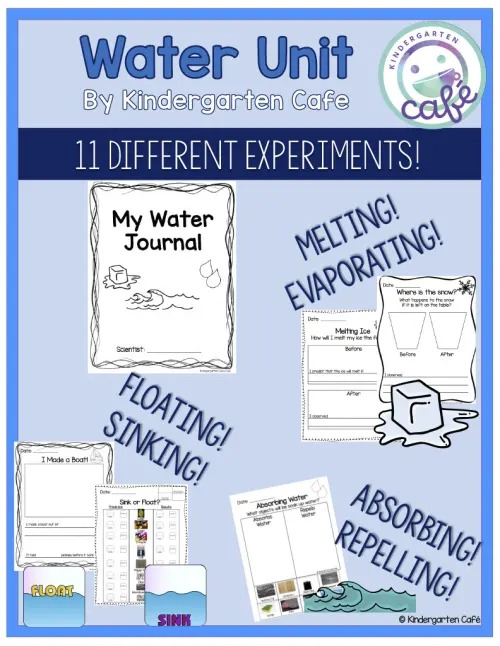
- Making Rock Candy From The Sci Guys
This chemistry experiment shows students how increasing water temperature causes sugar to dissolve. You can also show your children how sugar doesn’t dissolve in cold water. As you increase the temperature, it begins to dissolve, creating a new solution that results in a sweet treat everyone can enjoy later.
- Optional: Flavoring
- Elephant’s Toothpaste From Michigan Medicine
Students will learn in this project how different substances react to create a new substance, and, in this case, heat energy. The yeast removes the oxygen in the hydrogen peroxide, causing bubbles. Heat energy is released, creating what is known as an exothermic reaction.
- Food coloring
- Plastic water bottle
- Hydrogen peroxide
- Liquid dish soap
- Measuring cup
- Paper plate
- 1 tablespoon of dry yeast
- Grow Your Own Crystals From The 4M Store
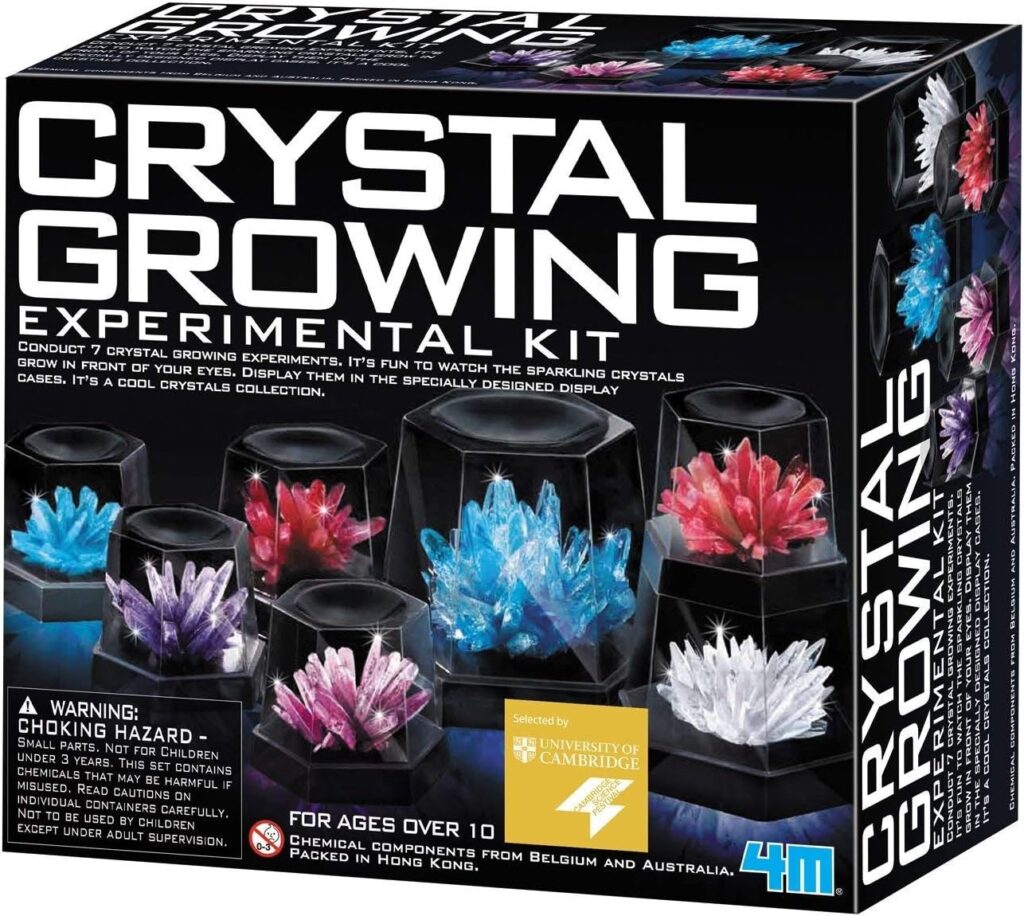
A favorite 1st grade science project is growing crystals. You can do this with a pre-packaged kit, like the one linked below, or with a variety of household items, including Borax.
Crystals form when water evaporates from a mixture. You can also teach your first graders about the different geometric shapes that crystals form. And this can be paired with a lesson about evaporation using these The Water Cycle Printables by My Kind of Crazy.
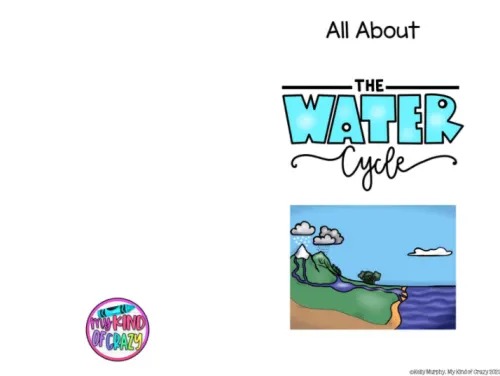
- Shiny Penny Experiment From SciShow Kids
This experiment introduces the concept of variables in a way that first graders can easily understand. Students will use a number of different substances to polish dull pennies. The independent variable is the substance being tested to polish the penny. This is the variable that we are manipulating or changing.
- Can of cola
- Lemon juice
- Tarnished pennies
- Build Your Own Rain Gauge From Community Play Things
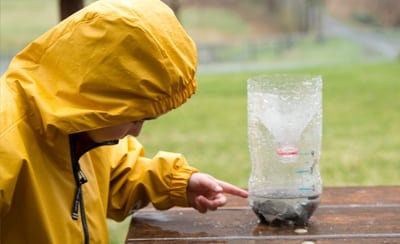
When learning about weather, have students make their own rain gauges. When it rains, they can make predictions about how much rain will fall and collect data on the actual amounts.
Resources for this lab and other weather related activities can be found in Teach Simple’s Hands-On STEAM- Earth and Space Science Grades 1-5 by Classroom Complete Press.
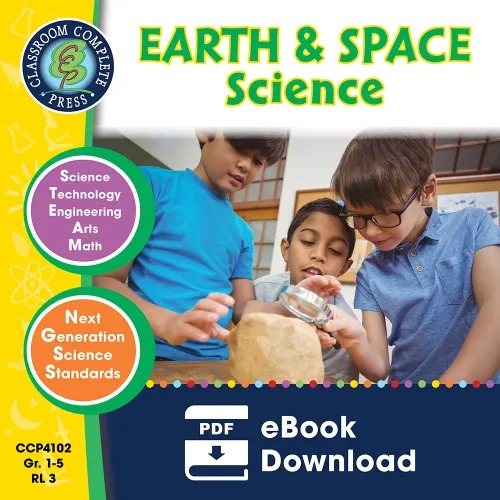
Students may also be interested in the audiobook When I Grow Up, I Want to Be a Meteorologist to supplement the concepts learned by Twin Sisters Digital Media.
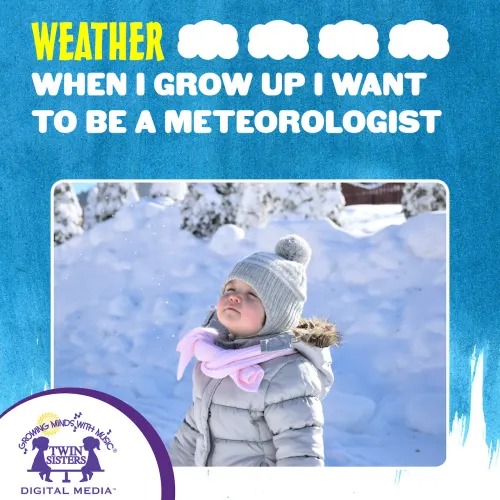
- Capillary Action Of Water In Plants By Madeleine Rein
If you’re looking for a fun way to demonstrate how plants take in water from the roots and distribute it to the rest of the plant, this is an easy and engaging experiment for first graders.
- White flower
- Jar of water
To learn more about plants and their parts, you can couple the experiment with the book: Plant, Plant, What Do You See by Kindergarten Cafe.
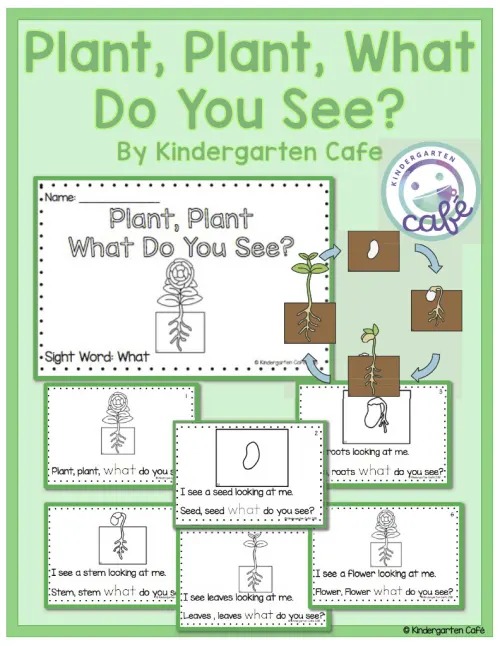
- Jumping Frogs (Static Electricity) From Science Sparks
This is a fun take on using a balloon and rubbing it against fabric to create static electricity.
Have students predict how many paper frogs will be attracted to and stick to the balloon. Another variation on the lab is to have students time how long the frogs stick to the balloon.
Supporting materials to teach about static electricity can be found in this resource: Hands-On Physical Science: Electricity and Magnetism .
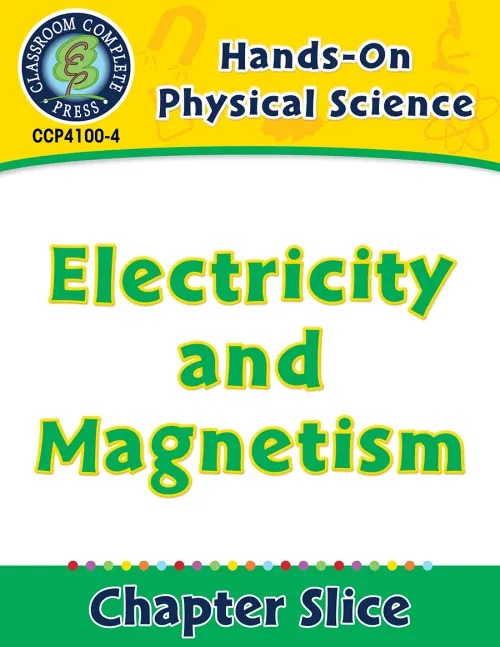
- Popsicle Stick Catapult From stlDenise3D
Children will create a catapult with a plastic spoon, popsicle sticks, and rubber bands.
After constructing the catapult, ask children to choose objects to launch. Some suggestions include marshmallows, cotton balls, and other soft items.
Students can predict which objects can be launched the farthest. Teach Simple’s unit on Force and Motion by Classroom Complete Press reinforces the concepts in this 1st grade science project.
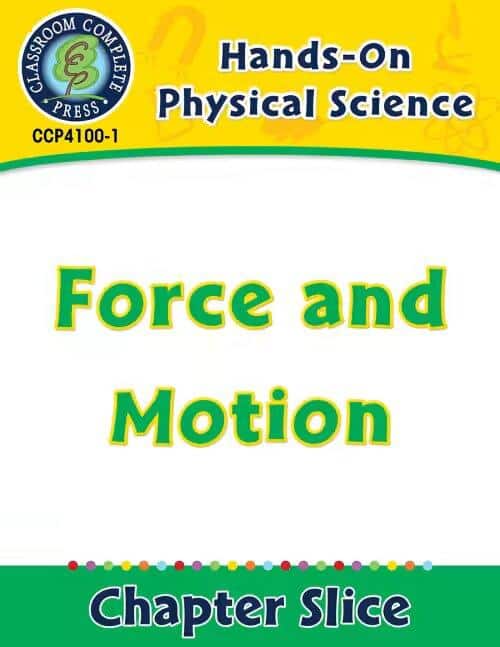
- Oreo Cookie Moon Phases From Hungry SciANNtist
Learning the phases of the moon can be challenging. So why not make it fun by using Oreo cookies to model each phase of the moon?
Students can easily create their own model in groups or individually.
Then have students review the moon phases using some Moon Phases Flashcards by Fiddleticks Education or this It’s Just A Phase activity to further reinforce the concept by Have Fun Teaching.
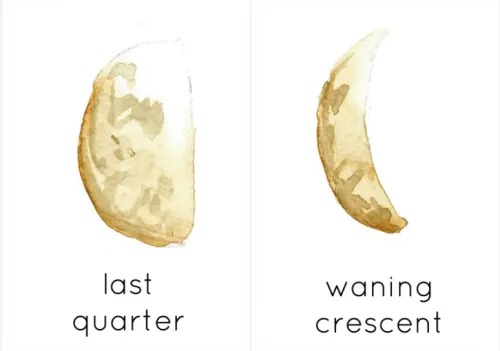
- Rolling Pin Pulley From STEM With Mr. C
In this first grade science fair project, children will learn the mechanics of simple machines by constructing their own pulley. Engage students in a discussion about where they might see pulley systems in the world around them.
Then, use a Hands-On Physical Science: Simple Machines activity pack to introduce the mechanics behind simple machines by Classroom Complete Press.
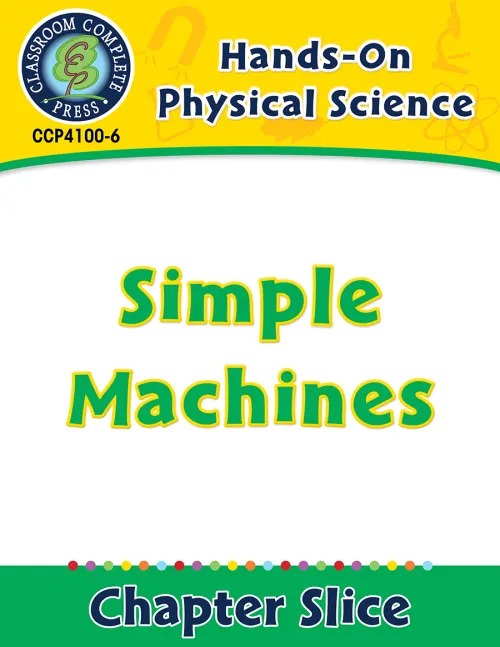
- How Does Composting Work? From Educational Insights Store
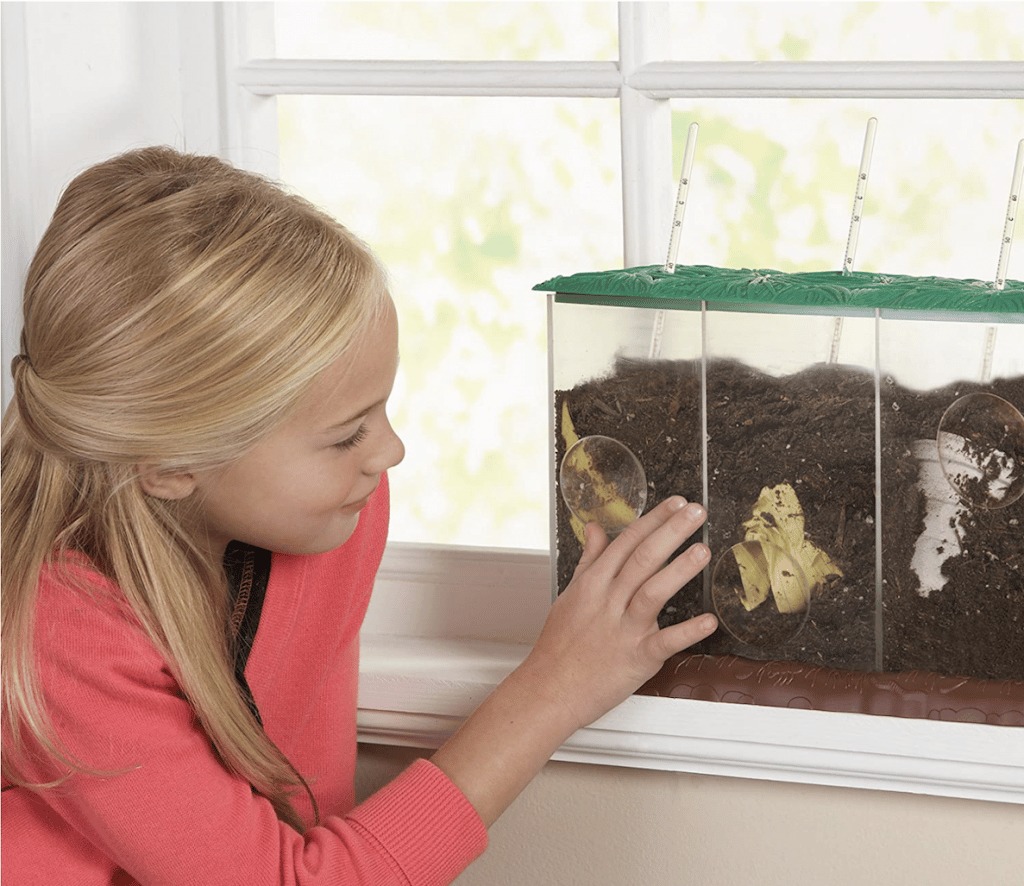
Americans waste about a pound of food per person each day. Composting has become a popular way to let food waste decompose rather than throwing it away. But how does it work?
Try out this easy classroom compost kit and let students make observations over a number of weeks as they watch what happens when different types of materials decompose.
This project can be an extension of Teach Simple’s lesson on the Flower Life Cycle by My Kind of Crazy or Watermelon Life Cycle by My Kind of Crazy.
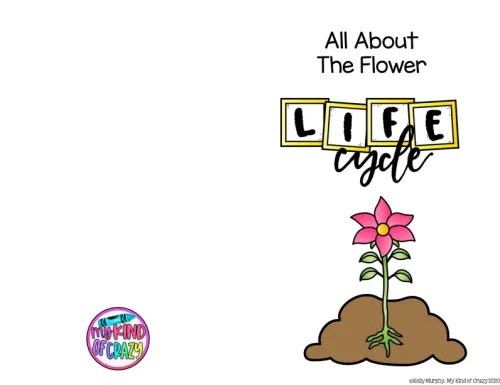
- Fun With Ramps By Twin Sisters Digital Media
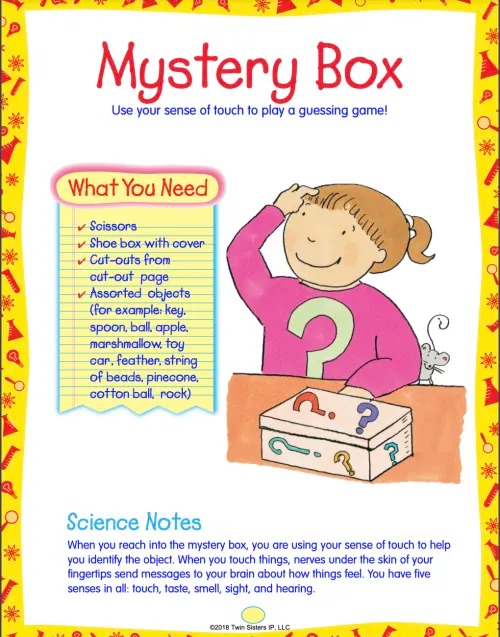
The perfect 1st grade science project can be found in Teach Simple’s Science Projects: Volume 1 resource. Your 1st graders will have fun sending different objects down ramps and comparing how far each object travels. They can also change the incline of the ramp to test whether that affects how far objects will travel.
- Flat moveable surface to use as ramp
- Rollable objects
- Marker Chromatography From Science Kids
This fun experiment combines science and art. Students will learn how substances are made up of more than one component by separating colors from ink samples through the capillary action of the water traveling through filter paper. The water dissolves the ink, causing colors to separate.
- White coffee filters
- Washable markers
- Craft stick
- Binder clip
- Paper towels
Use this activity in conjunction with other activities from Teach Simple’s Colors Science, Literacy and Math Activity Packet by KP Classroom
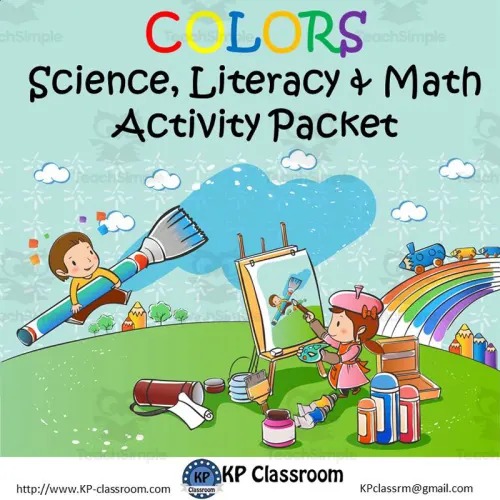
- Experiment With Milk Art From SCIENCE FUN For Everyone!
This experiment allows students to explore their creative side. As children put ink drops into the milk, point out that the drop stays in place. Introduce the concept of surface tension of water. Show how the dish soap breaks the tension.
Teach Simple’s Let’s Investigate! Hands-On Science activity book by Classroom Complete Press, includes a lab investigation worksheet to complete along with this experiment.
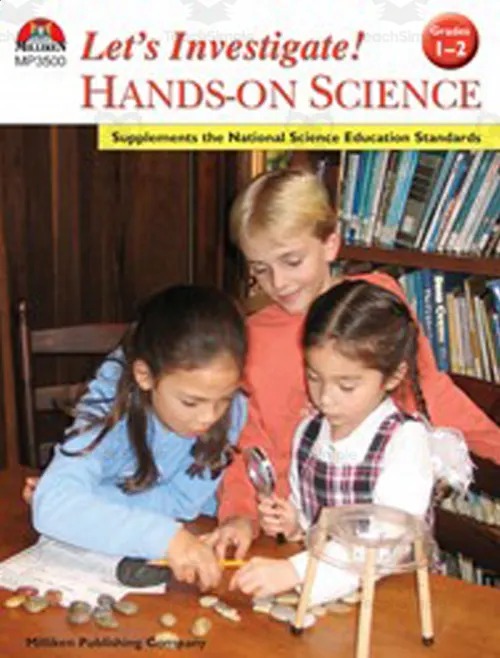
- Make Your Own Bubbles From Howcast
In addition to the fun of creating their own long-lasting bubbles, students will learn about states of matter and mixtures in this fun project.
- Optional: Glycerin
Use this lab as an extension of Teach Simple’s States of Things States of Matter activity pack by Have Fun Teaching.
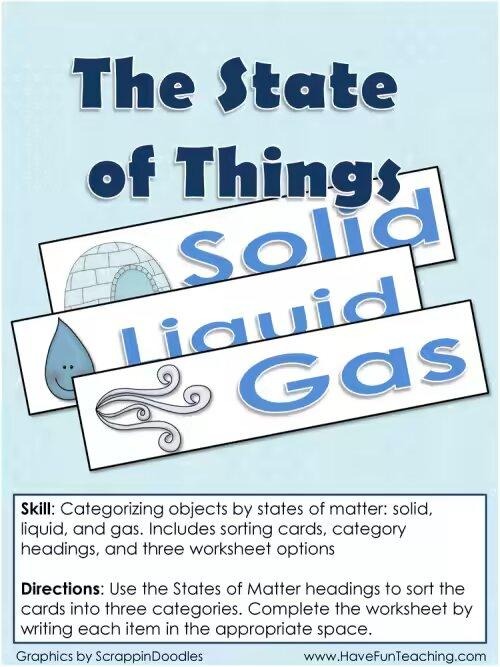
- Evapotranspiration In Plants From MooMooMath And Science
We know that plants need water to live, but what happens when they take in more than they need? Small openings in leaves release excess water vapor into the atmosphere in a process called evapotranspiration. This is an important part of the water cycle.
- Potted plant
- Clear jar that fits over plant
- Aluminum foil
You can also take the class outside and rubber band a plastic baggie around a leaf on a tree or bush.
Teach Simple’s Water Cycle Printable Activity Book contains materials to teach and review the water cycle with first graders by My Kind of Crazy.
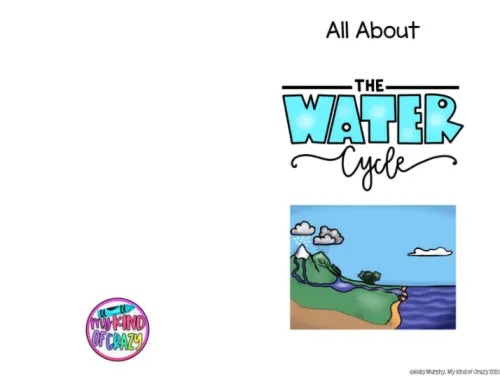
- What Do Plants Need To Grow? By Ready-Ed Publications
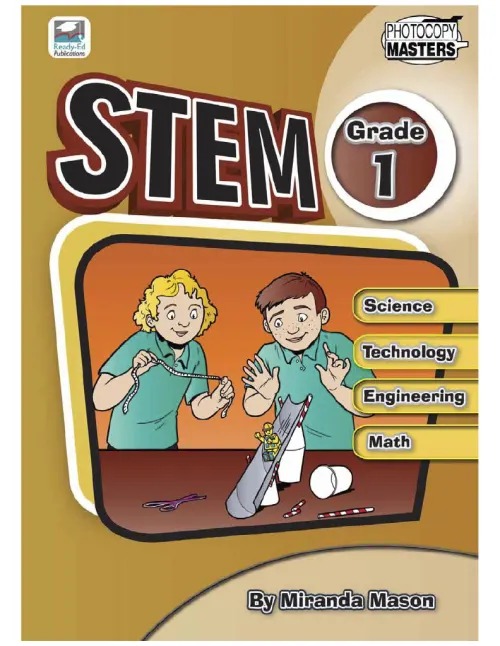
This activity from Teach Simple’s STEM Workbook- Grade 1 teaches first graders that plants need light and water in order to grow. This experiment supports lessons on plants and living vs. nonliving things.
- Masking tape
- Plant seeds
- Water
- Make Your Own Anemometer From Go Science Girls
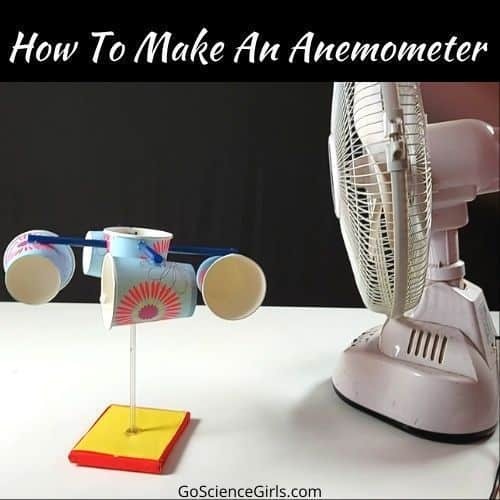
Teach kids about how to measure wind by building anemometers. Pair this fun 1st grade science project with the Weather Wise! lesson plans on weather and forecasting.
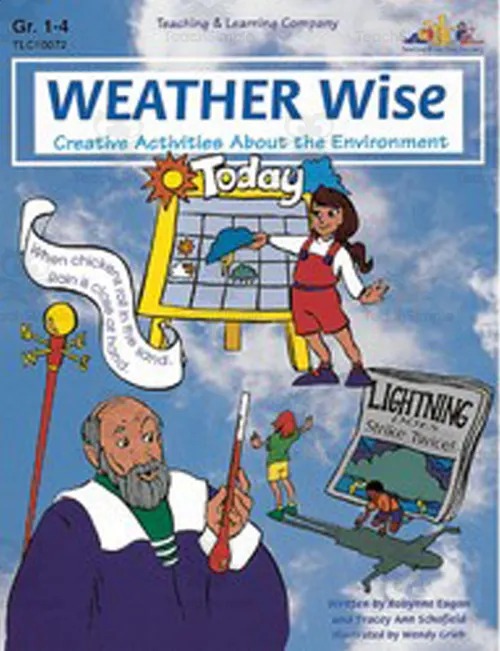
After building their anemometers, students can measure wind speeds and collect data to make weather forecasts.
- 5 small disposable cups
- Thick cardboard
- Which Foods Are The Best Conductors? From SkelangDirect
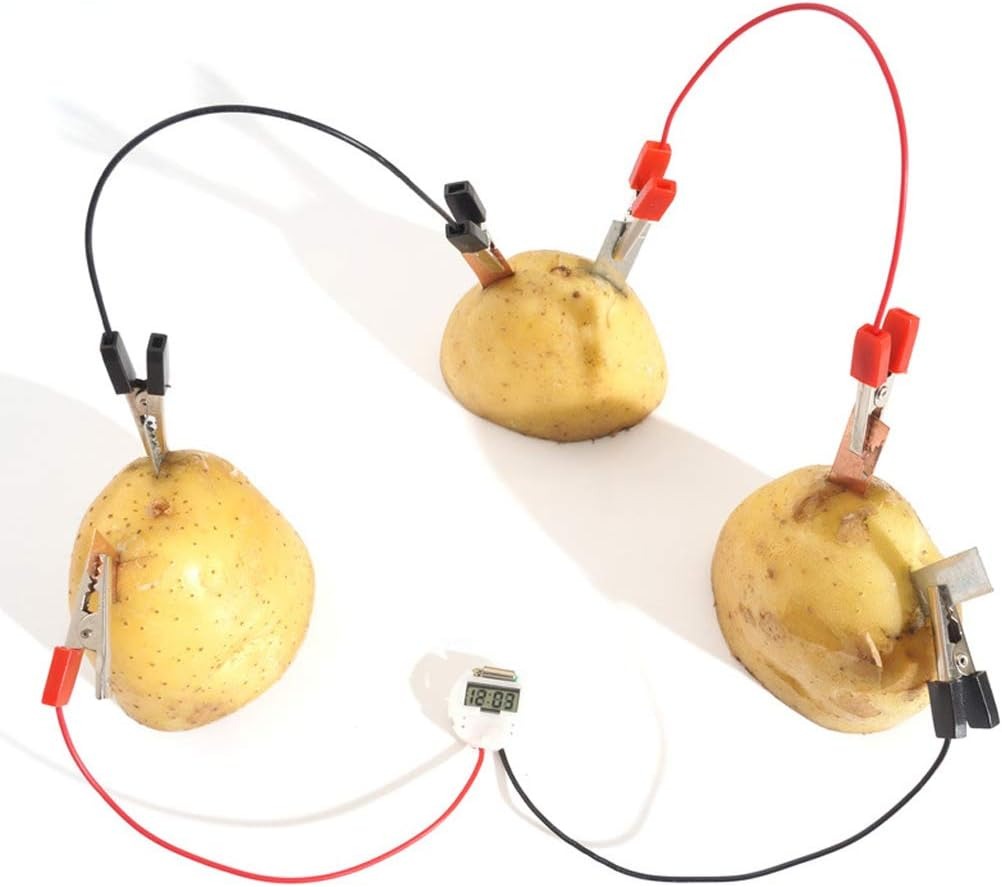
This 1st grade science fair project teaches students about how energy is conducted and the difference between conductors and insulators. The kit below includes all of the materials needed to get this project started.
Have students record their observations on Teach Simple’s Science Observation Journal Pages by Kindergarten Cafe.
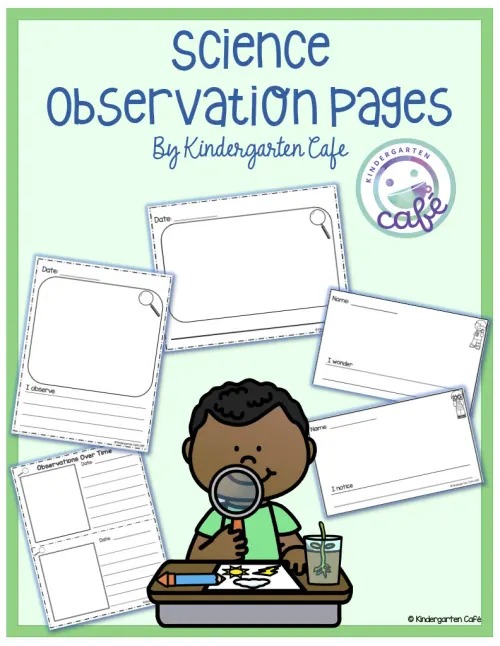
- Which Colors Absorb The Most Heat?
The procedure for this first grade science fair project is included in Teach Simple’s Let’s Investigate! Hands-On Science activity book . First graders will learn that darker colors absorb more heat while lighter colors reflect it. Engage students in a discussion about practical applications of this knowledge.
- Different colors of construction paper
Science experiments do not have to be complicated and time consuming to be rewarding. For example, the Oreo Cookie Moon Phases Model mentioned above is a fun way to teach first graders why the moon appears to be different shapes throughout the month. Children can compare their model with their Moon Phases Flashcards to check the accuracy of their edible model by Fiddleticks Education. With a quick and simple setup, this project is easy for kids and teachers to use and understand.
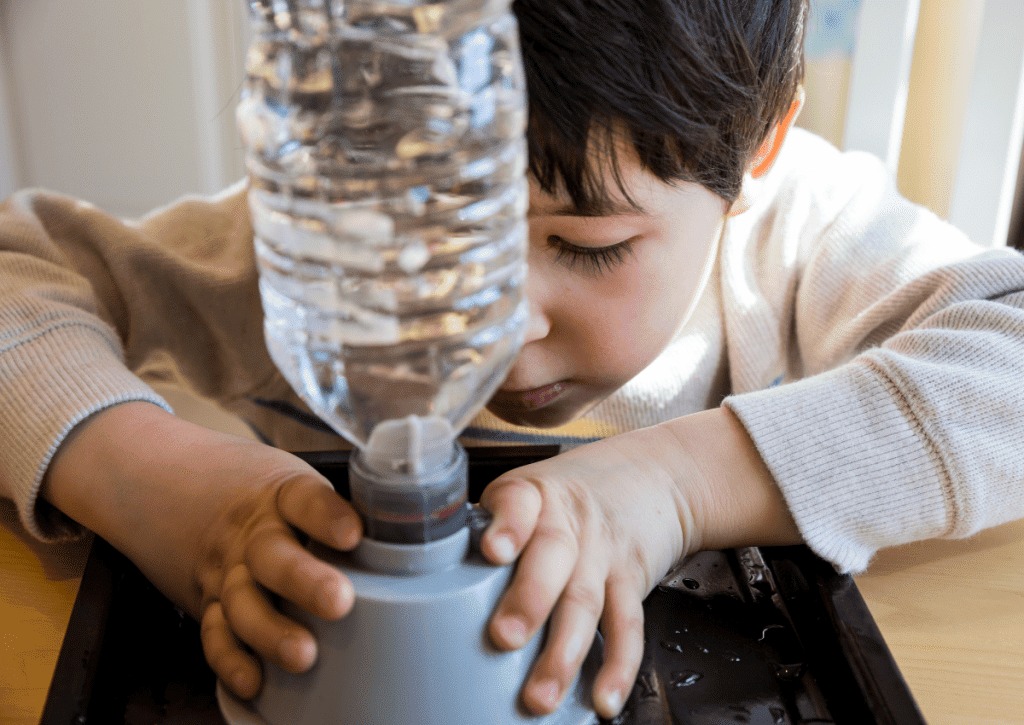
If you’re looking for more easy setup experiments, Teach Simple’s STEM Workbook has more simple yet engaging science projects. The key to 1st grade science projects is to make them interesting and relatable to your students, no matter the difficulty level.
About the Author Kelly Rende has a Masters degree in Special Education. She has been teaching middle school science and STEM courses for 18 years. When not teaching, she can be found writing or on an adventure with her children and dogs.
Share Article:
Download unlimited teaching resources, join free today, teach simple.
The team behind Teach Simple is a small but dedicated group who are passionate about education and making a positive impact on the lives of teachers and students.
We have a lot of interesting articles and educational resources from a wide variety of authors and teaching professionals.
21 English Worksheets For Grade 1 That Grab Kids’ Attention
29+ best 1st grade workbooks by teachers.
Last Updated on September 5, 2023 by Teach Simple
- Our Mission
Getting First Graders Started With Research
Teaching academically honest research skills helps first graders learn how to collect, organize, and interpret information.

Earlier in my career, I was told two facts that I thought to be false: First graders can’t do research, because they aren’t old enough; and if facts are needed for a nonfiction text, the students can just make them up. Teachers I knew went along with this misinformation, as it seemed to make teaching and learning easier. I always felt differently, and now—having returned to teaching first grade 14 years after beginning my career with that age group—I wanted to prove that first graders can and should learn how to research.
A lot has changed over the years. Not only has the science of reading given teachers a much better understanding of how to teach reading skills , but we now exist in a culture abundant in information and misinformation. It’s imperative that we teach academically honest research skills to students as early as possible.
Use a Familiar Resource, and Pair it with a Planned Unit
How soon do you start research in first grade? Certainly not at the start of the year with the summer lapse in skills and knowledge and when new students aren’t yet able to read. By December of this school year, skills had either been recovered or established sufficiently that I thought we could launch into research. This also purposely coincided with a unit of writing on nonfiction—the perfect pairing.
The research needed an age-related focus to make it manageable, so I chose animals. I thought about taking an even safer route and have one whole class topic that we researched together, so that students could compare notes and skills. I referred back to my days working in inquiry-based curriculums (like the International Baccalaureate Primary Years Program) and had students choose which animal to study. Our school librarian recommended that we use Epic because the service has an abundance of excellent nonfiction animal texts of different levels.
Teach the Basics for Organized Research
I began with a conversation about academic honesty and why we don’t just copy information from books. We can’t say this is our knowledge if we do this; it belongs to the author. Instead, we read and learn. Then, we state what we learned in our own words. Once this concept is understood, I model how to do this by creating a basic step-by-step flowchart taught to me by my wife—a longtime first-grade and kindergarten teacher and firm believer in research skills.
- Read one sentence at a time.
- Turn the book over or the iPad around.
- Think about what you have learned. Can you remember the fact? Is the fact useful? Is it even a fact?
- If the answer is no, reread the sentence or move onto the next one.
- If the answer is yes, write the fact in your own words. Don’t worry about spelling. There are new, complex vocabulary words, so use your sounding-out/stretching-out strategies just like you would any other word. Write a whole sentence on a sticky note.
- Place the sticky note in your graphic organizer. Think about which section it goes in. If you aren’t sure, place it in the “other facts” section.
The key to collecting notes is the challenging skill of categorizing them. I created a graphic organizer that reflected the length and sections of the exemplar nonfiction text from our assessment materials for the writing unit. This meant it had five pages: an introduction, “what” the animal looks like, “where” the animal lives, “how” the animal behaved, and a last page for “other facts” that could become a general conclusion.
Our district’s literacy expert advised me not to hand out my premade graphic organizer too soon in this process because writing notes and categorizing are two different skills. This was my intention, but I forgot the good advice and handed out the organizer right away. This meant dedicating time for examining and organizing notes in each combined writing and reading lesson. A lot of one-on-one feedback was needed for some students, while others flourished and could do this work independently. The result was that the research had a built-in extension for those students who were already confident readers.
Focus on What Students Need to Practice
Research is an essential academic skill but one that needs to be tackled gradually. I insisted that my students use whole sentences rather than words or phrases because they’re at the stage of understanding what a complete sentence is and need regular practice. In this work, there’s no mention of citation language and vetting sources; in the past, I’ve introduced those concepts to students in fourth grade and used them regularly with my fifth-grade students. Finding texts that span the reading skill range of a first-grade class is a big enough task.
For some of the key shared scientific vocabulary around science concepts, such as animal groups (mammals, etc.) or eating habits (carnivore, etc.), I created class word lists, having first sounded out the words with the class and then asked students to attempt spelling them in their writing.
The Power of Research Can Facilitate Student Growth
I was delighted with the results of the research project. In one and a half weeks, every student had a graphic organizer with relevant notes, and many students had numerous notes. With my fourth- and fifth-grade students, I noticed that one of the biggest difficulties for them was taking notes and writing them in a way that showed a logical sequence. Therefore, we concluded our research by numbering the notes in each section to create a sequential order.
This activity took three lessons and also worked for my first graders. These organized notes created an internal structure that made the next step in the writing process, creating a first draft of their nonfiction teaching books, so much easier.
The overall result was that first graders were able to truly grasp the power of research and gathering accurate facts. I proved that young children can do this, especially when they work with topics that already fascinate them. Their love of learning motivated them to read higher-level and more sophisticated texts than they or I would normally pick, further proving how interest motivates readers to embrace complexity.
Get Your ALL ACCESS Shop Pass here →

35 Science Projects For 1st Graders
Curious kids turn into junior scientists with these fun and simple science projects for 1st graders. Science doesn’t need to be difficult or complicated! Here’s our list of the best first grade science activities that are totally doable and use simple supplies for home or in the classroom.
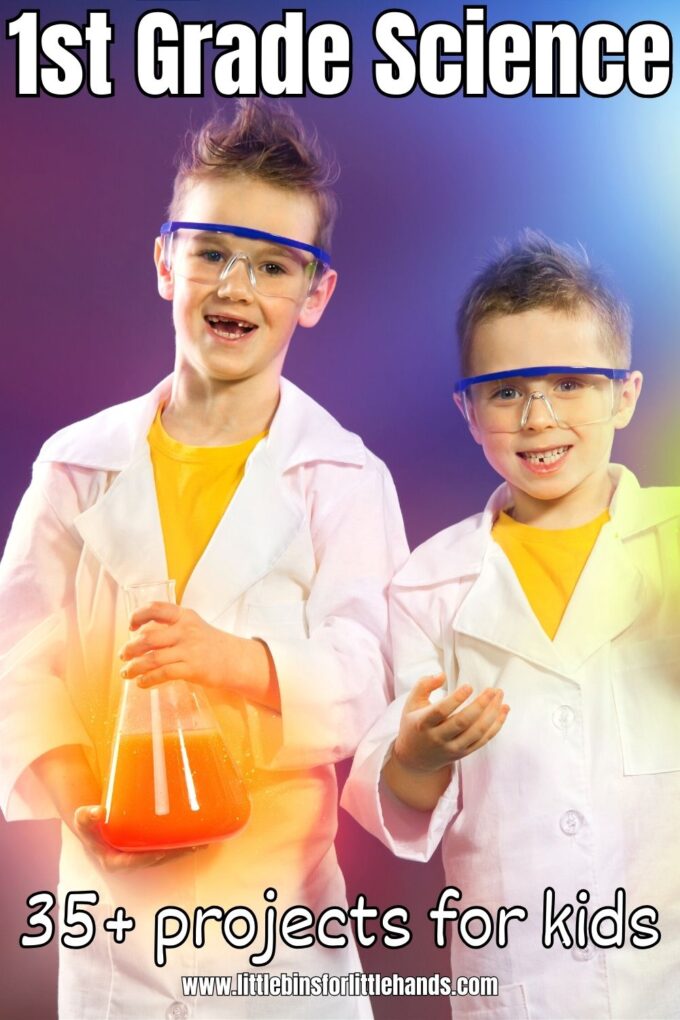
What Do First Graders Do In Science?
At this stage, the emphasis is on cultivating curiosity, honing observation skills, and fostering a love for discovery. The first grade science curriculum typically covers a diverse range of topics, encouraging students to engage in hands-on activities that make learning both immersive and enjoyable.
First Grade Science Topics Include:
- Living and Non-Living Things: Students learn to differentiate between living organisms (plants and animals) and non-living things (objects and materials). They explore the characteristics and behaviors that define living things.
- Plants : First graders discover the life cycle of plants, from seed germination to growth and reproduction. They learn about the role of sunlight, water, and nutrients in plant development.
- Animals: Students explore various animal species, their habitats, and basic characteristics. They learn about different types of animals, their body parts, and how they adapt to their environments.
- Weather and Seasons : Children are introduced to basic weather patterns and the four seasons. They learn about the different types of weather conditions and how they change throughout the year.
- Basic Earth Science : First graders might learn about the Earth’s landforms (mountains, valleys, etc.) and bodies of water (rivers, lakes, oceans). They also explore concepts like day and night and the rotation of the Earth.
- Matter and Materials : Students are introduced to different types of materials (solid, liquid, gas) and their basic properties. They learn to describe and compare materials based on attributes like color, texture, and size.
- Energy and Forces : Young learners are introduced to the concept of energy and different forms of energy like light and sound. They might explore simple machines and basic forces like pushing and pulling.
- Light and Shadows : First graders might learn about sources of light, how light travels, and how shadows are formed. They observe and experiment with light to understand its properties.
Get your FREE Science Activities Calendar
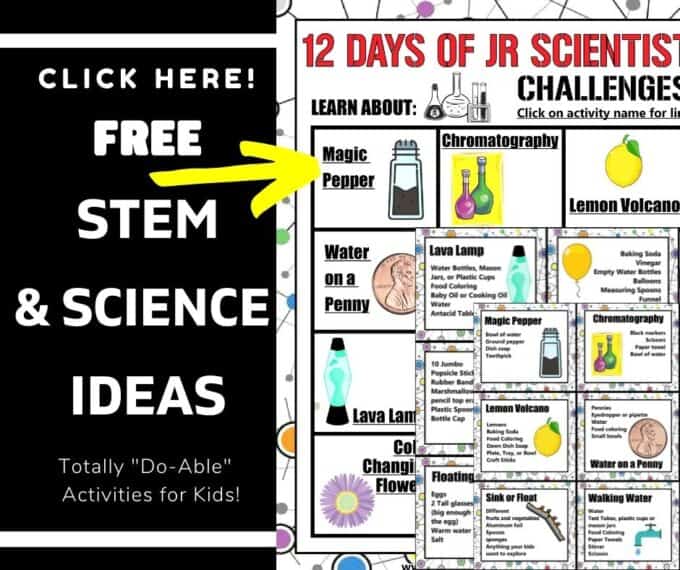
35 Awesome Science Projects for First Graders
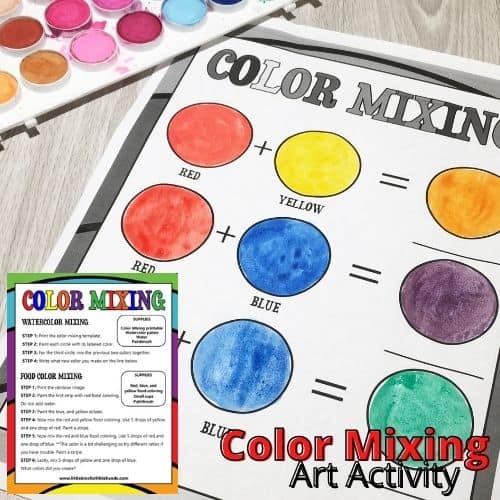
Color Mixing
Use watercolors to learn how mixing primary colors creates different colors.

Sink or Float Experiment
Grab some everyday objects and a container of water to explore the concept of density and why some objects sink while others float.
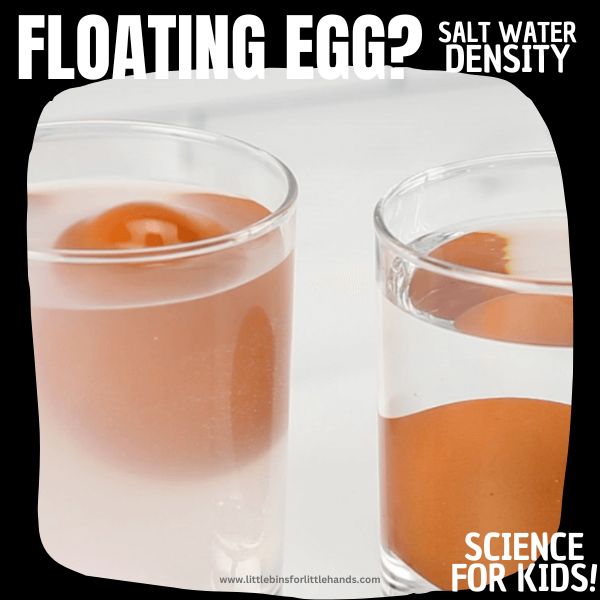
Egg In Salt Water
Will an egg float or sink in salt water? Ask lots of questions and get kids thinking with this salt water density experiment.
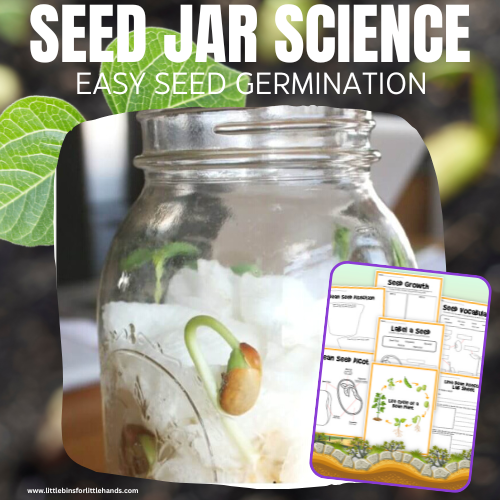
Seed Germination
Use a seed jar to observe how plants grow from seeds and what they need to survive.
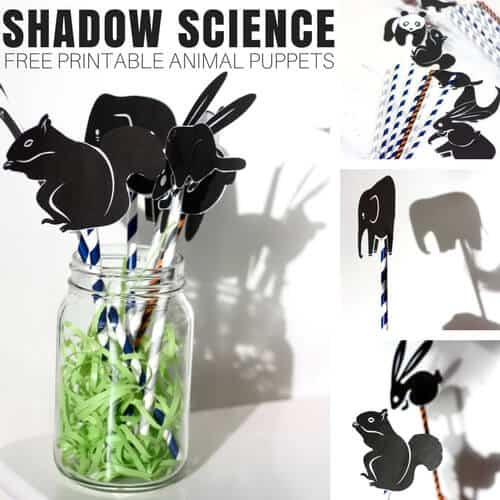
Shadow Puppets
Make these fun printable shadow puppets to explore how light interacts with objects and creates shadows.
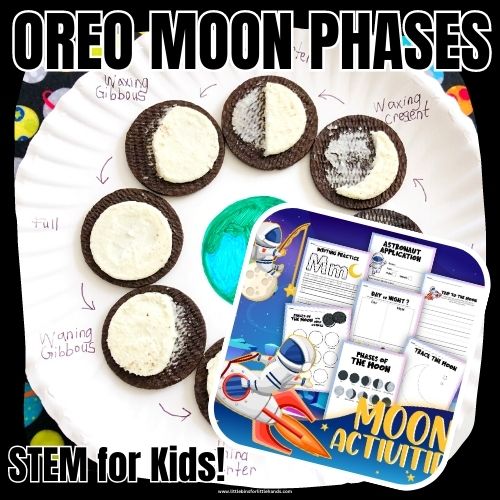
Edible Moon Phases
Use oreo cookies to create the phases of the moon to explore how the moon changes as it moves around the earth.
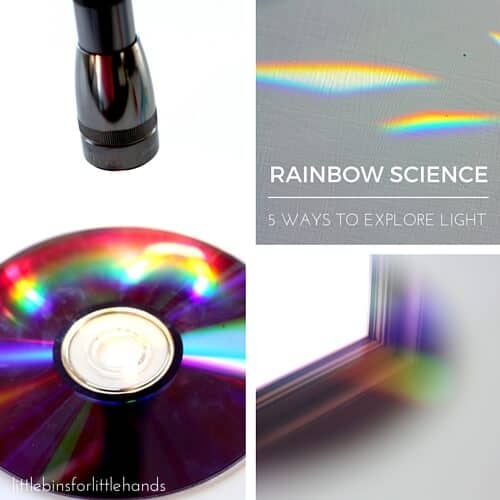
Make Rainbows
Use a simple glass prism, and other ways to see how light is made up of different colors and can be separated into a rainbow.
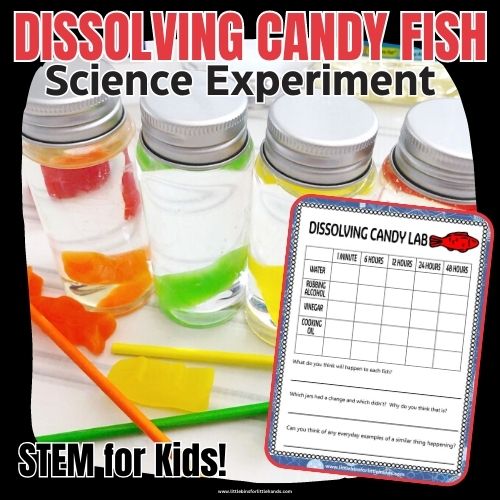
Dissolving Candy
Add some hard candy to different liquids to explore how substances dissolve in some liquids but not others.
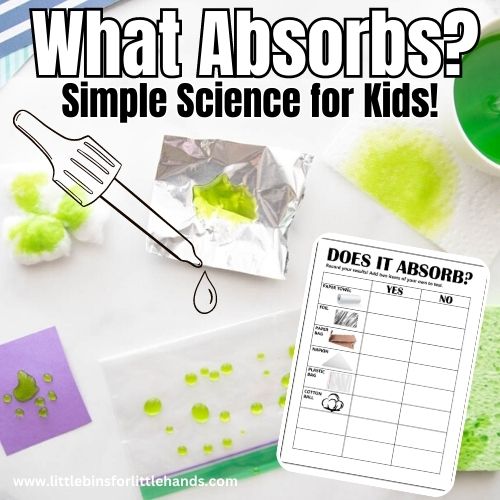
What Absorbs Water
Explore what materials absorb water and what materials do not absorb water. Use items you already have on hand for this easy science project.
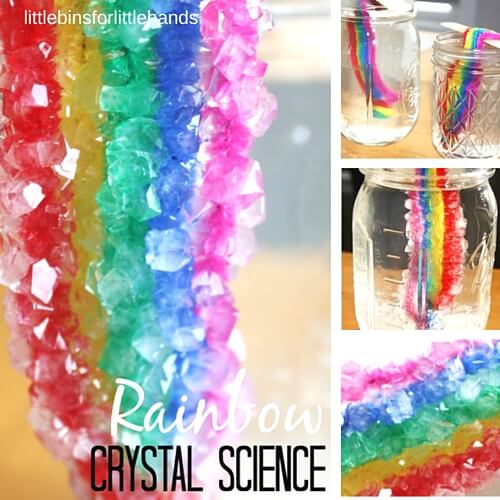
Grow Borax Crystals
Learn about how crystals are formed and can take different shapes. You can grow crystals from borax , salt and sugar .
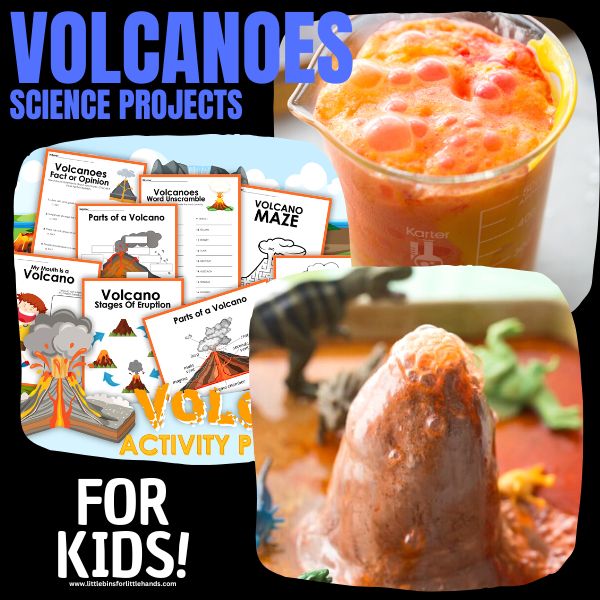
Make a Volcano Eruption
Kids will love this erupting chemical reaction with just two simple ingredients, baking soda and vinegar. Also try one of these fun variations with LEGO , a water bottle , apple and even a pumpkin .
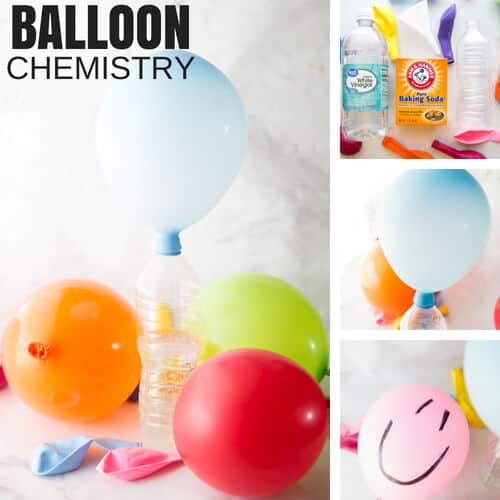
Inflating Balloon
Observe gas production during a chemical reaction with this fun balloon science experiment. You can also set it up with soda and salt to observe a physical reaction.

What’s Magnetic and What’s Not
Explore how magnets attract and repel each other.
Solid, Liquid, Gas Experiment
Observe how water can change from a solid to liquid and back.

Rain Cloud In A Jar
Where does rain come from? How do clouds make rain? Explore weather science with this rain cloud in a jar activity. Also, try this shaving cream rain cloud model.

Balloon Rocket
What can you do with a balloon and a straw? Build a balloon rocket, of course and explore Newton’s Laws of Motion.

Make a Windmill
Explore the concept of harnessing wind as a energy source with a simple to make windmill or wind turbine.
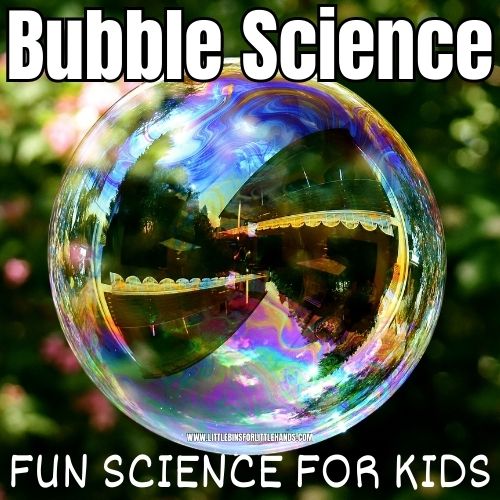
Bubble Science
Bubbles are just fun to play with! Learn how bubbles form and why they’re round with these bubble activities. It’s all to do with surface tension.
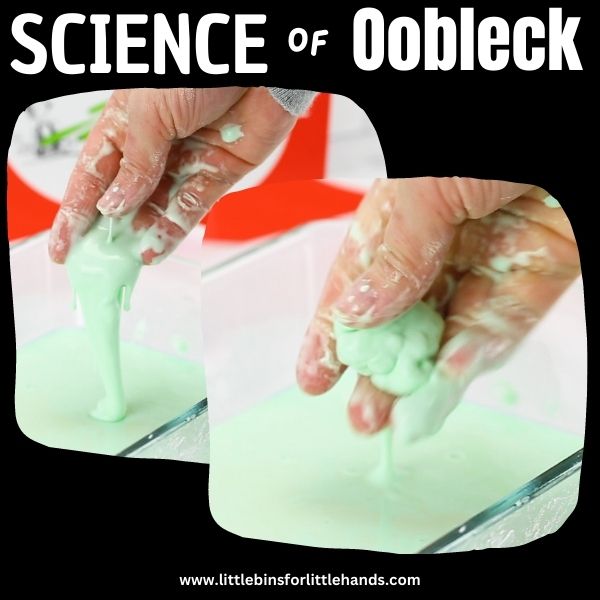
Is it a liquid or is it a solid? Fun hands-on science and play with our easy 2 ingredient oobleck recipe.
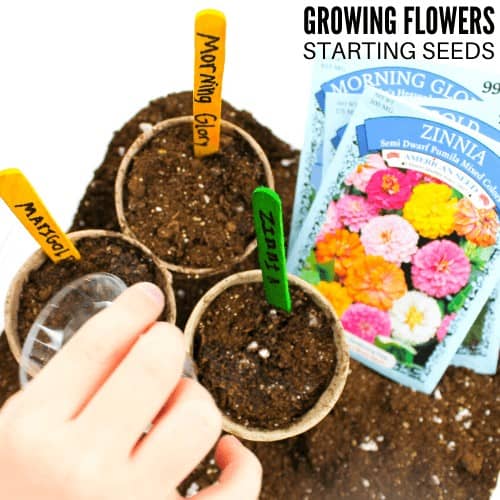
Grow Flowers
Watching flowers grow is an amazing science lesson for kids. Check out our list of the best seeds for kids to pick up and plant, and grow quickly.
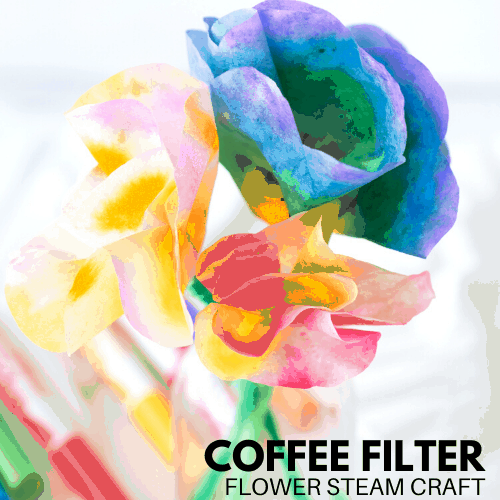
Coffee Filter Flowers
Coffee filter flowers are a colorful STEAM activity for kids to explore solubility. Color a coffee filter with markers and spray with water for a fun effect.
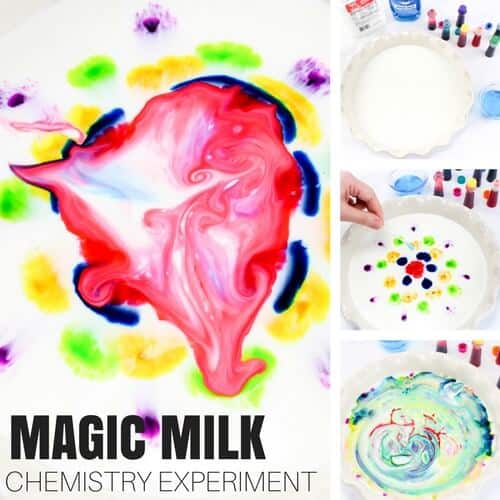
This magic milk experiment is fun for kids to watch and makes for great hands-on learning. The perfect science activity as you already have all the items for it in your kitchen.
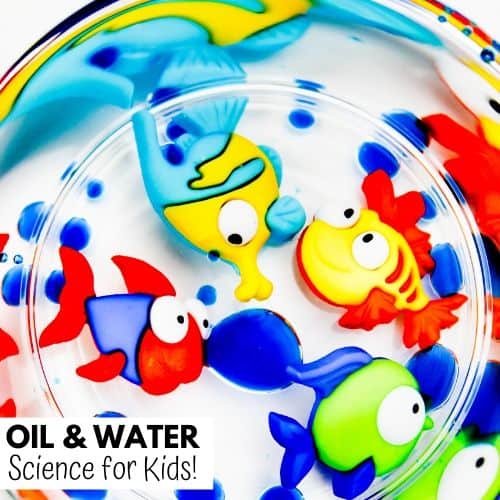
Oil and Water
Find out why oil and water don’t mix with this simple to set up science project. It is all due to differences in density.

Lemon Battery
Grab some lemons and a few other supplies, and find out how you can make lemons into lemon electricity!
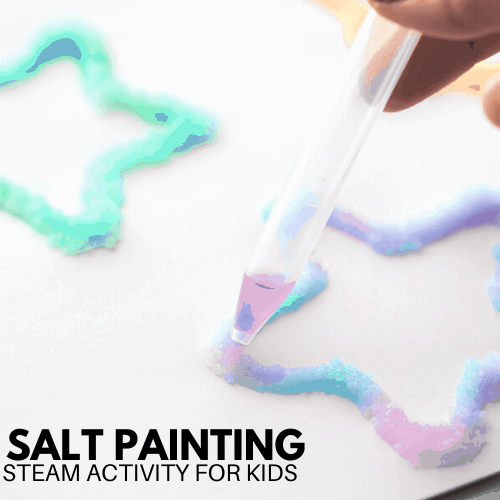
Salt Painting
Combine science and art to learn about absorption with this easy salt painting activity.
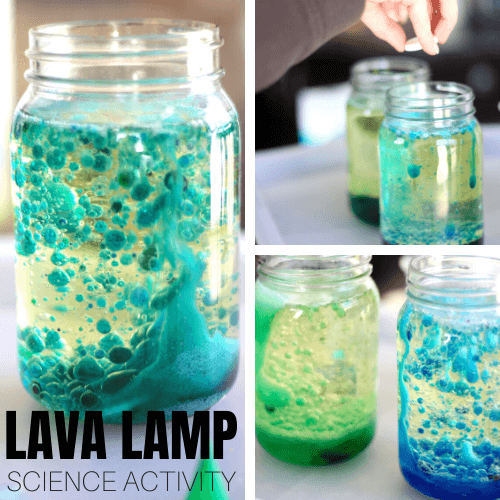
Add a chemical reaction to an oil and water experiment to create a homemade lava lamp.

Rainbow in a Jar
Create liquids with different densities that you can make a colorful layered liquid tower with.
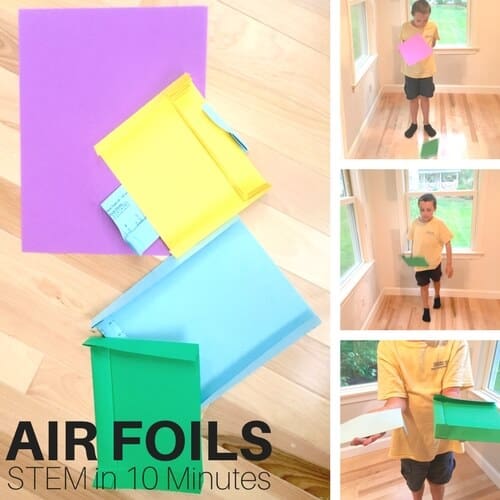
Make Air Foils
Explore the effect air resistance has on a falling object with these to make paper air foils.
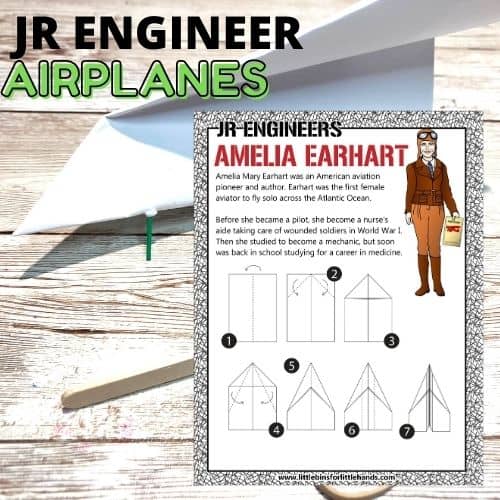
Paper Airplane Launcher
Learn how design affects the flight of paper airplanes with a paper plane launcher.

Water Xylophone
Use different amounts of water in glass jars to learn about how vibrations create sound waves.

Egg in Vinegar
What happens to an egg when it is left in vinegar for a few days? Observe how an acid reacts with and dissolves a shell.
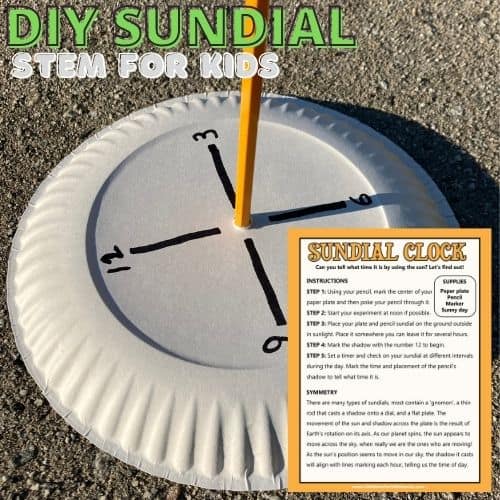
Make A Sundial
This paper sundial is an easy way to understand how shadows change over time.
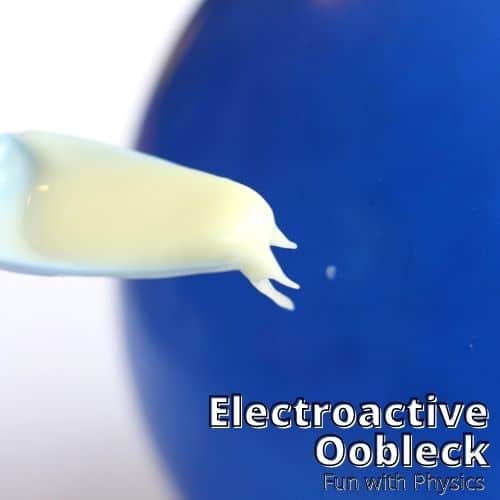
Electric Cornstarch
All you need is oil and water to explore static electricity with a balloon.

Toy Car Friction
Use a toy car and different types of materials to explore how friction affects the movement of an object.
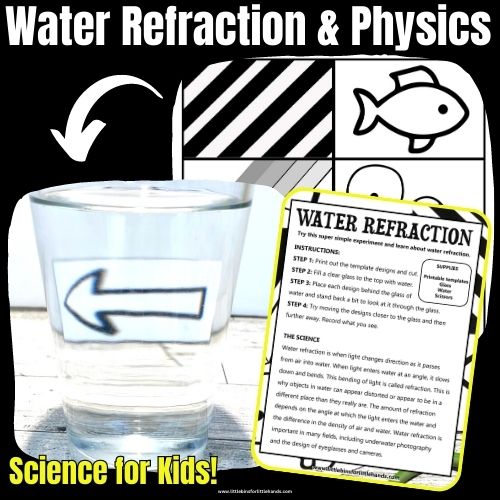
Water Refraction
Demonstrate how refraction of light occurs in water with this simple water refraction experiment.
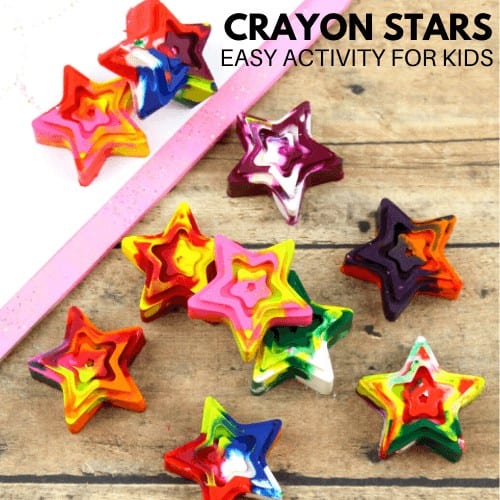
Melting Crayons
Learn how heat causes crayons to melt. It’s a great example of a physical change.
Turn It Into A Science Fair Project
Science projects are an excellent tool for older kiddos to show what they know about science! Plus, they can be used in all sorts of environments including classrooms, homeschool, and groups.
OUR TOP TIP: Pick a project that your child has expressed interest in. Engaging your child in this process will be much easier when they are the driving force behind it !
Kids can take everything they have learned about using the scientific method , stating a hypothesis, choosing variables , making observations and analyzing and presenting data.
Want to turn one of these experiments into an awesome science fair project? Check out these helpful resources.
- Science Project Tips From A Teacher
- Science Fair Board Ideas
- Easy Science Fair Projects
Free Printable Science Journal Worksheets
Create a science notebook with these easy-to-use science worksheets to accompany any experiment. Grab your free science process journal pack !

Using The Scientific Method
The scientific method is a process or method of research. A problem is identified, information about the problem is gathered, a hypothesis or question is formulated from the information, and the hypothesis is tested with an experiment to prove or disprove its validity.
Sounds heavy… What in the world does that mean?!? It means you don’t need to try and solve the world’s biggest science questions! The scientific method is all about studying and learning things right around you.
As children develop practices that involve creating, gathering data evaluating, analyzing, and communicating, they can apply these critical thinking skills to any situation.
LEARN MORE HERE: Using The Scientific Method with Kids
Note: The use of the best Science and Engineering Practices is also relevant to the topic of using the scientific method. Read more here and see if it fits your science planning needs.
Helpful Science Resources
Here are a few resources that will help you introduce science more effectively to your kiddos or students. Then you can feel confident yourself when presenting materials. You’ll find helpful free printables throughout.
- Best Science Practices (as it relates to the scientific method)
- Science Vocabulary
- 8 Science Books for Kids
- All About Scientists
- Science Supplies List
- Science Tools for Kids
- Join us in the Club
Printable Science Projects Pack
If you’re looking to grab all of our printable science projects in one convenient place plus exclusive worksheets and bonuses like a STEAM Project pack, our Science Project Pack is what you need! Over 300+ Pages!
- 90+ classic science activities with journal pages, supply lists, set up and process, and science information. NEW! Activity-specific observation pages!
- Best science practices posters and our original science method process folders for extra alternatives!
- Be a Collector activities pack introduces kids to the world of making collections through the eyes of a scientist. What will they collect first?
- Know the Words Science vocabulary pack includes flashcards, crosswords, and word searches that illuminate keywords in the experiments!
- My science journal writing prompts explore what it means to be a scientist!!
- Bonus STEAM Project Pack: Art meets science with doable projects!
- Bonus Quick Grab Packs for Biology, Earth Science, Chemistry, and Physics

Subscribe to receive a free 5-Day STEM Challenge Guide
~ projects to try now ~.

.png?width=1270&height=453&name=Copy%20of%20Kid%20Spark%20Logo%20(Horizontal%20-%20Full%20Color).png)
Main navigation
- District Solutions
- Pre-K - 1st Grade STEM Program
- 2nd - 5th Grade STEM Program
- 6th - 8th Grade STEM Program
- Professional Learning
- Robotics & Coding Tutorials
- Rapid Prototyping & 3D Printing Tutorials
- MakeCode for Spark:bit
- 3D Virtual Parts Library
- About STEM Labs
- Foundational Fluencies STEM Lab
- STEM Pathways Lab
- Replacement Parts
- Announcements
- 858.259.4433
Kid Spark Education Blog
Fun spring stem science projects for 1st graders, spring is just around the corner, which makes it the perfect time to explore fun new science projects with your first grade class here’s a list of engaging stem activities to try this spring..
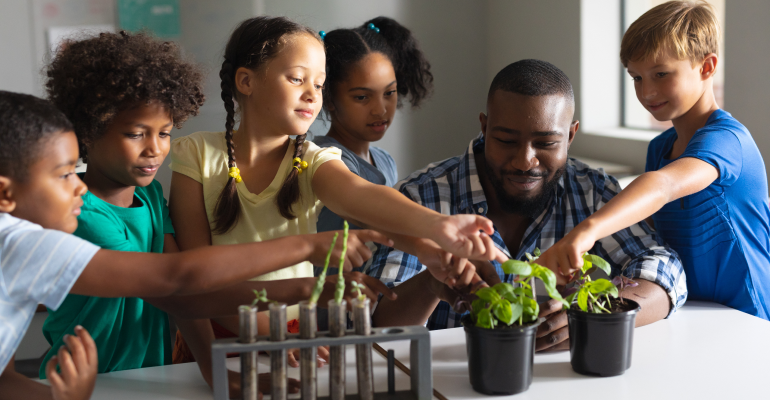
As winter thaws, spring blossoms with new ways to explore the natural wonders outside the classroom. From new floral growth and new fauna births to investigating the building blocks of the natural and physical world around us, spring is a wonderful time to bring the topics of science to life for young learners.
Here are some fun and easy STEM science projects for your first grade class this spring.
STEM Science Projects for 1st Graders
In the first grade, students are naturally curious about the natural world and how things work. This opens the doors for opportunities for classroom science projects that introduce the foundational fluencies of STEM .
1st Grade Science Project Ideas for the Classroom
STEM science projects for the first grade should be simple, fun, and engaging. These young learners are already curious about the world around them and are excellent creative thinkers. Being able to connect the real-world outdoors to the concepts they’re learning in the classroom is a powerful way to kickstart their STEM knowledge and set students up for success in their STEM education.
1. Explore the Great Outdoors
Once the weather warms, it’s a great time to venture out of the classroom and explore the great outdoors with your first grade class.
Nature Bingo is a fun and easy spring STEM activity that will have your first graders excited to discover the natural world around them. You can download nature bingo templates online from a number of resources, including the Massachusetts Audubon Website , which offers free downloads of nature bingo for all four seasons.
If you’re feeling especially creative, you can always create your own Nature Bingo cards with local rarities and finds!
2. Use Natural Resources
A fresh update on the decades-old egg-carrying activity goes beyond teaching students about empathy, compassion, and the messiness of a broken egg—but teaches them about resourcefulness, recycling, and how animals care for their young in nature.
First, introduce recycling and reuse in the classroom—this Reducing Our Impact on Earth lesson plan can help get you started. Then, using this nest-assembling lesson plan , invite your first graders to build a nest for an egg using all recycled materials. They can be from nature, the recycling bin, or a new way to reuse an old item.
Have each student assemble their nests in class to create a soft and safe place for an egg to land, just as birds do for the eggs in their nest.
By integrating multiple lessons and activities, students get to see the connection between life and natural resources and how to be resourceful in their daily lives.
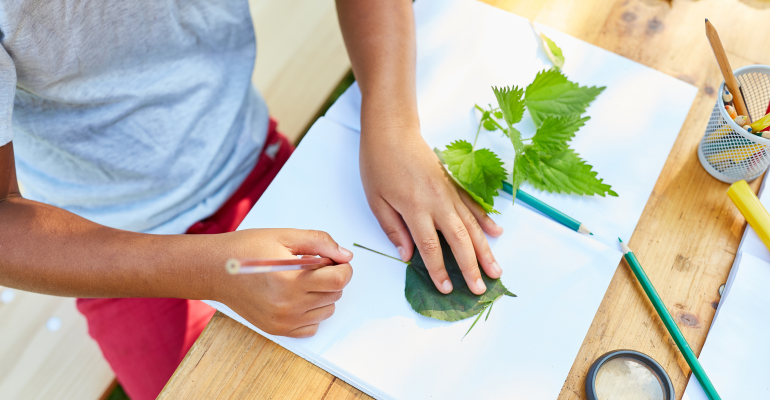
3. Integrate Science into Other School Subjects
Add science lessons to other school subjects throughout the day to keep students engaged in STEM and notice the connections STEM has to their other learning activities.
One way to do this is to add STEM books during storytime where you can discuss new ideas with your class and invite their own curiosities and creative thoughts.
Another way to integrate STEM subjects is to provide context for a lesson plan. For example, in Cougar Crossing by Meeg Pincus, a cougar named P-22 makes an treacherous journey across Los Angeles, inspiring the construction of a wildlife bridge across Highway 101 so other animals don’t have to make the same trip. Pairing this storybook with the engineering and bridge building exercises in Kid Spark’s 1st grade STEM program is an excellent way to bring context and understanding of how STEM applies to the real world.
We’ve made a list of our 8 Best Picks for STEM Reading in Elementary School Classrooms , but you might also enjoy these science-specific reads:
- Cougar Crossing by Meeg Pincus
- A Warmer World by Caroline Arnold
- Fairy Science by Ashley Spires
- What’s the Weather by Fraser Ralston and Judith Ralston
You might also take advantage of spring’s good weather with outdoor math activities, like creating a giant outdoor chalk clock or bowling with numbers .
4. Celebrate Earth Day
Teach your first graders to connect with nature and give back to the earth with fun Earth Day science activities for spring.
The Sode Bottle Compost activity is a fun hands-on science activity that can keep students entertained for weeks. Incorporate compost journals or use the compost bottles to inspire conversations in the classroom about decomposition and the natural cycles of regeneration on Earth.
Or, explore these recycling games and resources from PBS to practice year-round conservation.
5. Follow the Stars
What better way to engage students in a lifelong curiosity in science than connecting lessons to current events? By following the latest astronomical events, you can time classroom lesson plans to correspond with space events like meteor showers, visible planets, or eclipses.
Inspire and excite your first grade class with activities like Understanding Light Pollution (with only black construction paper and a flashlight), building NASA Soda-Straw Rockets , or exploring energy and movement while learning how the Moon got its craters with this Creating Craters STEM Activity . With just a few materials (and a spacious area to get a little messy), this fun science project will have your first graders eager to explore space on their own.
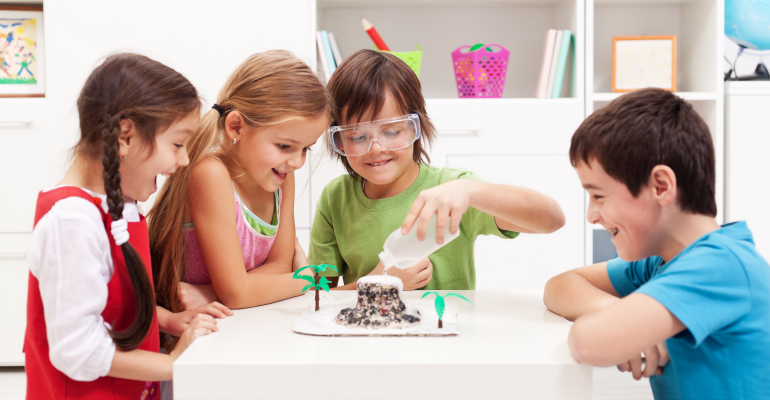
6. Discover Design and Construction
Now that it’s warm enough to go outside, it’s time to take in the local engineering sights of bridges, buildings, and structures. Spring science projects aren’t just for life and earth sciences, it’s a great time to practice design, building, and construction.
At Kid Spark, our Foundational Fluencies STEM Lab helps students discover the fundamental elements of STEM for a headstart in their STEM education. With a combination of lesson plans, design challenges, and free-building activities, first grade students are introduced to the building blocks of STEM with all the teaching materials and reusable materials you need!
7. Utilize Outside Space
Some science projects are just too big for the classroom, and springtime is an excellent time to venture outdoors for some larger-than-life science experiments.
Take the Soda Explosion science project , for example. With some Diet Coke, Mentos, and construction paper, you’ll have a memorable outdoor science project to highlight chemical reactions, pressure, and the force of carbon dioxide.
Or, utilize the power of the sun for fun science craft projects like making sun prints .
8. Cultivate New Growth
Celebrate the spring season with new ways to explore the plant life cycle with your first grade class. Learning how plants grow can create a new appreciation for nature in young students and help them see the connections between STEM at school and STEM in the real world.
Growing a seed jar is a perfect spring science project that helps first graders understand how a plant grows from a single seed. Or, create your own plantable seed paper as a class and let students add their own designs to the final product. (These also make unique Mother’s Day gifts!)
For more fun STEM science projects for first grade, check out the free resources available through sites like NASA or PBS .
1st Grade STEM Curriculum with Kid Spark
Kid Spark Education’s mission is to provide access to STEM education for all students. We know that students thrive with early and consistent access to STEM, and we’re passionate about developing science-backed STEM curricula to support students on their lifelong journey through STEM.
That’s why we craft specialized STEM science projects for students from Pre-K—8th Grade. Our lesson plans are designed to meet The Next Generation Science Standards (NGSS) and are sequentially designed to build on previous STEM knowledge from previous lessons and activities.
While fun spring science projects play an important role in exploring new STEM concepts, a structured STEM curriculum helps students define their learning through convergent and divergent learning activities to build the foundations of STEM success.
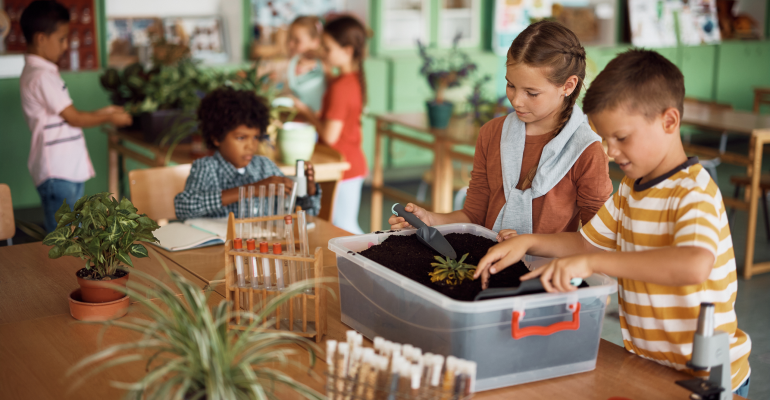
The Benefits of Designing STEM Science Projects Within a Curriculum
Here are just some of the benefits of science-backed STEM lesson plans and science projects for first graders:
- Compounding Knowledge
Kid Spark STEM programs start at Pre-K and extend to the 8th grade. Within these years, students are building on their STEM education from previous years and being challenged with new ways to utilize their STEM knowledge.
Because Kid Spark STEM programs are designed for multiple grade levels, units of instruction, lesson plans, and design challenges, each aspect of the curriculum fits into a larger whole. This comprehensive approach provides the highest quality STEM education and prevents learning gaps throughout the different grade levels.
- Consistent Education
Just as important as early access is consistency when providing effective STEM instruction. Kid Spark STEM programs follow a consistent schedule for regular science projects and activities that can take place throughout the school year.
Other science projects (like the ones listed above) are great for interspersing throughout these structured lesson plans and activities, but the consistency of a comprehensive curriculum creates a solid foundation for young learners to rely on for regular engagement with STEM concepts.
- The Right Amount of Challenge
Kid Spark programs are designed to keep students in the Zone of Proximal Development - a concept created by psychologist Lev Vygotsky. It is in this zone where students feel challenged, excited, alive, engaged, and motivated and where the most learning and development occur.
Finding this zone in STEM lesson planning requires designing activities that are engaging and approachable but not too simple and not too difficult. This Goldilocks zone should not be too easy and within the realm of what a student can already do (as they would get bored too easily), nor should it be too challenging and beyond a student’s reach (as they might get discouraged and give up).
At Kid Spark, we create lesson plans and activities that keep students of all levels engaged and just challenging enough to find the zone of proximal development. For students of all backgrounds and abilities, our lesson plans can be adapted so that everyone is included and motivated to learn.
- STEM Integration
With a comprehensive curriculum, first grade students are exposed to all subjects of STEM. Aligning with NGSS, our lessons, and activities build the foundations of STEM across multiple subjects.
From the earliest STEM program, first graders become well-versed in critical thinking, logical and sequential reasoning, and creative problem-solving. All these skills can be utilized in science, technology, engineering, or mathematics—forming a formidable foundation on which more complex STEM subjects can be built.
- Tools for Teachers
Finally, another benefit of utilizing a designed STEM curriculum for your first grade class is the library of tools and resources you gain as an educator.
Not only do you receive an all-in-one solution complete with curriculum, instruction tools, lesson plans, activities, unit assessments, rubrics, and reusable materials, but you also receive professional learning resources so you can feel confident in the STEM ideas you’re sharing with your class.
Rather than purchasing or finding resources and materials for individual science projects and lesson plans, you have everything you need in a single STEM program designed with you and your students in mind.

How to Get Started with Kid Spark’s 1st Grade Science Projects
If you’re ready for an all-in-one STEM solution for your first grade classroom, connect with us today to plan your program .
We’re dedicated to exposing students to STEM early and often and supporting STEM mentors like you to help lead them on their educational journey. While ease of adoption and program costs have historically kept STEM out of elementary education, Kid Spark is the lowest-cost school-wide STEM solution available and has been readily adopted by elementary teachers across the nation.
Contact us today for any questions about bringing Kid Spark STEM programs to your school.
Topics: STEM Activities , Elementary STEM Education , stem , k-8 , elementary school , stem programs , elementary , elementary schools , science , 1st Grade
Written By Jordani Sarreal
Would you like to receive more information about starting a kid spark stem program for your students , go beyond the buzzword with kid spark..
At Kid Spark Education, STEM isn't a buzzword: it's a powerful way to nurture students' natural curiosity; build confidence and skills in science, technology, engineering, and math; and foster abilities in collaboration, problem-solving, and communication. You, their teachers, are our most important partner in achieving our mission of preparing all children for a lifetime of learning about science and technology. The Kid Spark Blog is written by educators, for educators to be a resource in your toolbox so you can feel confident and capable in teaching STEM to your elementary students.
Recent Posts
Post by topics.
- STEM Education (32)
- Elementary STEM Education (31)
- STEM Activities (26)
- Kid Spark Education (10)
- STEM kits (9)
- middle school stem (9)
- Professional Development (8)
- STEM mentors (8)
- stem programs (8)
- Preschool (7)
- curriculum (7)
- STEM classroom kit (6)
- elementary (6)
- middle school (6)
- stem and early childhood (6)
- elementary school (5)
- resources (5)
- 5th grade (4)
- elementary schools (4)
- funding (4)
- learning experiences (4)
- science (4)
- 1st Grade (3)
- 2nd Grade (3)
- 6th grade (3)
- STEM Challenges (3)
- administration (3)
- early childhood (3)
- engineering (3)
- integrating curriculum (3)
- kindergarten (3)
- learning labs (3)
- robotics (3)
- 3d printing (2)
- STEM Identity (2)
- after school stem (2)
- afterschool (2)
- implementation (2)
- mobile stem labs (2)
- reading (2)
- stem math curriculum (2)
- After School (1)
- Computer Science (1)
- best of (1)
- education (1)
- learning (1)
- stem enrichment (1)
All Science Fair Projects
1000 science fair projects with complete instructions.

59 Science Projects for 1st Graders
Discover first grade science experiments that can spark curiosity! Our carefully selected science projects are designed to teach kids with fun hands-on learning and inspire them to love science!
1st Grade Science Project FAQ
What are some easy first grade science experiments.
Each one of these first grade science experiments are easy to set up and do, plus first graders will have tons of fun while learning about science. These easy first grade science experiments are a great way to introduce the wonders of science to kids!
Make a Parachute
Mixing Colors of Light
Camouflage and Hide
Baking Soda Volcano
The Invincible Soap Bubble
Jumping Rice Krispies
Balloon-Powered Rocket Car
Exploring Air
Swimming Raisins
Light and Dark on Seed Germination
Details of these science fair projects right above the FAQ!
What is the best 1st grade science project ever?
The Magic Milk Experiment is our top pick among all the 1st grade science projects! It's magical for first graders to see that without stirring, the different colors of food coloring are in perpetual motion. It's also a simple chemical reaction experiment to set up with milk, dish soap, and food coloring.
If you're looking for more 1st grade science projects, check out the 1st grade science fair projects at the top of this page!
Check out more Best Science Fair Projects →
What are some cool 1st grade science fair projects?
Get ready to be amazed by these super cool science projects for 1st graders! With just a few simple things, first graders will be fascinated by rice krispies jumping up and down with static electricity, a chemical reaction making raisins bobbing up and down or rock candy that they made themselves! These first grade science projects put the cool into science!
Magic Milk Painting
Sparkling Rainbow Crystal
Rock Candy: Sweet Science
More details on these science fair projects right above the FAQ!
What are 5 testable questions for 1st grade?
A testable question is a question that we can answer through a science experiment. To do this, we do a control science experiment, then we change one thing in the experiment to see how it affects what happens. This is how we can discover the answer to our question!
What makes a cloud form?
Can drink and food taste different just by changing its color?
Does the color of light affect photosynthesis?
Does temperature affect seed sprouting?
What makes popcorn pop?
Here are more testable questions along with their science projects →
What are the top 10 science projects for 1st grade?
These are our top 10 science projects for 1st grade, with projects from Biology, Chemistry and Earth Science. These projects can be used as science fair project ideas or as a fun experiment to explore different areas of science!
Check out the science project details above the FAQ!
Can I do a 1st grade science fair project in a day?
Yes! Quick experiments can be a great option for a science fair project! We have a variety of quick science project ideas to get you started.
Colors of Skittles Experiment
Check out the science fair project details above the FAQ!
What are some hands-on ways to find inspiration for my science fair project?
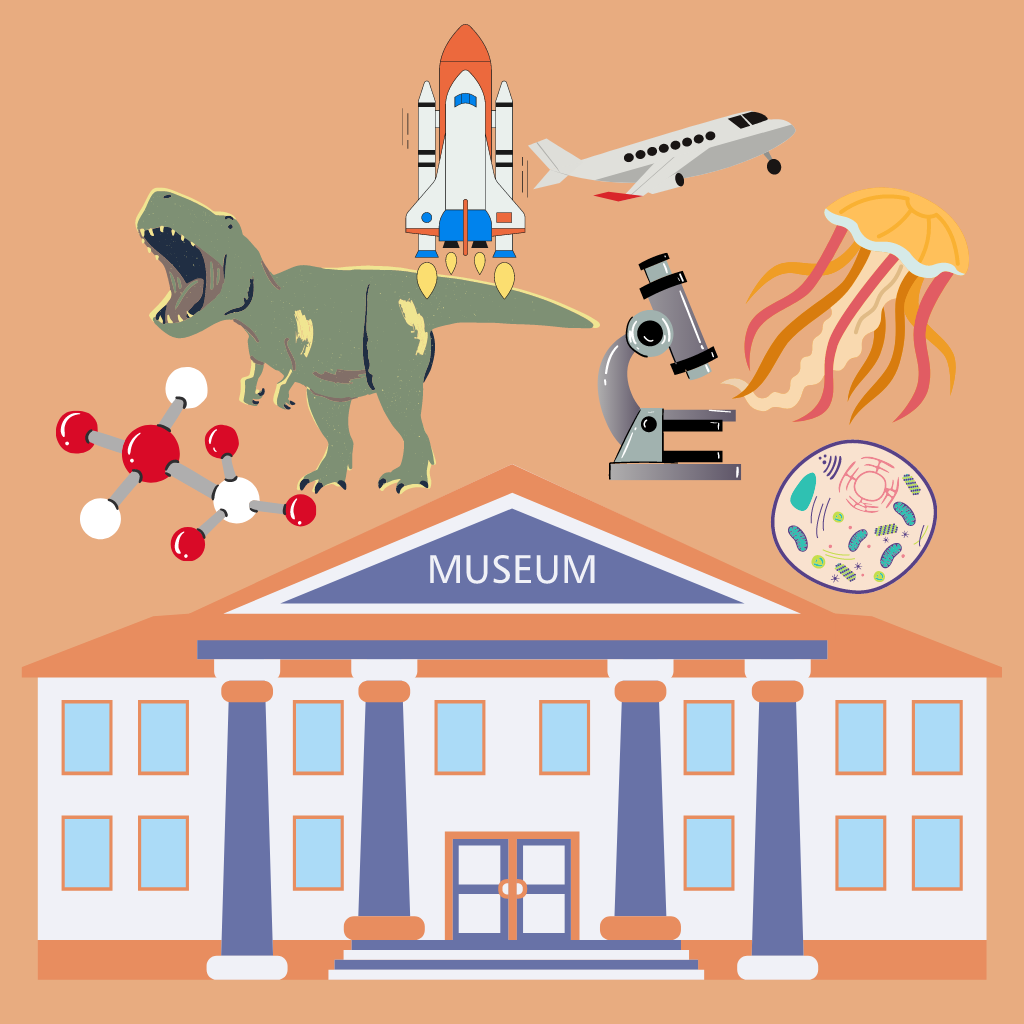
There may be free admission days or free passes to a science museum near you! Check your local library for free museum passes, nearby science museums for free entrance days and your credit card for offers.
Find a science museum near you and prepare to be awed by all that you can learn there! I always learn something new and am inspired whenever I go to a science museum!
How do I start a science fair project?
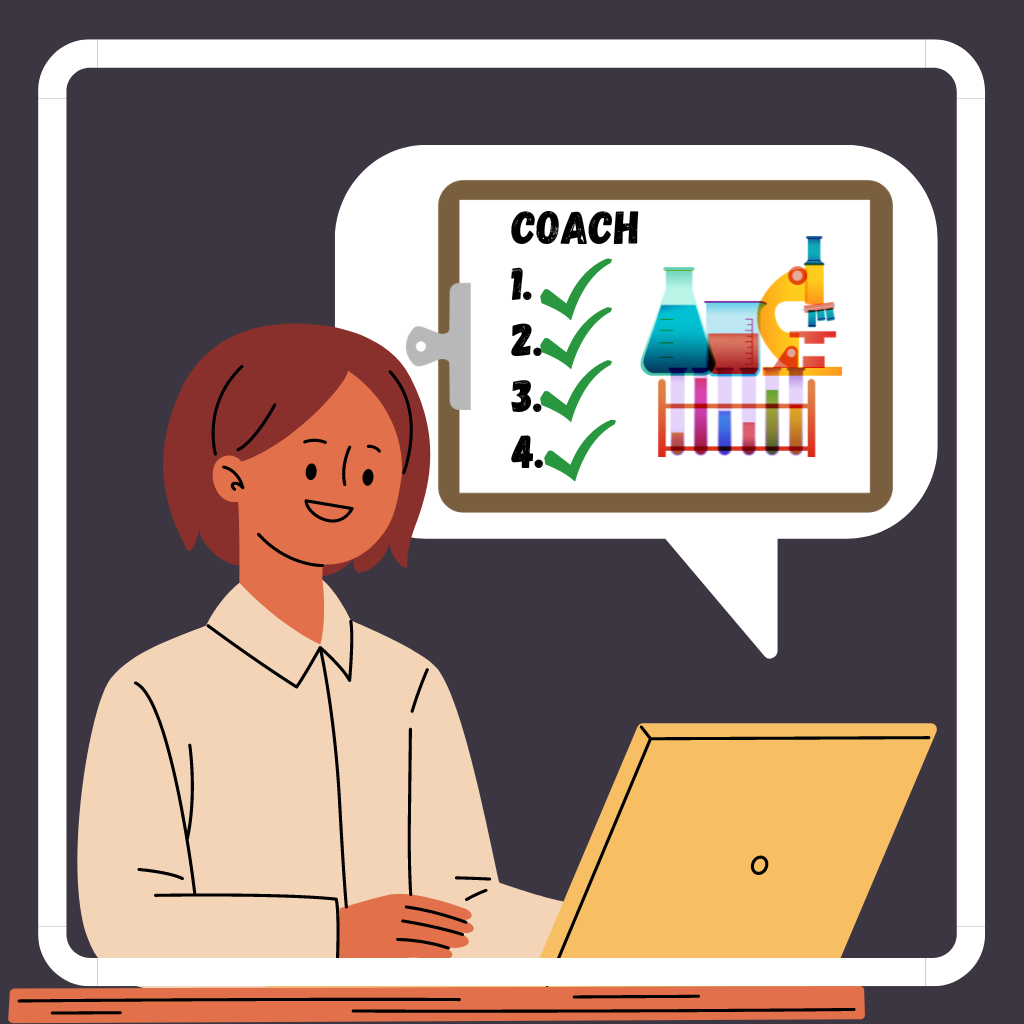
What should I do after I have a science fair project idea?
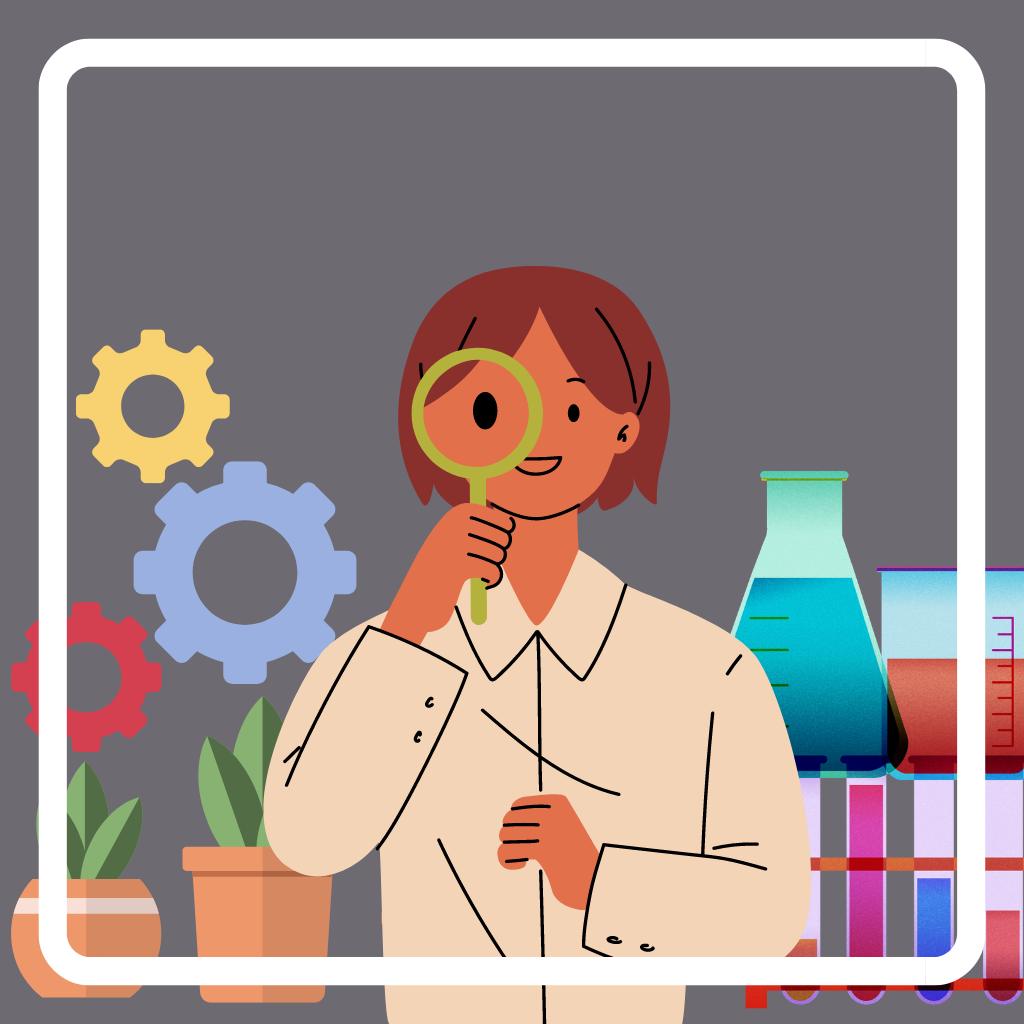
How do I make a science fair board?
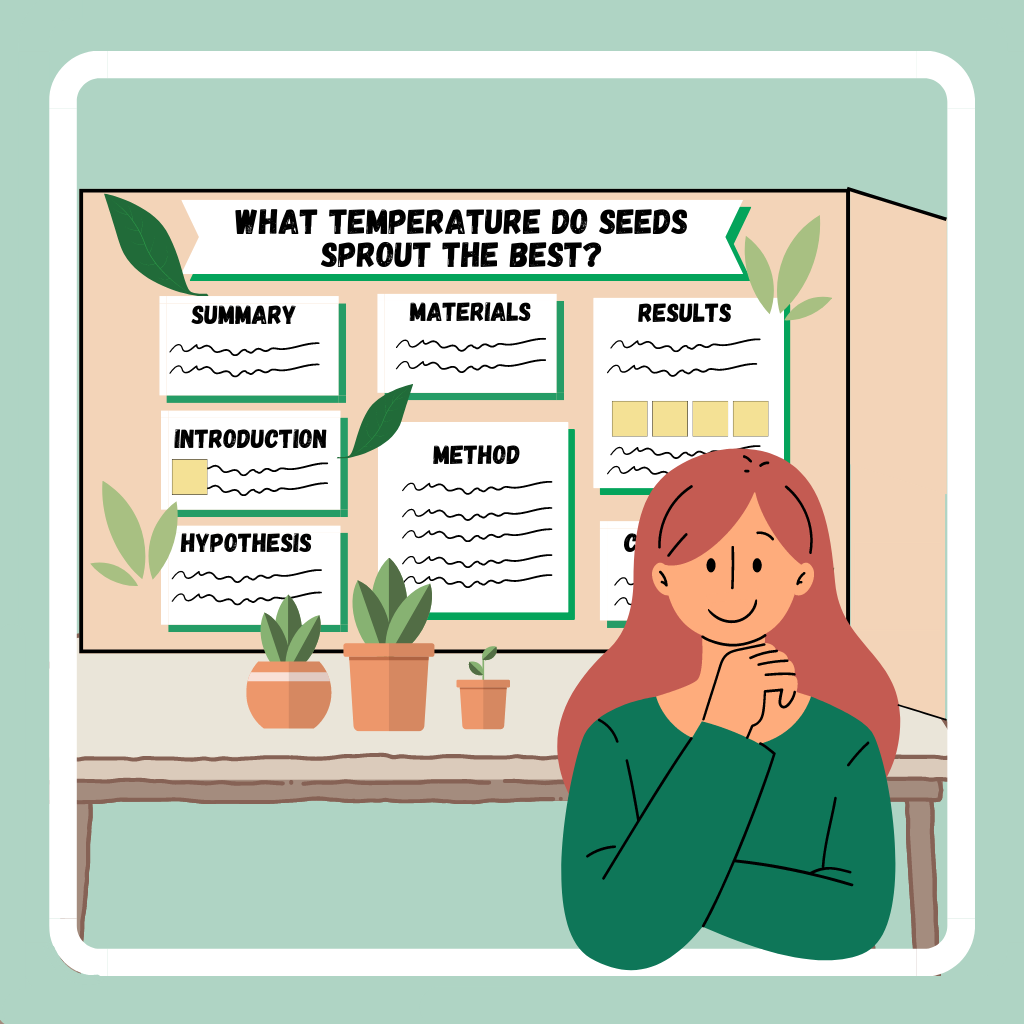
What is the scientific method?
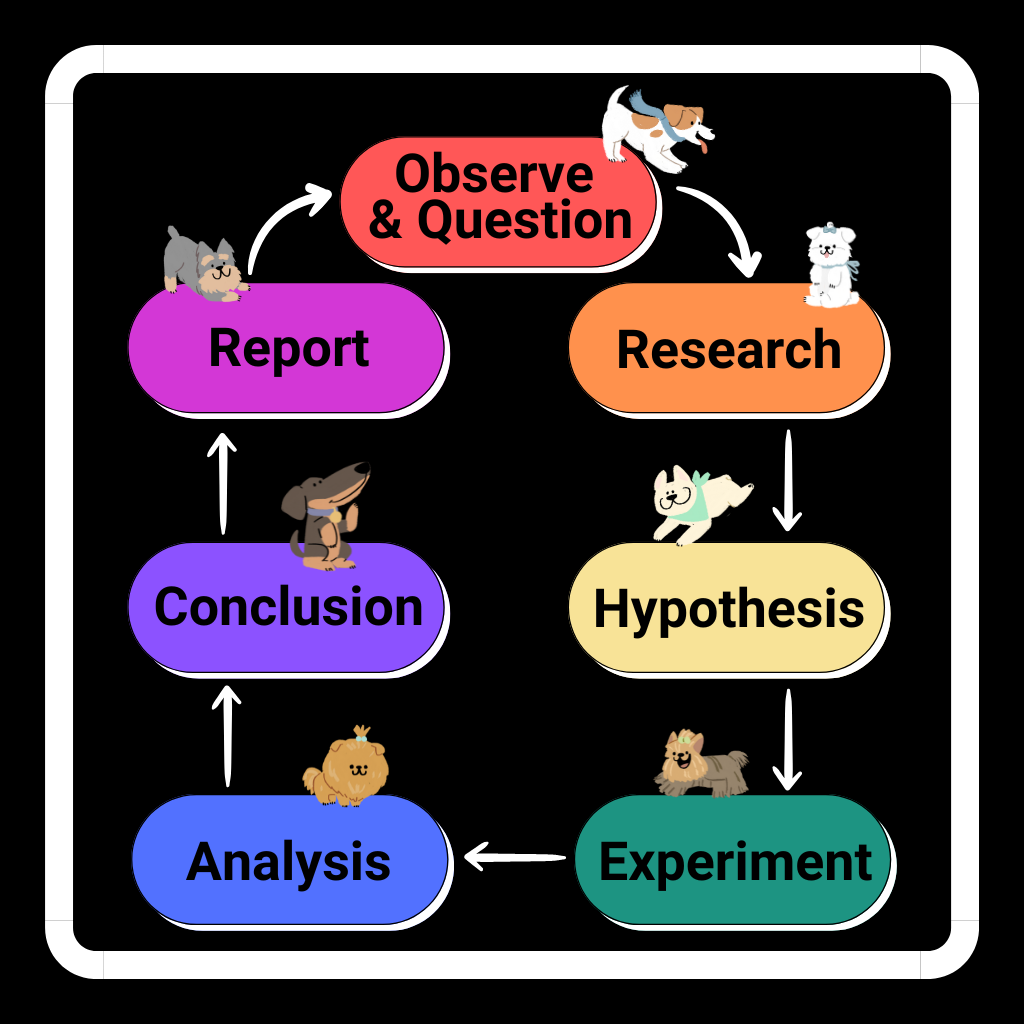
What is the engineering design process?
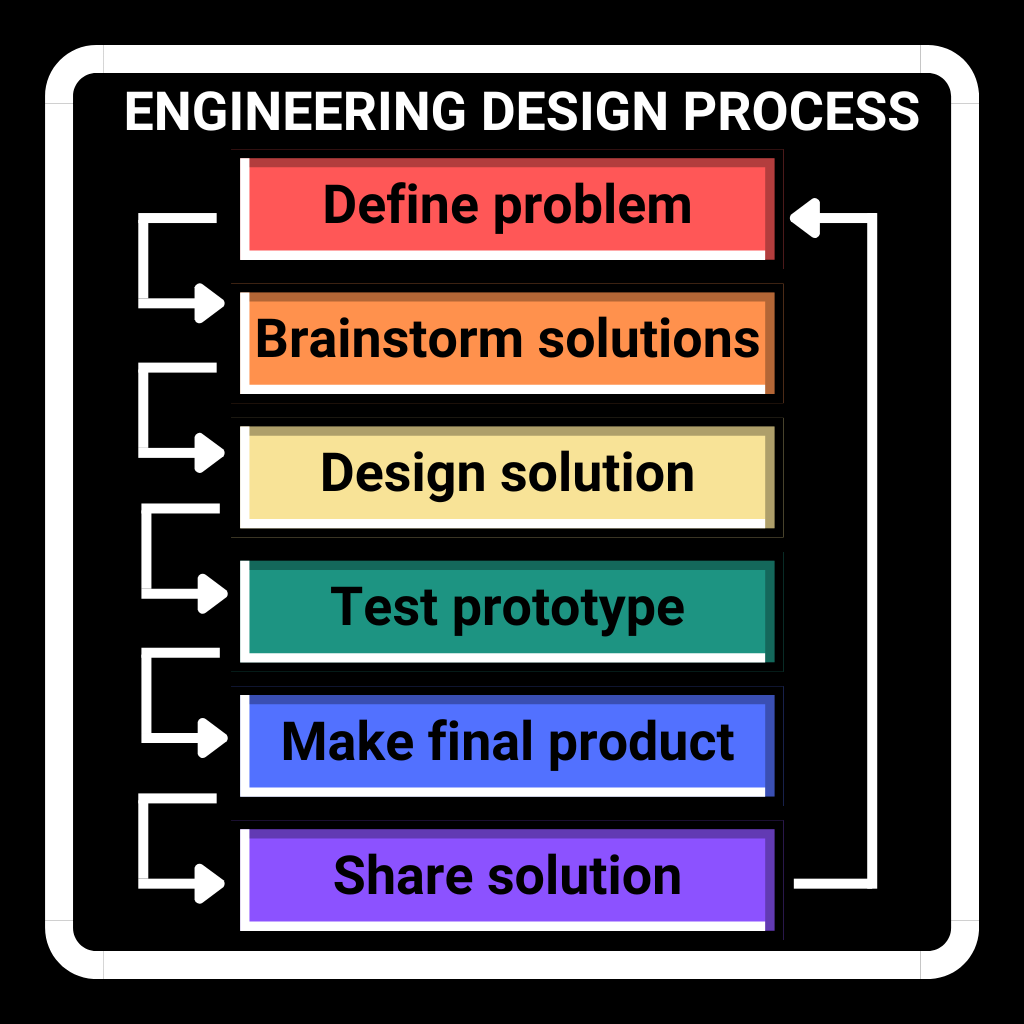
Where can I find a science fair competition?
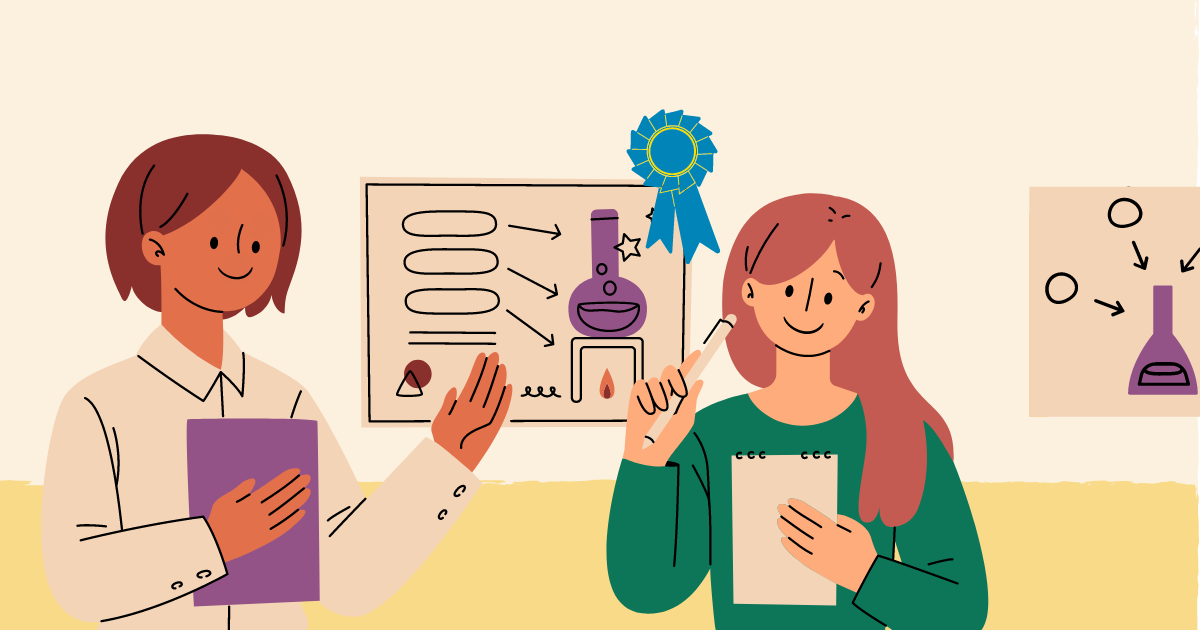
The www Virtual Library: Science Fairs website also has a collection of science fairs from all over the world, as well as national, state, regional, local, and virtual competitions!

Fun & Easy Science Fair Projects For 1st Grade
- April 12, 2023
- Science Fair Ideas
Science fairs are a fantastic way to introduce young children to the wonders of science and foster their curiosity about the world around them. For first-grade students, science projects can be particularly engaging, as they offer a hands-on approach to learning that encourages exploration, experimentation, and discovery.
Whether your child is fascinated by animals, loves to build things, or is curious about the environment, there are countless science fair project ideas that are perfect for their age and skill level. So let’s dive in and discover the exciting world of science together!
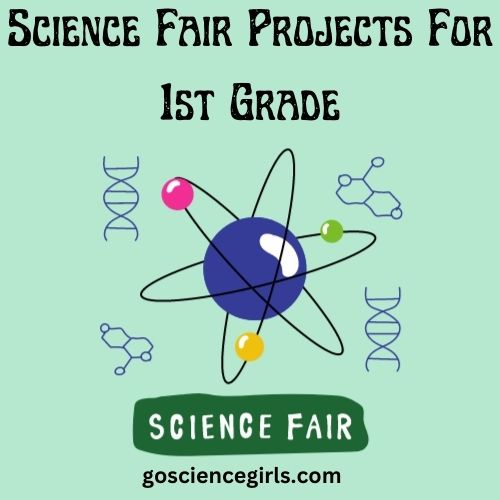
Science Fair Projects for 1st Grade – Subject Wise
Select your interest on the subject so that you can view the list of science fair project ideas in that subject.
Earth Science
Engineering
Environmental Science
Space Science
Earth and Space
With Plants
Cycle Of Life
Electricity
Projects That Won 1st Place
Using Scientific Methods
Last-minute Projects
Winning Projects
Project ideas for Boys
Project ideas for Girls
Advanced Science Fair Project Ideas
Basket Ball
Biochemistry
Egg Science
Nature Related
Electromagnetic Spectrum
With Variables
Projects to do at home
Measurable Projects
Biology Science Fair Ideas for 1st Grade
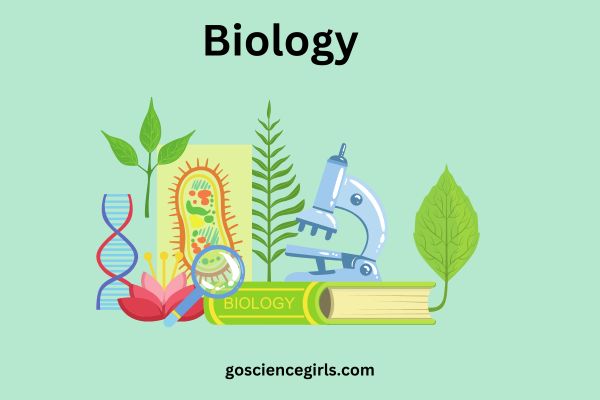
- Make a Plant cell using craft materials, such as paper mache, clay, or playdough
- Model a butterfly’s life cycle using paper plates, tissue paper, and markers.
- Construct a human body using cardboard and paper cutouts of organs.
- Bird’s nest using twigs, grass, and clay.
- A digestive system model using a clear plastic bag, crackers, and orange juice.
- Model of a bee using pipe cleaners, pom-poms, and googly eyes.
- Make a food chain using toy animals and a poster board.
- Spider web using yarn and sticks.
- Water cycle using a plastic cup, water, and food coloring.
- The solar system using Styrofoam balls and paint
- The behavior of ants and describe how they work together as a team.
- Different types of leaves and describe their shapes and sizes.
- Watch and record the growth of a plant over a few weeks and discuss the changes.
- How other objects float or sink in water and explain why.
- Describe the different types of clouds in the sky.
- Differences between daytime and nighttime animals and how they adapt.
- Record the lifecycle of a ladybug and discuss the various stages .
- The behavior of birds and describe how they use their beaks to eat.
- Compare the growth of two different types of seeds.
- Observe the behavior of two pets, like a cat and a fish.
Earth Science Project Ideas for 1st Grade
- Solar system and identify each planet.
- Volcano and demonstrate how it erupts.
- Model a watershed and explain how water flows through it.
- Construct a beach and describe the different elements found there.
- Build a mountain range and explain how it takes its form.
- Cave and explain how they are formed.
- Glacier and explain how it shapes the land.
- Tornado and demonstrate how it develops.
- Desert and explain how it is different from other ecosystems
- Phases of the moon and describe the changes.
- Compare the shapes and sizes of rocks found outside.
- Watch the weather for a week and discuss the patterns.
- Differences between a day and a night sky.
- Types of soil in your backyard.
- Changes in a plant over a week and discuss why they occur.
- Describe the different types of clouds and their formations.
- Effects of sun and shade on different plants.
- Various kinds of trees in your neighborhood.
- How water moves through different types of materials, like sand or soil
Chemistry Science Fair Ideas for 1st Grade
- An atom and explain its different parts.
- Molecule and explain how they combine.
- Lava lamp and explain how it works.
- Rainbow and explain how it is formed.
- Crystal and explain how it grows.
- Lemon battery and explain how it produces electricity .
- Volcano eruption and explain the chemical reactions involved.
- Model a fizzy drink and explain the science behind its bubbles
- Baking soda and vinegar reaction
- Build a firework and explain how it creates different colors
- Compare the properties of different liquids, like water, oil, and syrup.
- Describe the changes that occur when the ice melts.
- How bubbles form and pop.
- Watch how food coloring spreads in water.
- Discuss the differences between hot and cold water.
- Changes that occur when bread is toasted.
- How salt dissolves in water.
- Different materials like sugar or salt affect water density.
- Materials like vinegar or lemon juice can affect the taste of food.
Engineering Science Fair Ideas for 1st Grade

- Simple machines, like a lever or pulley, explain how it works.
- Bridge and discuss how it supports weight.
- Windmill and explain how it converts wind energy into electricity.
- Roller coaster Model making
- Model of a building and how the foundation supports the structure.
- Simple robot and how it moves to input.
- Sailboat Model.
- Hot air balloon and explain how it rises.
- Car and its different parts, like wheels or engine
- Create a catapult and its use of force to move objects
- Different types of bridges you see in your community.
- Watch how an object, such as a ball, bounces differently on different surfaces.
- Observe how a kite flies in the wind.
- How a clock or watch tells time.
- Different materials, like wood or metal, can be used to build structures.
- A seesaw balances weight.
- How does a bicycle work?
- How a ramp can help move objects.
- Simple machines, like a screw or wedge, can be used daily.
- Discuss how gears work together in a machine or toy.
Environmental Science Fair Ideas for 1st Grade
- Solar oven: Use a cardboard box, aluminum foil, and plastic wrap, and use it for cooking s’mores.
- Model of a wind turbine using cardboard, paper cups, and a pencil, and testing how much wind it takes to make the turbine turn.
- Water filter using sand, gravel, and a plastic bottle, and test how well it filters dirty water.
- Green roof using a shoebox, soil, and grass seeds, and observing how well the grass grows and how much water it needs.
- Compost bin making using a plastic container, shredded paper, and vegetable scraps, and observing how the scraps break down into compost over time.
- Rain gauge using a plastic bottle, a ruler, and a funnel, and measuring how much rain falls during a storm.
- Terrarium uses a clear plastic container, soil, and small plants to observe how the plants grow over time.
- Solar-powered toy car: Use a small motor, a solar panel, and a cardboard base, and observe how fast it goes in different levels of sunlight.
- Birdhouse using a cardboard box, sticks, and glue, and observing which birds come to nest in it.
- Make a bee hotel using a cardboard tube, paper straws, and twine, and observe which bees come to nest in it.
- The growth of different plants under different light conditions (e.g., sunlight vs. artificial light).
- Monitoring the temperature and humidity levels in a classroom over a day
- Observing the behavior of ants and how they interact with each other and their environment.
- Measuring the amount of water used by different types of plants (e.g., succulents vs. ferns).
- Changes in a plant’s leaves over time as it grows and recording changes in color, shape, or size.
- Amount of air pollution in different areas of a city using a homemade air quality sensor.
- Impact of different types of litter (e.g., paper, plastic, glass) on a local park’s ecosystem.
- Daily weather conditions (e.g., temperature, precipitation, wind speed)
- The behavior of different types of insects (e.g., butterflies, ladybugs, bees)
- Measuring the pH levels of different types of water (e.g., tap water, rainwater, river water)
Space Science Projects for 1st Grade
- A solar system using Styrofoam balls and paint, and learning about the order of the planets.
- Rocket model using cardboard, paper cups, and construction paper, and launching it with baking soda and vinegar.
- Phases of the moon: Use Oreo cookies and observe how the moon’s appearance changes over time.
- Space suits using paper, aluminum foil, and duct tape, and learning about what astronauts wear.
- Space station using cardboard boxes and learning about life in space.
- Constellation using black paper and glow-in-the-dark stickers, and learning about the stories behind the constellation.
- Satellite using a Styrofoam ball and pipe cleaners, and learning about how satellites orbit the Earth.
- Lunar lander using cardboard, paper cups, and aluminum foil, and learning about how astronauts landed on the moon.
- Model of a Mars rover using a toy car and paper, and learning about the technology used to explore Mars.
- Black hole using a black balloon and marbles, and learning about how black holes are formed.
- Observing the moon’s phases for a month and recording their appearance in a journal.
- Position the stars in the sky for a week and record their movement.
- Changes in the shape and size of the sun during a solar eclipse and recording their observations.
- The temperature of different planets in our solar system and comparing their temperatures to Earth’s.
- Differences between day and night on Earth using a globe and a flashlight and recording changes in light and shadow.
- Length of a shadow during different times of day and recording any changes in length.
- Phases of Venus through a telescope and recording their appearance.
- The appearance of a comet over the course of a week and recording any changes in its appearance.
- The gravity of different objects using a spring scale and recording their weight.
- Differences between the appearance of the stars in the sky during different seasons and recording any changes in brightness or position.
1st Grade Earth and Space Science Projects
- Layers of the Earth using different colors of playdough or clay
- Volcano using paper mache and observing how it erupts with baking soda and vinegar.
- Water cycle using a plastic bag, water, food coloring, and learning about how water evaporates and condenses.
- The solar system: Use ping pong balls and learn about the order of the planets.
- Tornado using a bottle, water, and dish Soap and learning about how they form.
- Glacier using ice cubes and clay, and learning about how glaciers move and shape the Earth.
- Watershed using a baking sheet, dirt, and water, and learning about how water moves through the environment.
- Earth’s magnetic field using a bar magnet and iron filings, and learning about how it protects the Earth.
- Desert using sand and small rocks, and learning about the different plants and animals that live there.
- Rainforest using green paper and plastic animals, and learning about the diversity of life in this ecosystem.
- Observing how plants grow in different types of soil
- Temperature and weather outside over a week
- Monitoring the different types of clouds in the sky and recording their appearance.
- Measuring the pH of different types of water
- Observing the different types of rocks and minerals found in the environment
- Amount of rainfall in different types of weather using a rain gauge
- How the position of the sun changes throughout the day
- Growth of a plant for a month and recording any changes in height, number of leaves
- Air quality in different environments, such as near a busy street and in a park, and comparing the results.
- Different types of birds in the environment
1st Grade Science Fair Ideas With Plants
- Experiment to test which type of soil is best for growing plants and planting seeds in different kinds of soil
- Different parts of a plant using construction paper or other materials
- A hydroponic system using a plastic container, water, and plant cuttings
- Test how light affects plant growth and placing plants in different lighting conditions
- Making a model of a greenhouse
- Model of a plant cell using styrofoam
- Designing an experiment to test how different types of fertilizers affect plant growth
- Compost bin using a plastic container and organic matter
- Plants grow in different amounts of water
- Growth of a plant over a month
- Observing how different types of plants react to being placed in sunlight or shade
- The amount of water plants release into the air through transpiration
- How plants respond to being pruned or trimmed
- Effects of temperature on plant growth by placing plants in different environments
- Different types of plants respond to being fertilized
- Amount of time it takes for seeds to germinate
- Various types of plants respond to being grown in different types of containers, such as pots or hanging baskets.
- Effects of different types of light on plant growth by placing plants in different lighting conditions
Cycle of Life Science Fair Ideas for 1st Grade
- Butterfly’s life cycle using clay, paper, or other materials.
- Use Legos to build a model of a plant’s life cycle.
- Make a 3D model of a bird’s nest and how eggs are laid and hatched.
- Create a diorama of a frog’s life cycle, including tadpole and adult frog stages.
- Seed growing into a plant using cotton balls and a clear container.
- Playdough to create a model of the life cycle of a ladybug.
- Caterpillar turns into a butterfly using tissue paper and pipe cleaners.
- Model of a food chain using toy animals or pictures of animals.
- Growth of a plant from a seedling to a full-grown plant.
- Document the life cycle of a butterfly in a butterfly habitat
- Observe the hatching and growth of a chicken from an egg.
- Metamorphosis and development of a tadpole into a frog.
- Different stages of a caterpillar turning into a butterfly.
- Watch the changes in a pond over time, including the growth of plants and animals.
- Phases of the moon using a calendar or pictures.
- Changes in weather patterns for a week or month.
- Changes in a tree over a year.
- See the changes in a bird’s nest as eggs are laid, hatched, and birds grow.
Science Fair Ideas for 1st Grade with Animals
- Animal habitats using cardboard, construction paper, and other materials.
- Model of an animal cell using playdough or clay.
- 3D model of an animal using pipe cleaners and pom poms.
- Use Legos to build a model of an animal skeleton.
- Make an insect using paper and pipe cleaners.
- Use clay to create different types of animal footprints.
- Bird’s nest using twigs, feathers, and other materials.
- Animal’s life cycle using paper, markers, and pictures.
- Use paper and crayons to create different types of animal camouflage.
- Learn the behavior of ants in an ant farm.
- Different types of birds that visit a bird feeder.
- The movement of earthworms in the soil.
- Various kinds of insects that are attracted to light at night.
- Growth and development of a caterpillar into a butterfly.
- Changes in a tadpole as it develops into a frog.
- The changes in animal behavior during different seasons.
- Different types of animals that live in a pond.
- Watch the behavior of a pet or farm animal over time.
- The differences between different types of animal tracks in mud or sand.
Science Fair Ideas for 1st Grade with Human Body
- A model of the human brain using playdough or clay.
- Skeleton using straws and cotton swabs.
- Use cardboard and markers to make the human heart and circulatory system.
- Tooth and the different parts of a tooth using clay or playdough.
- Create a human digestive system using a clear plastic bag and food items.
- Use paper and crayons to make different types of cells in the human body.
- A human respiratory system using straws and balloons
- Use paper plates and pictures to show the different parts of the human eye.
- The human ear and the different parts of the ear: Use clay or playdough.
- Make a model of the human tongue and the different taste buds
- Observe the changes in heart rate during different types of physical activity
- Different kinds of fingerprints of different people in the class.
- Changes in breathing rate during different types of physical activity.
- Differences in height and weight among different people in the class.
- Various eye colors among different people in the class.
- Types of food preferences among different people in the class.
- Physical abilities among different people around you
- Changes in skin color after being exposed to sunlight for different amounts of time.
- Different types of hair colors among people around you
- Differences in flexibility among your chosen sample of people
Science Fair Ideas for 1st Grade with Electricity
- A simple circuit, but make it using a battery, wire, and lightbulb.
- Make a switch model using cardboard, paper clips, and wires.
- SSolar panel using cardboard and aluminum foil.
- Simple electromagnet using a battery, wire, and a nail.
- Make a simple motor using a battery, wire, and magnet.
- Parallel circuit using multiple light bulbs and batteries.
- Series circuit making
- Simple buzzer using a battery, wire, and a piezo element.
- Doorbell using a battery, wire, and a bell.
- Different types of lightbulbs and their brightness levels.
- Various types of batteries and their lifespans.
- Observe the differences between different types of conductors and insulators.
- Various types of switches and how they work.
- Differences between series and parallel circuits.
- Learn the different types of energy sources and their efficiency.
- Understand the differences between AC and DC electricity.
- Effects of temperature on batteries and other electrical components.
- Types of lightbulb colors and their effects on mood and atmosphere.
- Differences between the sounds produced by different types of buzzers and bells.
Science Fair Ideas for 1st Grade with Magnetism
- Model of a simple magnetic field using iron filings and a magnet.
- Compass using a magnet and a cork floating in the water.
- Magnetic levitation train using magnets and a strip of metal.
- Magnetic field detector using a magnet and a compass.
- Magnetic motor using a battery, wire, and magnet.
- Create a magnetic door latch using a magnet and a metal plate.
- Make a magnetic jewelry clasp using magnets and metal beads.
- Magnetic pencil holder using magnets and a metal cup.
- Magnetic maze game using magnets and a metal board.
- Observe different types of magnets and their strengths.
- Differences between attracted and repelled magnets.
- Different types of metal objects are attracted to magnets.
- Magnetic fields between different magnets
- Effects of distance on the strength of a magnet’s attraction.
- Differences between the north and south poles of a magnet.
- Effects of temperature on magnets and their strength.
- Learn the differences between permanent magnets and temporary magnets.
- Document the results of magnets on electronics and computer screens.
- The uses of magnets in everyday life, such as in speakers and refrigerator doors.
Science Fair Ideas for 1st Grade with Motion
- Simple pulley system using string and a weight.
- Make an Inclined plane using a board and a toy car.
- Lever using a board and weight.
- Balance scale using a ruler and toy weights.
- Create a simple pendulum using a weight and string.
- Model of a rocket using a straw and paper.
- Roller coaster making using a tube and marbles.
- Catapult design using popsicle sticks and rubber bands.
- Make a model of a balloon car using a balloon and a toy car.
- Learn the different types of motion, such as linear, circular, and back-and-forth.
- Effects of gravity on the motion.
- Differences between potential energy and kinetic energy.
- Smooth and rough surfaces and their effects on motion.
- Objects with different masses and their motion.
- Effects of air resistance on the action.
- Observe the differences between fast and slow motion.
- The effects of force on the movement.
- Rolling, sliding, and bouncing motion.
- Various types of simple machines and their effects on motion.
Science Fair Ideas for 1st Grade with Sound
- Make a Musical instrument, such as a kazoo or harmonica.
- Simple speaker-making using a paper cup and a piece of wire.
- Create a microphone using a paper cup and a wire.
- Model of a soundproofing box using cardboard and foam.
- Wind chime using string and paper cups.
- Tone generator using a rubber band and a ruler.
- Vibration detector using a balloon and a straw.
- Sound wave generator using a slinky.
- Tuning fork using a piece of wire and a spoon.
- Drum using a cardboard box and balloons.
- Different types of sound are loud, soft, high-pitched, and low-pitched.
- Effects of distance on sound.
- The differences between sounds made by different instruments.
- Observe the differences between sounds made by different materials.
- The effects of sound waves on materials, such as sand or water.
- Sounds made in quiet and noisy environments.
- Sound on living organisms, such as plants or animals, and its effects
- Differences between sounds made by human voices, such as singing or speaking.
- Observe the effects of sound on everyday objects, such as glasses or cans.
- Various types of vibrations that create sound
Science Fair Projects That Won 1st Place (1st Grade Level)
- Solar oven model
- Light and plant growth
- Water cycle model
- Human heart model
- Temperature and crystal growth
- Food and bacteria growth
- Simple machine model
- Material types and bridge strength
- Solar system model
- Volcano model
- Soil and plant growth
- Water and plant growth
- Detergent and cleaning power
- Plant cell model
- Water filtration system model
- Water clock model
- Magnets and magnetic field strength
- Paper types and paper airplane strength
- Roller coaster model
- Music and plant growth
Science Fair Ideas for 1st Grade with Food
- Model of the digestive system using a plastic bag, crackers, and juice
- Document the effects of different types of foods on mold growth.
- Plant cells using a hard-boiled egg, food coloring, and craft supplies.
- Rock cycle using chocolate, heat, and pressure.
- The temperature of the melting rate of chocolate
- Different types of drinks on tooth decay
- Food chain using toy animals and plants.
- Layers of the Earth using cake and frosting
- Effects of different types of cooking oils on the smoke point
- Various kinds of light on the growth of plants
- Model of the water cycle using gelatin and food coloring.
- Make a Molecule using marshmallows and toothpicks.
- Observe the effects of different types of fruits on the color and texture of gelatin.
- Create a volcano using fruit and candy.
- Salt on the boiling point of water
- Show a Solar system using fruits and vegetables.
- Protein using spaghetti and marshmallows.
- Types of sugar on the fermentation rate of yeast
- Effects of different types of liquids on plant growth
Science Fair Projects Using Scientific Method
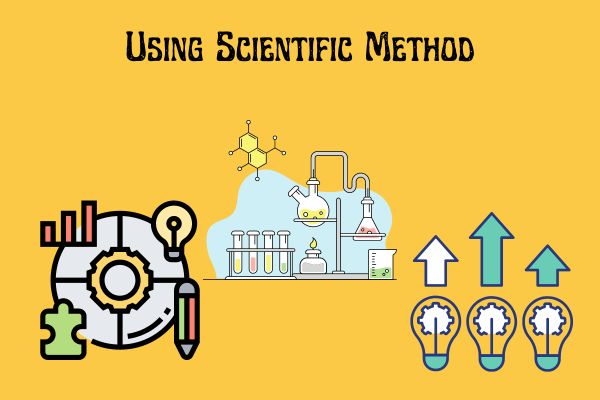
- Conductivity Test
- Liquid and Plant Growth Observation
- Build a model of a plant’s life cycle and demonstrate how it grows with different variables like sunlight, water, and soil.
- Volcano Eruption using baking soda and vinegar.
- Bridge model making and testing its strength with different weights.
- Light source and object: Demonstrate how shadows are formed with different angles and distances.
- Sink or Float Experiment
- Balloon Size and Temperature Observation
- Make an airplane and demonstrate how it flies with different angles and wind speeds.
- Magnet and demonstrate how it attracts and repels different materials.
- Soap and Surface Tension Observation
- Salt and Ice Melting Rate Observation
- Pulley and demonstrate how it makes lifting objects easier.
- Model a boat and demonstrate how it floats with different shapes and weights.
- Sugar and Boiling Point Observation
- Vitamin C Content Test
- Air Pressure and Object Deformation Observation
- String telephone and demonstrate how sound travels through different materials
- Ramp Angle and Toy Car Distance Observation
Last-Minute Projects for 1st Graders
- Model of a dinosaur using paper and markers
- Make a Tornado using a plastic bottle and water.
- The type of bird seed attracts the most birds to a bird feeder.
- Create a volcano design using paper mache and paint.
- Test which material insulates the best by wrapping ice cubes in different materials and measuring how long they take to melt.
- Observe the growth of a plant with different amounts of sunlight or water.
- Which type of paper airplane design flies the farthest?
- Plant cells using a clear plastic bag, gelatin, and candy.
- Effects of different types of liquid on an eggshell.
- Note which magnet type is the strongest by seeing which can hold the most paper clips.
- What type of fruit juice stains white fabric the most?
- How a balloon reacts when it is placed in different temperatures
- Effects of different types of soil on the growth of bean plants
- Wind vane using a paper arrow and a straw.
- Experiment with various bubble solutions, which make the strongest bubbles.
- Which candy dissolves the fastest in water?
- What liquid freezes the fastest
- Different types of music on a plant’s growth.
- Test which type of soil retains water the best
- Different types of Soap on the growth of bacteria on hands
- Observe the effects of different types of light on the growth of mold.
Winning Projects for 1st Grade
- Weather Model: Create a model of different weather conditions using cotton balls, construction paper, and markers
- Model of a butterfly’s wings using paper, paint, and glitter to show how they reflect light
- Ecosystem Model: Create a model of an ecosystem using cardboard, construction paper, and plastic animals
- Growth of plants placed in different amounts of sunlight to determine how much sunlight is necessary for plant growth
- Make a Circuit using wires, batteries, and LED lights to show how electricity flows through a circuit.
- Animal Tracks: Compare the tracks of different animals to determine what animals have been in a specific area.
- Water quality in different bodies of water to determine how pollution affects water quality.
- Vibrations of different objects to determine how sound travels through different materials.
- Color Mixing: Observe and mix different colors of paint to determine what colors can be made by mixing primary colors
- Make a model of a seedling using a clear plastic cup, soil, and seed to show how plants grow from a tiny seed.
- Different types of soil to determine what type of soil is best for plant growth.
- Test different objects to determine which ones are magnetic and which ones are not.
- Measure the shadows cast by different objects to determine how the sun’s angle affects the length of shadows.
- Worms: use pipe cleaners, yarn, and googly eyes to demonstrate how worms move and live in the soil.
- Bubble Science: Observe and experiment with different types of bubbles to determine what factors affect the size and shape of bubbles.
- Build a maze using cardboard, paint, and marbles to demonstrate how physics and gravity affect motion.
- Observe and compare the growth of plants with different amounts of water and sunlight to determine what plants need to grow properly.

Project Ideas for Boys (1st Grade)
- Blast Off!: Building a Model Rocket
- Cardboard Speedster: Designing a Race Car
- Observe and measure the effects of temperature on the rate of ice melting.
- Robot: Use cardboard, markers, and glue to show how machines can be programmed to move.
- Robo-Adventures: Building a Cardboard Robot
- Launch It!: Creating a Popsicle Stick Catapult
- Let There Be Light: Examining Plant Growth
- SubmarinE: Use plastic bottles, glue, and paint to show how submarines operate underwater.
- Hovercraft: use a CD, a balloon, and a bottle cap to show how air pressure can lift objects.
- Properties of different liquids, such as density and viscosity.
- Lifting Challenge: Building a Popsicle Stick Crane
- Different types of objects on the buoyancy of water
- Dinosaurs: use clay or paper mache to show what scientists think they look like.
- Treehouse: use popsicle sticks, glue, and paint to show how structures are built and supported.
- Material Soundscapes: Testing the Acoustics of Different Materials
- Tornado: use a soda bottle, water, and glitter to show how tornadoes form and move.
- The strength of different types of magnets.
- Observe and compare the color and texture of different types of soil.
- Effects of different types of surfaces on friction.
- Measure the effects of different types of objects on the speed and direction of air currents.
Project Ideas for Girls (1st Grade)
- Playdough Plant Cell
- Bird Nest Building
- Light and Plant Growth
- Flower Color and Texture
- Styrofoam Solar System
- Food and Yeast Growth
- Surfaces and Friction
- Liquids and Density
- Glittery Butterfly Transformation
- Cup Greenhouse Growing
- DIY Weather Vane
- Clay Volcano Eruption
- Objects and Buoyancy
- Materials and Sound Waves
- Objects and Air Currents
- Magnets and Object Movement
- Shoebox Butterfly Habitat
- Water Cycle Model
- Colorful Rainforest Diorama
Advanced Science Fair Project Ideas for 1st Grade
- Optimal Conditions for Plant Growth
- Seasons in Motion: Understanding Weather Patterns
- The Power of Magnets: Exploring Magnetic Fields
- Inside the Human Body: An Exploration of Our Anatomy
- Unleashing the Charge: Investigating Static Electricity
- Sounds All Around Us: The Science of Sound Waves
- Matter Matters: Examining the States of Matter
- The Transformative Power of Water: Liquid to Gas
- The Light and the Dark: Understanding Light and Shadow
- Adapt or Die: Animal Survival Tactics
- Rainbows Revealed: The Science of Spectral Colors
- The Gravity Games: Learning About Gravity
- The Wonders of Space: A Study of the Solar System
- Erupting Volcanoes: A Look at Geothermal Activity
- Photosynthesis: How Plants Produce Food
- Cloud Chronicles: Investigating Cloud Formation
- The Water Cycle in Action: Understanding Precipitation
- Push and Pull: The Effects of Air Pressure on Objects
- Temperature Matters: Understanding Thermometers
- Rock Revelations: Exploring the Formation of Rocks
Astronomy Science Fair Ideas for 1st Grade
- Miniature Solar System Model
- Studying the Different Constellations in the Night Sky
- Tracking the Movement of Planets Across the Sky
- Phases of the Moon Model
- Model Rocket
- Model Space Station
- Observing the Effects of Light Pollution on the Night Sky
- International Space Station Model
- Effects of Different Types of Telescopes on Viewing the Night Sky
- Different Shapes of Stars
- Model Mars Rover
- Distance on the Appearance of Stars
- Movement of the Sun Across the Sky
- Model Comet or Asteroid
- Milky Way Galaxy Model
- Observing the Different Colors of the Planets
- Model Black Hole
- Supernova Explosion Model
- Characteristics of Comets and Asteroids
Science Fair Ideas for 1st Grade with Baking
- Cookie Shape’s Influence on Baking Time and Texture
- Sugar Amount’s Effect on Cake Texture
- Oven Temperature’s Impact on Muffin Baking Time
- Flour Type’s Influence on Cake Texture
- Consequences of Excessive Baking Powder in Recipes
- Importance of Ingredient Order in Baking
- Altitude’s Effect on Baking Times and Temperatures
- Cake Pan Shape’s Effect on Baking Time
- Different Types of Yeast’s Effect on Bread Texture
- Eggless Cake Baking and Texture Impact
- Baking Soda’s Effect on Cookie Texture
- Different Fats’ Impact on Baked Goods
- Different Milk Types’ Effects on Cake Texture
- Salt’s Influence on Baked Goods Texture
- Chocolate Chip Size’s Effect on Cookie Texture and Baking Time
- Overmixing Cake Batter and Texture Consequences
- Baking Powder-Free Cake Baking and Texture Impact
- Different Sweeteners’ Effect on Baked Goods Texture.
Science Fair Ideas for 1st Grade with Basketball
- How can the size of a basketball affect how high it bounces?
- The Effect of Basketball Temperature on Bounce
- Air Pressure’s Impact on Basketball Bounce
- Surface Texture’s Influence on Basketball Bounce
- Does the material of a basketball affect how it bounces?
- Height’s Effect on Basketball Bounce
- Shape’s Influence on Basketball Bounce
- Texture’s Role in Basketball Grip
- The Relationship Between Basketball Color and Game Visibility
- Weight’s Impact on Basketball Distance
- Does the age of a basketball affect its bounce and grip?
- The Trajectory of a Basketball at Different Angles
- Backspin’s Effect on Basketball Trajectory
- Arm Position’s Influence on Basketball Shot Trajectory
- Force’s Effect on Basketball Speed
- Distance’s Impact on Force Needed for Basketball Shot
- Air Resistance’s Effect on Basketball Shot Trajectory
- How does the elasticity of the basketball affect its bounce?
- Does the bounce of a basketball change with repeated use?
Science Fair Ideas for 1st Grade with Battery
- Testing Battery Power Across Different Types
- Building a Circuit with a Battery
- Creating a Potato-Powered Battery
- Understanding Solar-Powered Batteries
- How Batteries Fuel Flashlights
- Investigating Temperature’s Effect on Battery Life
- What and how to make a rechargeable battery
- Exploring Battery Performance Over Time
- How Battery Size Affects Performance
- Building a DIY Lemon Battery
- Powering Radios with Batteries
- Examining Button Battery Technology
- How Batteries Power Remote Devices
- Creating a Homemade Battery Tester
- Investigating Storage’s Impact on Battery Performance
- Understanding Alkaline Battery Technology
- DIY Battery-Powered Fan
- Battery Performance Across Brands
- Understanding Lithium Battery Technology
- How Batteries Fuel Electric Toys
Biochemistry Science Fair Ideas for 1st Grade
- Investigating the Growth of Plants under Different Conditions
- The Effect of Light on Plant Growth
- The Nutrient Needs of Plants
- How Do Seeds Grow?
- The Importance of Water for Plant Growth
- Investigating the Effects of Acidic and Basic Substances on Plants
- Effect of Temperature on the Growth of Seeds
- The Process of Photosynthesis in Plants
- How Do Animals Get Their Food?
- Digestive System of Humans and Animals
- Senses of Humans and Animals
- Effects of Exercise on the Body
- The Importance of Sleep for Humans and Animals
- Role of Sugar on Tooth Decay
- Investigating the Different Types of Bacteria
- Importance of Hand Washing in Preventing Illness
- Different Types of Foods and Their Nutritional Value
- How Do We Breathe?
- The Different Types of Blood Cells
- Effect of Exercise on Heart Rate
1st Grade Physics Science Fair Ideas
- The velocity of Various Balls Rolling Down a Slope
- Gravity’s Impact on Various Objects
- Testing Simple Machines, Such as Levers or Pulleys
- Marble Run and Observing Marbles’ Trajectory
- Examining the Impact of Friction on Moving Objects
- Make Paper Airplanes for Distance and Rate
- Studying the Effect of Wind on Various Objects
- Creating a Simple Water Wheel and Observing Its Operation
- Actions of Magnets and Investigating Their Mechanisms
- Effect of Weight on a Car’s Ramp Travel Distance
- Constructing and Testing Simple Electrical Circuits
- Impact of Various Materials on Sound
- The behavior of Light and Investigating Its Propagation
- Effect of Distance on Sound Volume
- Creating a Simple Pendulum and Observing Its Behavior
- Studying the Effect of Temperature on Liquid Behavior
- Investigating the Effect of Shape on Object Buoyancy
- Impact of Different Surfaces on Ball Bounce
- Shadow Actions and Studying Their Formation Mechanisms
Science Fair Ideas for 1st Grade with DNA
- Building a DNA model using candy or other materials.
- Extracting DNA from strawberries or other fruits using household items.
- Creating a family tree using photos and exploring similarities and differences in DNA
- Investigating inherited traits among family members, such as eye or hair color.
- Comparing the DNA of different types of fruits or vegetables to see if they are similar or different.
- Observing the effects of radiation or other environmental factors on DNA
- How DNA determines the sex of an organism
- Can Gene therapy be used to treat genetic disorders?
- Exploring how identical twins have the same DNA but may have different traits.
- Mutations in DNA can lead to genetic disorders.
- DNA of different animals and exploring similarities and differences
- Genetic traits can be passed down through generations
- Creating a DNA fingerprint by analyzing patterns in fingerprints or hair
- How DNA testing is used to solve crimes.
- Role of DNA in the process of evolution.
- Can Genetic engineering be used to modify DNA?
- Comparing the DNA of identical and fraternal twins
- DNA testing is used to determine paternity or maternity
- Differences in DNA between plant and animal cells
- DNA technology used in medicine and healthcare
Density Science Fair Projects for 1st Grade
- Density of Liquids
- Simple Boat for Density and Buoyancy
- The density of Fruits and Vegetables
- Density of Rocks
- Layered Density Tower
- Temperature and Density of Liquids
- Density of Objects
- Pressure and Density of Objects
- Archimedes Screw for Density
- Density of Metals
- Cartesian Diver for Density and Pressure
- Salinity and Water Density
- Lava Lamp for Density and Buoyancy
- Density of Woods
- Density Filter for Liquids
- Sugar and Solution Density
- Density of Gases
- Waterwheel for Density and Buoyancy
- Adding Substances and Water Density
- Hydrometer for Density Measurement
Science Fair Ideas for 1st Grade with Dry Ice
- Effects of Dry Ice on Water
- Testing a Simple Dry Ice Bubble Machine
- Effects of Dry Ice on Different Materials
- Make a Simple Dry Ice Fog Machine
- Investigating the Effects of Dry Ice on Balloons
- Creating a Dry Ice Explosion and Observing the Effects
- Building a Simple Dry Ice Rocket
- The Effects of Dry Ice on Food Preservation
- Create a Simple Dry Ice Cannon
- Creating Dry Ice Crystal Formations and Observing the Growth
- Make a Simple Dry Ice Bubble Snake
- Observing the Effects of Dry Ice on Sound Waves
- Simple Dry Ice Balloon Car
- Investigating the Effects of Dry Ice on Color Change
- Dry Ice Volcano and Observing the Eruption
- Effects of Dry Ice on Density
- Observing the Effects of Dry Ice on Light Refraction
- Simple Dry Ice Boat
Science Fair Ideas for 1st Grade with Candy
- Dissolving Candy in Different Liquids
- Building a Candy Structure with Toothpicks and Marshmallows
- Effect of Temperature on Candy
- Making a Rainbow with Candy and Water
- Making a Candy Maze
- Comparing the Size of Different Candies When Dissolved in Water
- Making Rock Candy at Home
- Investigating the Effect of Vinegar on Candy
- Candy Tower with Gumdrops and Toothpicks
- Effect of Salt on Candy Dissolving
- Building a Candy Bridge
- Effect of Citric Acid on Candy Dissolving
- Candy House with Graham Crackers and Frosting
- Impact of Different Sugars on Candy
- Make a Candy Ferris Wheel
- Making Edible Slime with Candy
- Microwave a candy to see what happens
- Build a candy rollercoaster
- Effect of Different pH Levels on Candy Dissolving
Egg Science Project Ideas for 1st Graders
- Bouncing Ability of Hard-Boiled vs. Raw Eggs
- Different Methods of Eggshell Dyeing
- Effect of Vinegar on Dissolving Eggshells
- Egg Drop Contraption to Protect Raw Eggs
- The temperature on Eggshell Strength
- Egg Spinner to Observe Centripetal Force
- Effect of Different Liquids on Eggshell Dissolving
- Egg-Powered Car to Observe Potential Energy
- Acidic vs. Basic Conditions on Eggshell Strength
- The density of Raw vs. Hard-Boiled Eggs
- Effect of Time on the Bouncing Ability of Raw Eggs
- Impact of Salt Water on Egg Buoyancy
- Egg Geodesic Dome to Observe Structural Strength
- Effect of Pressure on Eggshell Strength
- Different Cleaning Methods for Dirty Eggs
- Egg Carton Catapult to Observe Projectile Motion
- Effect of Light on Eggshell Color
- Various Egg Separation Techniques
- Effect of Air Pressure on Eggshell Strength
- Egg Balloon to Observe Air Pressure
Earth Science Fair Projects for 1st Grade
- Simple Volcano Model to Observe Eruptions
- Effect of Soil Type on Plant Growth
- Simple Wind Vane to Observe Wind Direction
- Soil Erosion Prevention Methods
- Effect of Water on Soil Erosion
- Simple Rain Gauge to Measure Precipitation
- Role of Sunlight on Plant Growth
- Water-Holding Capacity of Different Types of Soil
- Effect of Soil pH on Plant Growth
- Simple Water Filtration System to Observe Water Purification
- Properties of Different Types of Rocks and Minerals
- Impact of Temperature on Soil Moisture
- Simple Model of the Water Cycle to Observe Evaporation and Condensation
- Different Types of Fertilizers on Plant Growth
- Effect of Different Types of Rocks on Soil Quality
- Simple Solar Still to Observe Water Distillation
- Properties of Different Types of Soil
- Effect of Different Types of Ground Cover on Soil Erosion
- Simple Seismometer to Observe Earthquakes
- Effectiveness of Different Types of Mulch on Plant Growth
Nature Related Science Fair Ideas for 1st Grade
- Building a Birdhouse and Observing Nesting Birds
- Volcano Model and Eruption Observation
- Simple Wind Vane for Wind Direction Observation
- Solar System Model for Learning Planet Order
- Ecosystem Model for Understanding Animal-Plant Relationships
- Butterfly Model and Life Cycle Observation
- Habitat Model for Understanding Animal Importance
- Simple Terrarium for Plant Growth Observation
- Beehive Model for Understanding Honey Production
- Effects of Soil Types on Plant Growth Observation
- Ant Behavior and Habitat Observation
- Material Decomposition in the Environment Observation
- Effects of Light Types on Plant Growth Observation
- Bird Behavior at Different Times of Day Observation
- Mold Growth on Different Types of Bread Observation
- Effects of Temperature on Ice Melting and Freezing Observation
- Weather Pattern Changes over Time Observation
- Effects of Water on Seed Germination Observation
- Growth of Crystals in Different Conditions Observation
Science Fair Ideas for 1st Grade with Electromagnetic Spectrum
- Effects of Light on Plant Growth
- Simple Motor Model making
- Effects of Ultraviolet Light on Materials
- Make a fun Radio Model
- Effects of Light on Object Colors
- Simple Circuit Model
- Electromagnet Model Making
- Effects of Electromagnetic Waves on Metals
- Effects of Radio Waves on Electronic Devices
- Simple Telegraph Model
- Design a Microwave Model
- Manipulating Light with Different Lenses
- Attraction and Repulsion of Magnets
- Effects of Static Electricity on Materials
- Electrical Conductivity of Different Materials
- Receiving Different Types of Radio Waves with Different Antennas
- Build a Radar Model
- Make a Laser Model
Science Fair Ideas for 1st Grade with Variables
- Simple machines, such as a lever or pulley, and testing how different weights affect their function.
- Boat and testing how different materials affect its buoyancy.
- Bridge making and testing how different materials affect their strength.
- Car and testing how different wheels affect its speed.
- Plane and testing how different wing shapes affect its flight.
- Water filtration system and testing how different filters affect its ability to purify water.
- Greenhouse and testing how different amounts of sunlight affect plant growth.
- Roller coaster and testing how different track designs affect the speed and thrill of the ride.
- Windmill and testing how different wind speeds affect its ability to generate electricity.
- Volcano and testing how different amounts of baking soda and vinegar affect the eruption.
- Different seeds germinate under different conditions, such as temperature, light, and moisture.
- Effects of different types of soil on plant growth.
- Different kinds of liquids affect ice melting, such as water, salt water, and sugar water.
- Does music affect the heart rate of people or animals?
- Types of food affect the behavior of ants or other insects.
- Various types of weather affect the behavior of animals, such as birds or squirrels.
- Does Soap affect the number of bubbles produced when blown through a bubble wand?
- Effects of different types of paper on airplane flight distance.
- Types of objects, such as rocks or balls, roll down ramps at different speeds.
- How different types of materials, such as cotton or wool, absorb water differently.
Robot Science Fair Ideas for 1st Grade
- Simple robot using cardboard, paper cups, and markers to demonstrate basic movement
- Robots are used in medicine, such as for surgery or diagnosis.
- Building a robotic arm using straws and string to show how robots can perform specific tasks.
- Creating a model of a robotic animal using cardboard and markers to demonstrate different types of movement.
- Make a simple maze for a robot to navigate using cardboard and markers.
- How robots are used in agriculture, such as for planting or harvesting crops
- Model of a robotic hand using cardboard, string, and straws to demonstrate how robots can interact with objects.
- Robotic insects using cardboard and markers to show how robots can mimic nature.
- Observing the different types of robots used in everyday life, such as cleaning robots or delivery robots
- A robotic vehicle using cardboard and markers to demonstrate different kinds of movement.
- How are Robots used in space exploration, such as for collecting data or conducting experiments?
- Robotic toys using recycled materials and a motor to demonstrate how robots can be fun
- Observing how robots are used in entertainment, such as for interactive exhibits or theme park rides.
- Robotic plant watering system using straws and string to show how robots can perform specific tasks.
- Robotic vacuum using cardboard and markers to show how robots can clean.
- How robots are used in manufacturing and assembly lines
- Observing how robots are used in transportation, such as for self-driving cars or drones.
- Studying how robots can be programmed to perform specific tasks, such as sorting objects or stacking blocks.
- Learning how robots can be controlled remotely, such as with a joystick or app.
- Investigating how robots can be designed to mimic the movement and behavior of animals or insects.
Projects to Do at Home for 1st Grade
- Build a simple paper airplane and test which design flies the farthest.
- Make a mini greenhouse with clear plastic cups and compare the growth of plants with and without sunlight
- Observe how different liquids (water, oil, honey) behave when poured into a container
- Create a model volcano and learn about chemical reactions by making it erupt with baking soda and vinegar.
- Machine with LEGO bricks and explore how it can make work easier.
- Construct a bridge out of popsicle sticks and test its strength by seeing how many coins it can hold
- How objects float or sink in water and discover why some objects float and others sink.
- Study the changes in the moon’s appearance over a month by drawing the phases of the moon each night
- Paper plate sundial and observe how the position of the sun changes throughout the day
- Growing plants in different soil types and determining which soil type is best for growing plants.
- How does ice melt at different temperatures, and discover what factors affect the melting rate?
- Watch how magnets attract and repel each other and learn about the properties of magnetism.
- Light traveling through different materials (glass, plastic, paper)
- Simple electric circuit with batteries, wires, and a light bulb to learn about electricity.
- Miniature water cycle with a jar, a plate, and water to learn about evaporation and condensation
- The behavior of ants by observing them on an ant farm or a sidewalk
- Model the solar system using balloons or Styrofoam balls and learn about the different planets
- Effects of gravity by dropping different objects and comparing their fall times
- Robot with cardboard and markers and explore how it can move and respond to its environment
- Study how Shadows change throughout the day as the position of the sun changes
Top 10 1st Grade Science Fair Projects
- Birdhouse Battle: Comparing Designs for Attracting Birds
- Comparing Ants and Spiders for Prey-catching Efficiency
- Observing and Comparing Growth Rates of Different Types
- Paper Power: Testing Bridges for Strength
- Testing and Comparing Effectiveness of Sunscreens
- Airborne Adventure: Creating and Testing Paper Planes
- Wind Wizardry: Building and Comparing Wind Turbine Models
- Bird Behaviors in Different Feeders
- Parachute Prowess: Testing Descent Rates of Different Designs
- Pet Pals: Observing and Comparing Loyalty Behaviors of Different Types
- Comparing Melting Rates of Different Ice Creams
- Cloud Count: Observing and Comparing Movement Patterns of Different Types
- Effectiveness of Different Soaps for Stain Removal
- Boat Bonanza: Building and Comparing Models for Speed
- Car Craze: Comparing Aerodynamic Designs for Efficiency
- Rollercoaster Rush: Building and Testing Models for Thrills
- Rocket Race: Competing for Highest Launch
- Solar Cook-Off: Creating and Testing Solar Cooker Models
- Comparing Reaction Times of Different Balls
- Plant Growth in Response to Different Music Types
Science Fair Ideas for 1st Grade with Water
- Sippy Cup Science: Comparing Water Flow Rates in Different Cups
- Sink or Swim: Different Materials for Water Resistance
- Color Splash: Testing Different Methods of Mixing Colors in Water
- The Water Cycle: Building a Model and Exploring Its Stages
- Ice Experiment: Melting Rates of Ice in Different Temperatures
- Salt Solution: Investigating the Effect of Salt on Water’s Boiling Point
- Filtration Fun: Building and Testing a DIY Water Filter
- Water Currents: Building and Testing a Model of a Water Current
- Underwater World: Creating a Diorama of Underwater Life
- Osmosis Olympics: Comparing Water Movement Across Different Membranes
- Bubble Bonanza: The Size and Durability of Soap Bubbles in Water
- Density Discovery: The Ability of Different Objects to Float or Sink in Water
- Color Changes: Color Changes in Water with Different Additives
- Water Shapes: Shapes of Water Drops on Different Surfaces
- Sound Waves: Observing Sound Waves in Water with Different Objects
- Animal Aquatics: Comparing Swimming Techniques of Different Animals in Water
- Cloudy Conclusions: Formation of Clouds with Water Vapor and Other Materials
- Absorbent Abilities: Observing and Comparing the Absorbent Abilities of Different Materials in Water
- Buoyancy Battle: Buoyancy of Different Objects in Water
- Water Wonders: Investigating the Effects of Water on Different Materials (e.g., rust, mold, etc.)
Science Fair Ideas for 1st Grade with Horse
- Horseshoe Physics: Investigating the Effects of Different Shoe Designs on a Horse’s Gait
- Feed Science: Comparing the Nutritional Value of Different Horse Feed Types
- Different Horse Breeds and Their Characteristics
- Horse Anatomy: Model making and Different Parts of a Horse’s Body
- Digestion Discovery: Building a Model of a Horse’s Digestive System
- Identifying the Different Gaits of a Horse in Motion
- Saddle Science: Comparing the Comfort of Different Saddle Types for a Horse
- Horse Hair: Investigating the Characteristics and Differences of Different Horse Hair Types
- Comparing the Health of Different Horse Hoof Types
- Observing Different Horse Coat Colors and Patterns
- Identifying the Dietary Habits of Horses in Different Environments
- Equine Vision: How Horses See and Perceive Their Surroundings
- Behavior Studies: Recording Different Behaviors of Horses in Different Environments
- Tack Test: Comparing the Durability of Different Tack Materials for Horses
- Comparing the Different Care Practices for Horses in Different Environments
- Stable Science: Effects of Different Stable Environments on a Horse’s Health
- Different Emotions Displayed by Horses in Different Situations
- Forms of Communication Among Horses
- Health Conditions and Ailments in Horses
Measurable Projects for 1st Grade
- Simple Scale to Measure the Weight of Different Objects
- Measuring Height: Building a Simple Device to Measure the Height of Different Objects
- Light Meter to Measure Different Light Levels
- Balancing Act: Investigating the Effects of Weight on Balance
- Measuring Force: Investigating the Effects of Different Forces on Movement
- Simple Device to Measure the Distance Between Two Points
- Thermometer to Measure Temperature Changes
- Clock to Measure Time Elapsed
- Sound Meter to Measure Different Sound Levels
- Investigating the Effects of Different Factors on Speed
- Measuring the Length of Shadows at Different Times of Day
- Different Weather Patterns and Changes
- Growth of Different Plants or Animals
- Comparing the Volume of Different Objects or Liquids
- Understanding the Capacity of Different Containers
- Density measurement of Different Objects or Substances
- Measuring the pH Levels of Different Substances
- The Surface Tension of Different Liquids
- Effects of Wind on Different Objects or Materials
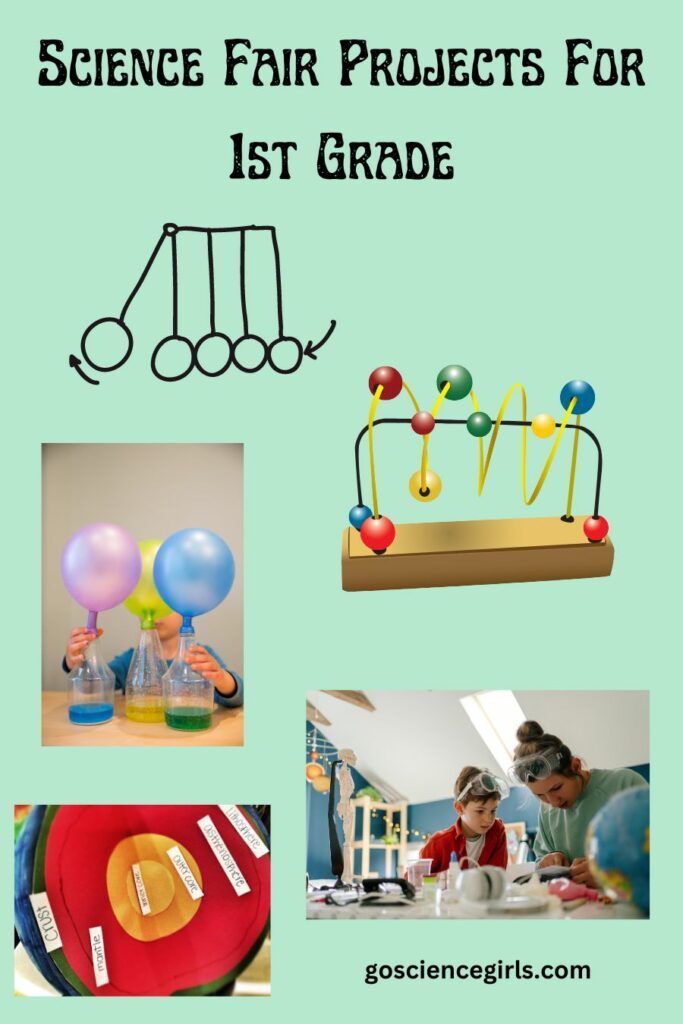
Leave a Reply Cancel Reply
Your email address will not be published. Required fields are marked *
Name *
Email *
Add Comment *
Save my name, email, and website in this browser for the next time I comment.
Post Comment
The Trapped Librarian
Make your library the center of your school
February 19, 2021 by: Laura
Research Skills for Kindergarten and First Grade
Last Updated on February 18, 2024 by Laura
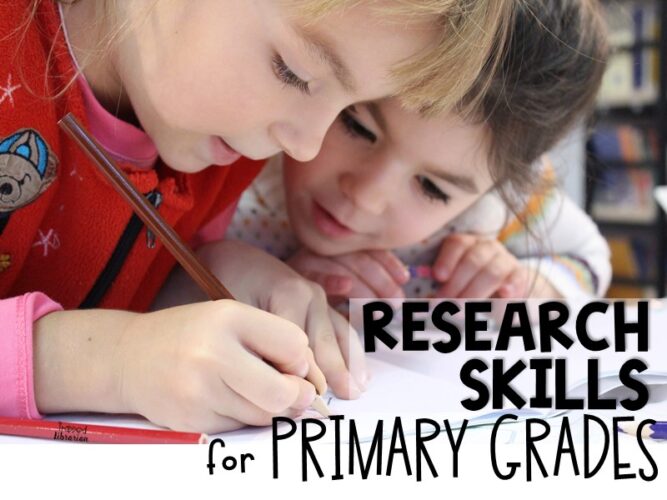
Is it possible to teach research skills in the primary grades? Of course the answer is a resounding “YES!” The key is looking at the big picture – what will your students need as they progress though school? Research skills for kindergarten and first grade students lay the groundwork for future learning and success. Think of these skills in the primary grades as building a strong foundation.
Scaffold Research Skills
As with so many important skills, we need to start small when approaching research skills for kindergarten and first grade students. But, don’t just think about your students’ needs right now – look to the future. If you begin with the end in mind (5h grade? 8th grade? 12th grade?), you will be helping your young students understand concepts that will serve them well in later learning. It is important to teach skills each year that build upon one another .
Use Research Vocabulary
Using the proper vocabulary while teaching research skills to primary students is one way to build that strong foundation for future learning. Make sure you use the same words that you use with your older students, taking time to explain their meanings and give examples as you go. These words will be familiar each year as you do more research lessons. Some important words to consider:
- Informational Text
Do a Project Together
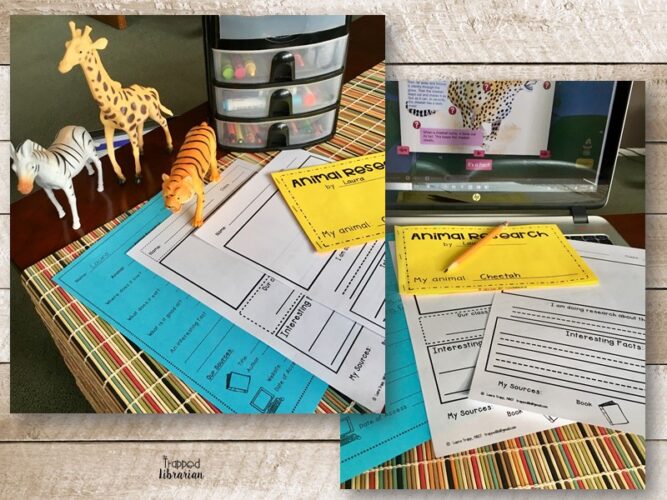
One strategy for teaching research skills to kindergarten and first grade students is to do a project together. As the teacher, you can choose the topic – perhaps George Washington or Abraham Lincol n in February, or your school’s mascot animal any time of year. You might even want to try a holiday research activity in December. Using a simple notetaking outline or booklet, you can model taking notes and writing down interesting facts as you go.
Give Choices
Of course, it’s always nice to give choices when you can. You want your students to know that they can use library resources to explore topics of personal interest any time! Now, I know I just suggested that you do a guided project together, but can you offer choice within your guided project? Giving your kindergarten and first grade students the choice between George Washington or Abraham Lincoln is still manageable for you as a librarian or teacher. You could also let them choose an animal to researc h . Give a list of 5 to choose from, if you’re concerned about this lesson getting out of control.
Use Kid-Friendly Resources
Does your school library subscribe to any online databases for primary students? The Abdo Zoom Animals and Biography databases are excellent for kindergarten and first grade students. When you guide them through a joint research project and model searching and navigating your databases, you’re definitely setting your young learners up for future success. After the project is over, give them time to explore topics of their own choosing using the database.
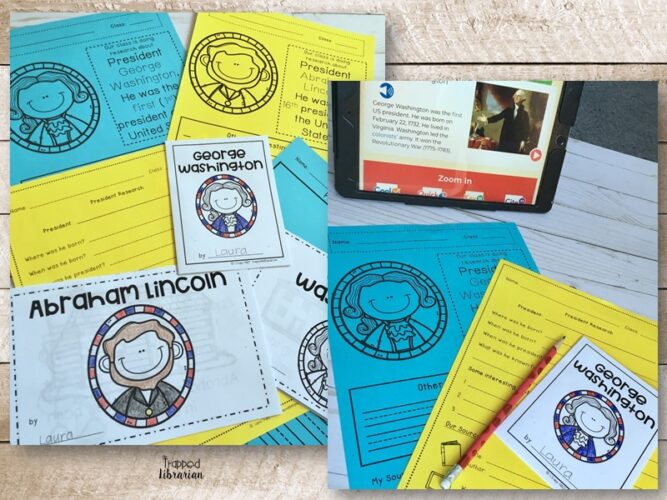
Choose a couple of strong print resources to use during your research project. Blastoff Readers and Bullfrog Books are excellent choices for their text features, clear photos, and kid-friendly layout. Create a display of related nonfiction titles for your kindergarten and first grade students to explore after the research is complete.
Encourage Sharing
One of the biggest joys of learning is sharing new information with others! Students can create a poster to display on a bulletin board, or a booklet to read to a big buddy. And of course you’ll want to encourage your primary students to bring home their projects to share their learning with their families!
Make it Easy on Yourself!
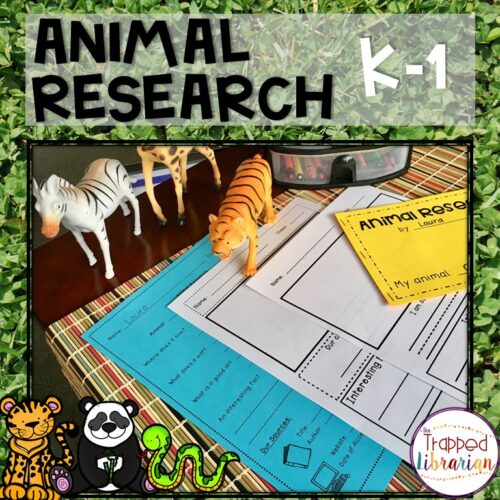
If you’re looking for made-for-you activities to help you teach research skills to your kindergarten and first grade students, I can help! These popular resources have been used as whole group activities, centers, and collaborative projects.
- Animal Research K-1 is fun and engaging any time of year!
- President Research K-1 is great for February activities around President’s Day.
Research Skills for Elementary Students
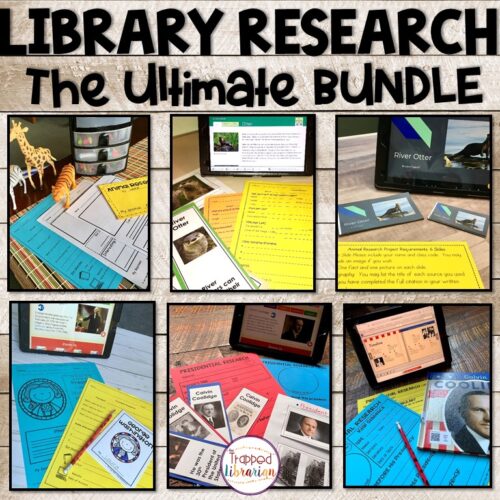
Research skills for kindergarten and first grade students lay the foundation for future learning. If you’re looking for scaffolded lessons to take the learning from kindergarten to fifth grade, check out the resources in this Ultimate Research Bundle . You’ll get lessons and activities for animal research projects and president research projects. Each grade builds upon skills taught the previous year. Help your students progress in their mastery of research skills throughout their elementary school years!
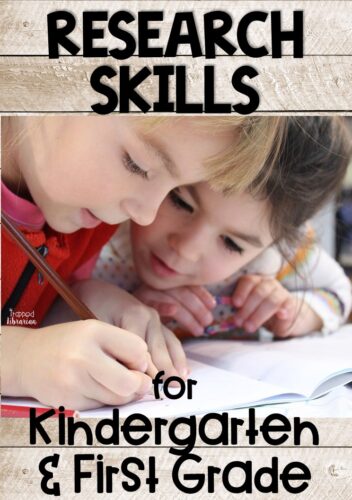
Be the light!

February 19, 2021 at 6:49 PM
Great tips for easing our littles into research! Thanks!
February 28, 2021 at 10:55 AM
First of all, I would like to mention that I really enjoyed reading your post and appreciate all the tips you are sharing. Second of all, you mentioned to “do a project together”. I have been a Kindergarten and Grade one teacher in the past and I remember how hectic things could get when I was trying to get every student connected at once. I don’t have any teacher librarian experience, I am currently enrolled in a Teacher Librarian program. So what suggestions do you have to run this experience smoothly? I was thinking in asking the help of the classroom teacher for that purpose but maybe there are other ways to do this. Thank you.
March 23, 2021 at 9:42 AM
Hi Carla – Thanks for stopping by! With these littles, you could project your source on the big screen and read through it with them, modeling your thinking and even taking very simple notes (using your document camera – toggle between the computer display and the doc cam). In “normal” years, I would pair up these students as a follow up to the lesson and allow them to explore the source (for example, Abdo Zoom – Animals or World Book Early World of Learning Animals category). Yes, you could get a volunteer or two or some older kids to come in and help. I would set up my computers before class and then rotate around and help students as needed. It is chaotic at first, but they get comfortable with the navigation pretty quickly, especially when you’ve modeled it first the week before. Best wishes to you!!
January 2, 2022 at 10:11 AM
You mentioned a winter sports research project. Is that one available for purchase? That would be fantastic for the Winter Olympics in February. Thank you for sharing all your fabulous lessons.
January 2, 2022 at 10:55 AM
Hi Kayla! I do have a resource for Winter Olympics/Winter Sports. It’s a bulletin board and mini research project and you can find it here: https://www.teacherspayteachers.com/Product/Winter-Sports-Bulletin-Board-and-Mini-Research-Kit-3653324?utm_source=trapppedlibrarian.org&utm_campaign=TL%20Winter%20Sports%20Blog
March 28, 2022 at 5:52 PM
I was doing research just today with my pre-k and 1st grade classes. We started with a KWL chart, listing things students know about birds, then developed questions for the want to know column. When we had 3 questions, I divided the students into small groups and gave them non-fiction picture books about many kinds of birds to look through and find answers. My TA, the pre-k TA, and I helped guide the students’ research and helped with reading as necessary.
Questions were: are all birds born from eggs? why do birds lay eggs in nests? are all nests built in trees?
Students were very engaged and excited about researching “like the big kids”.
April 15, 2022 at 10:22 AM
Sounds like a great lesson, Denise! Thanks for sharing!

thetrappedlibrarian
📚 Elementary School Librarian 🌟 NBCT 2011 👩🏻🏫 Teacher Author Blog: trappedlibrarian.org

Firstieland - First Grade Teacher Blog
Where learning feels like play.
Animal Habitats – A First Grade Research Project
Learning about animal habitats in first grade is always a fun and exciting activity. Students love learning about different animals and this lesson makes it even more engaging when they get to build their own habitat!
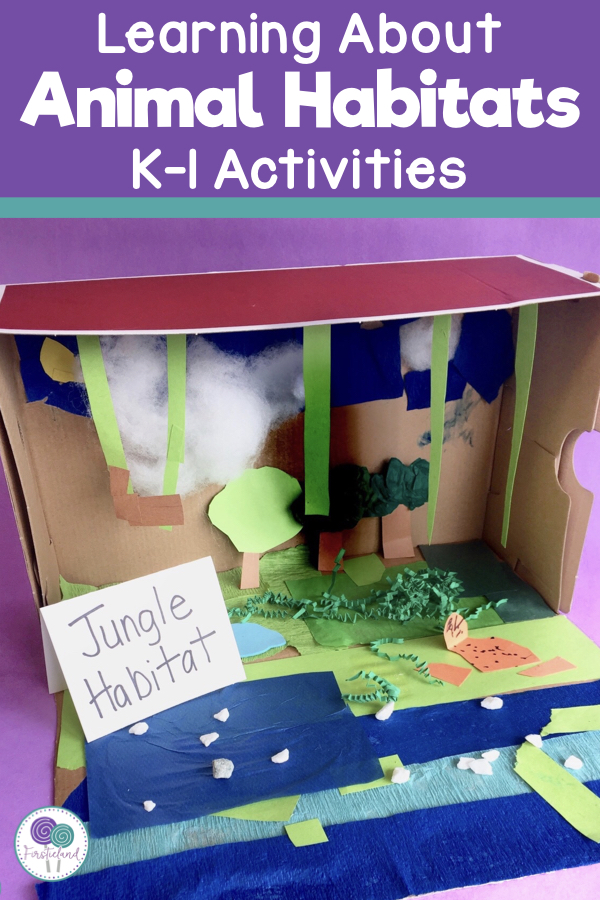
Page Contents
What Is A Habitat?
To begin, we needed to understand the definition of a habitat and the animals that lived in the different habitats around the world. We watched a couple of short videos on Youtube to help us set the stage.

Choosing An Animal To Research
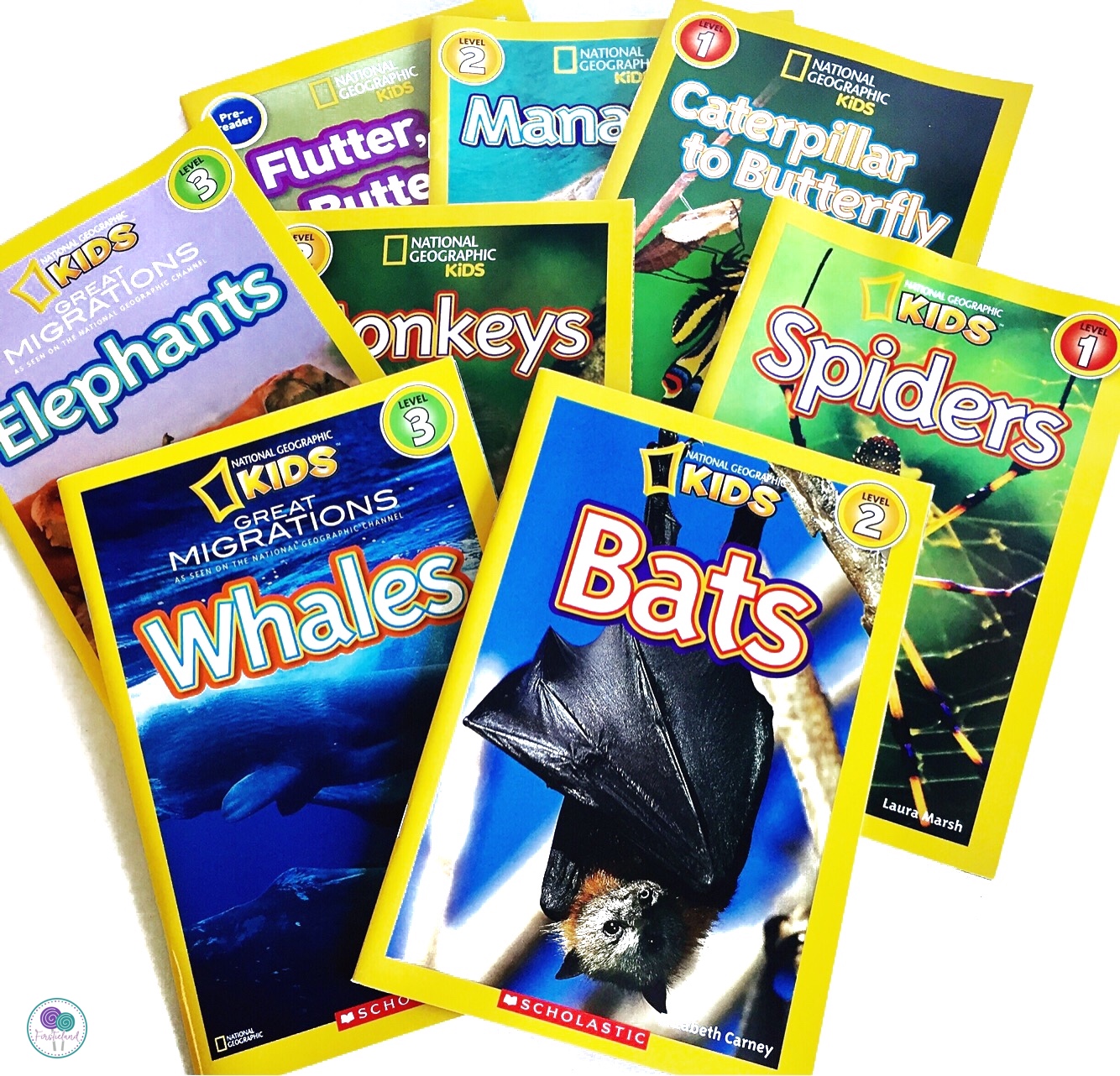
Pre-Writing Activities
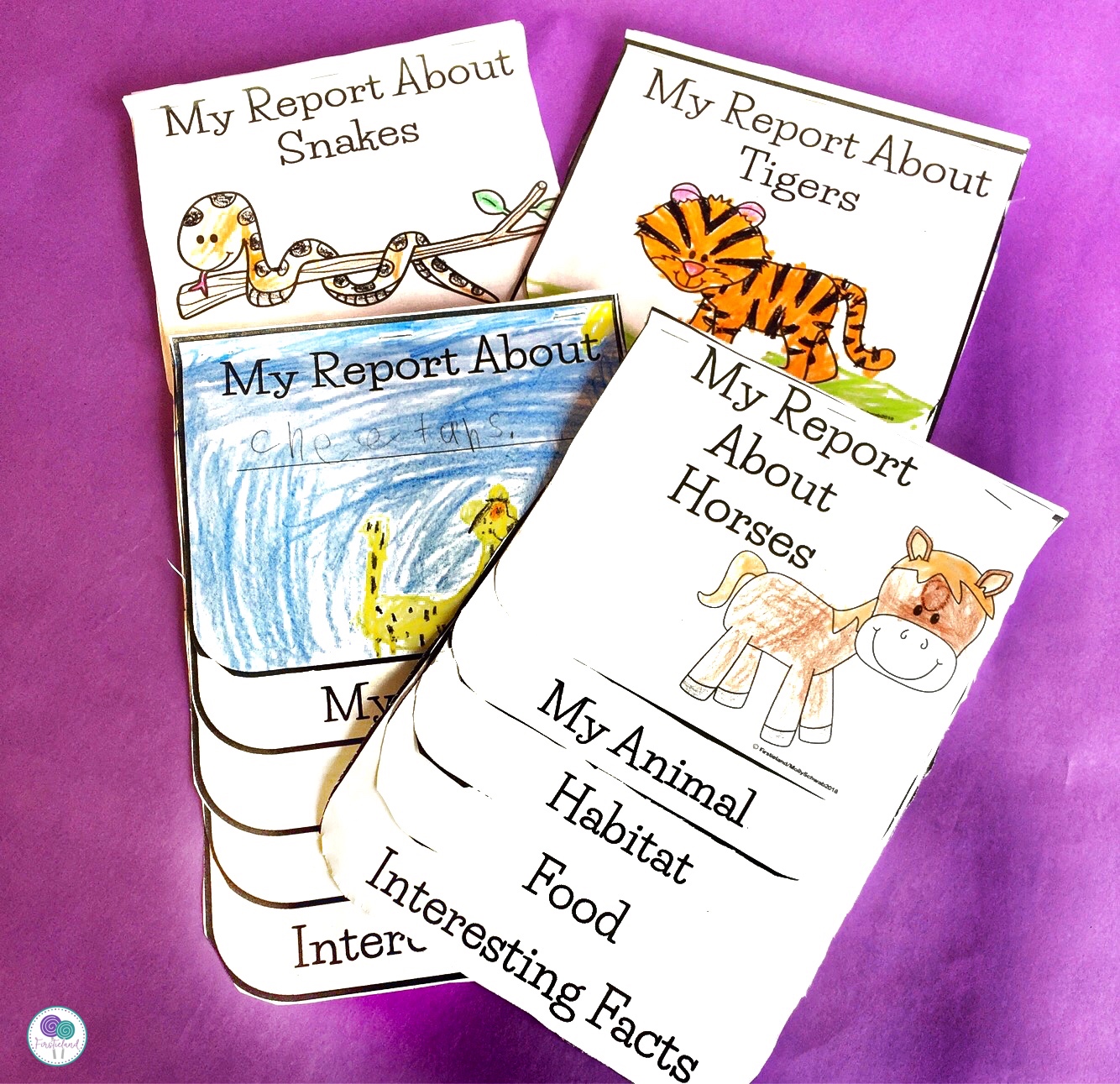
Building Our Animal Habitats
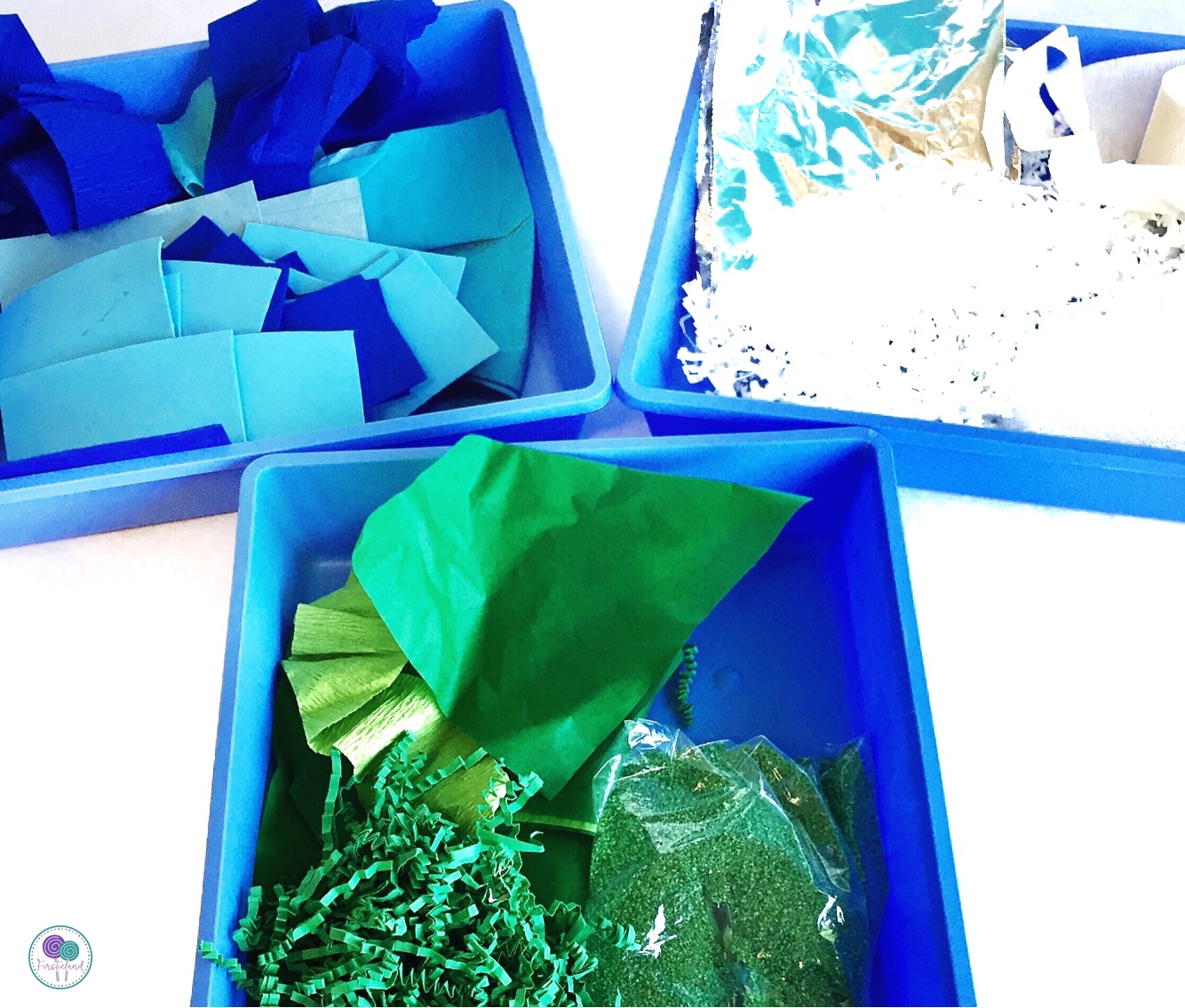
Our Completed Animal Habitats
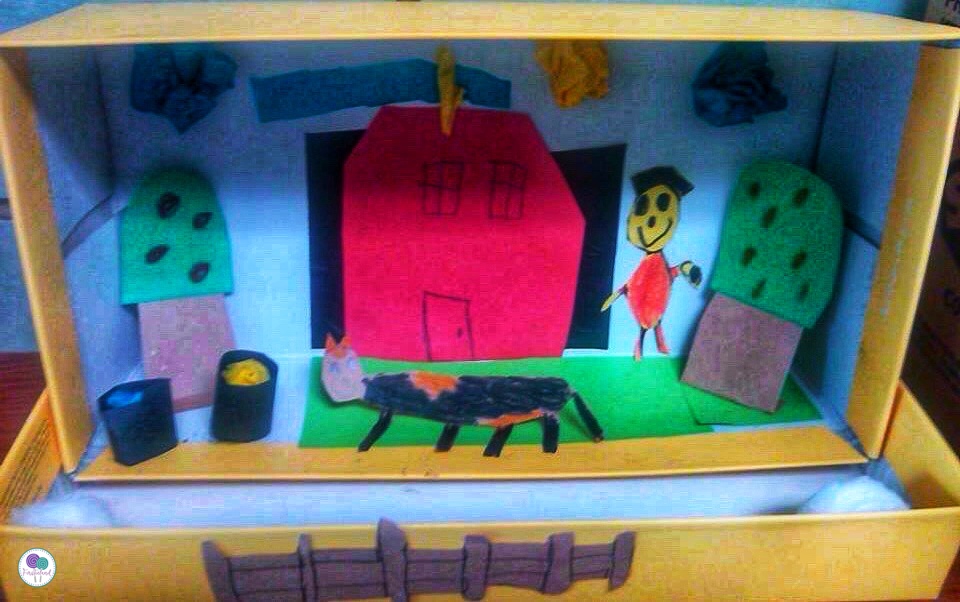
Writing Our Reports
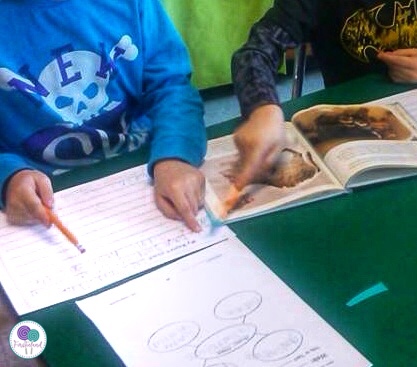
This site contains affiliate links. This means that if you purchase something using this link we will receive a very small portion of the sale. The price of the item purchased remains the same whether you use an affiliate link or not. We will only recommend products and resources that we believe will be of value to our customers. By using our affiliate link you are helping to support this website and we genuinely appreciate your support!
Instagramland

Facebookland
Firstieland
Pinterestland
Privacy overview.
| Cookie | Duration | Description |
|---|---|---|
| cookielawinfo-checkbox-analytics | 11 months | This cookie is set by GDPR Cookie Consent plugin. The cookie is used to store the user consent for the cookies in the category "Analytics". |
| cookielawinfo-checkbox-functional | 11 months | The cookie is set by GDPR cookie consent to record the user consent for the cookies in the category "Functional". |
| cookielawinfo-checkbox-necessary | 11 months | This cookie is set by GDPR Cookie Consent plugin. The cookies is used to store the user consent for the cookies in the category "Necessary". |
| cookielawinfo-checkbox-others | 11 months | This cookie is set by GDPR Cookie Consent plugin. The cookie is used to store the user consent for the cookies in the category "Other. |
| cookielawinfo-checkbox-performance | 11 months | This cookie is set by GDPR Cookie Consent plugin. The cookie is used to store the user consent for the cookies in the category "Performance". |
| viewed_cookie_policy | 11 months | The cookie is set by the GDPR Cookie Consent plugin and is used to store whether or not user has consented to the use of cookies. It does not store any personal data. |
Enjoy this blog? Please spread the word :)
GET TEACHING TIPS AND FREE RESOURCES
- Skip to primary navigation
- Skip to main content
- Skip to primary sidebar
- Skip to footer
The Brown Bag Teacher
Teach the Children. Love the Children. Change the World.
January 18, 2015
Penguins and Polar Bears: 1st Grade Research
Laying our foundation.
We started our week with a quick pre-assessment . Split into 5 groups, students visited each of the questions (set on a table) and wrote/illustrated their ideas about the true/false phrases below. At the end of the week, we revisited the assessment and corrected our thinking!
Integrating Our Learning
Penguin comparisons, how does blubber protect animals.
Throughout the week, we were amazed at just how cold the North and South Poles can get. Living in Kentucky, it’s incredibly difficult to imagine what -76 degrees feels likes, and even more difficult to imagine living there. Over and over, I heard – how can animals live in such cold places?? Therefore, a blubber experiment was in order! To make the experiment manageable, a parent volunteer joined our class, so we could split into 2 groups. Thank goodness for volunteers!
We started the experiment by placing our hand in a bowl of ice water for 5 seconds (long enough for students to feel cold but not long enough to hear complaining). We then went back to our desks and wrote about about the first phase using a recording log from my Tundra Resource .
Penguin & Polar Bear Adaptation Research
Now, this experiment answered just one of our questions about all things cold and we had MANY!
So, we made our 1st venture into research. This is a Common Core skill for 1st graders, but one that it really hard to put into practice….I mean our kids are 7. Still, it needed to happen, so this week I channeled my kids’ curiosity. Knowing that my friends were not ready for prime-time research, we used QR Code research mats. Using 6 websites and videos I pre-read and pre-watched, I linked them on the below mat. Then, using iPads with a partner, students explored the resources I included and took notes about their learning. ( SNAG THE FREE QR CODES HERE .)
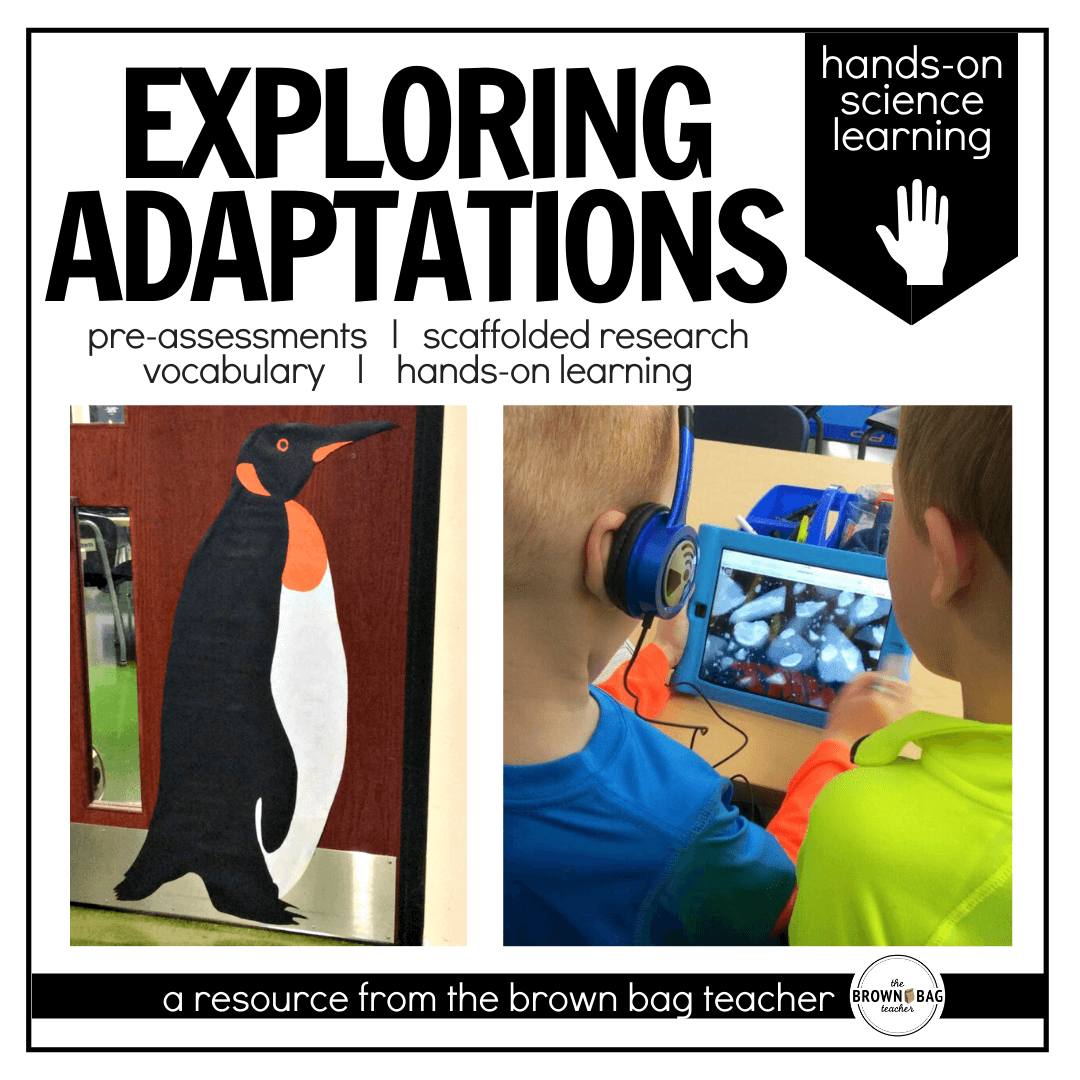
Well, friends, it was definitely an awesome week. You can snag these resources for your own classroom here on Teachers Pay Teachers in my Exploring the Tundra resource.The highlight was the research. My kids were so excited to explore and learn, and using the QR Code mats made it so simple. Have you used QR Code Mats before? What other tips do you have for research in the primary grades? I’d love to hear your ideas!
Get Free Teaching Resources!
Join me for weekly classroom updates and free resources that are just-right for your guided math classroom!
Sweet! Thanks so much for joining me. Now check your email to confirm your address & snag your freebies. Happy Teaching! -Catherine
There was an error submitting your subscription. Please try again.
Related Posts
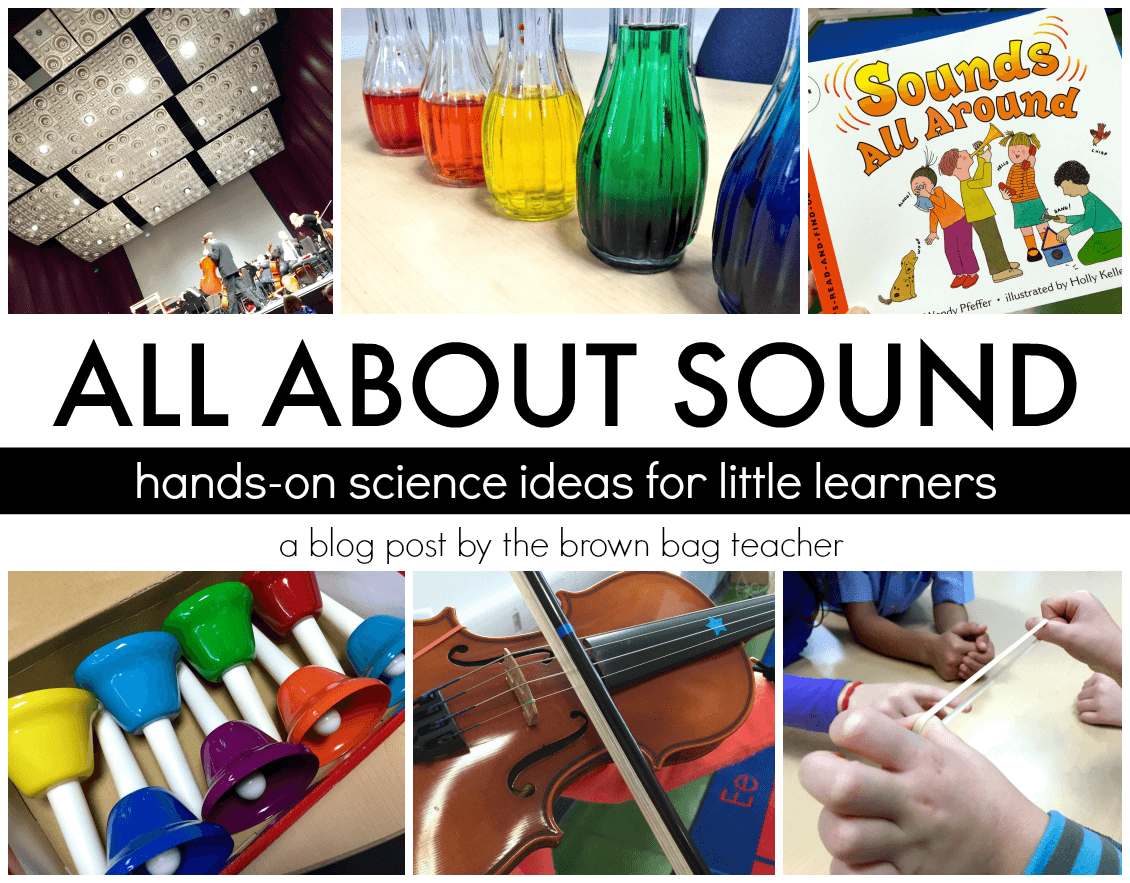
Reader Interactions
January 18, 2015 at 1:13 am
Love the QR code mat. They still have the choice of where to get their information but it's from websites you know and can trust rather than a random google search. Thanks for the great ideas 🙂 Sheri.
January 18, 2015 at 9:30 pm
Of course, Sheri! Especially in 1st grade, they definitely aren't ready to discern a Google search, and I would be SO afraid to see what might come up. 😉
January 18, 2015 at 4:29 am
Thanks so much for the QR code mat! What a fabulous idea! My kids will love it!
Marissa First Grade STARS
January 18, 2015 at 2:56 pm
This is a fabulous idea! Thank you so much for sharing- my kids love using QR codes. Carol
January 18, 2015 at 9:29 pm
Thanks so much, Carol! I'm so glad it will work for your friends. 🙂
January 22, 2015 at 7:05 am
You inspired me again! I was just blogging about Chatter Pix and was browsing your blog to link your post. These QR mats are amazing and are something I WILL start doing with my kiddos. Seems like 1st grade is also a perfect fit for you! Kristen
January 27, 2015 at 2:28 am
Thanks so much for creating this! I have been wanting to work on research but I didn't figure out the best way to handle it with my first graders. This is perfect!! I know the kids will be so excited to use their iPads and also to learn. Do you plan on making any other qr research mats?
April Wolfelicious [email protected]
January 28, 2015 at 2:00 am
Hi April! Thank you so much. I'm planning on doing a math for each month. It keeps us researching and gives us some hands-on technology practice. As we use them, I'll make sure to share!
March 10, 2016 at 4:27 am
I love the QR mat. We are researching sea animals I have made some ThingLinks to store videos, websites and information about sea animals so my students can access the info on their iPads. Here is a link to my sea turtle ThingLink. https://www.thinglink.com/scene/646187209774333952 Thanks for sharing your research ideas. I love researching with first graders, they are so curious!
March 27, 2016 at 6:24 pm
These are awesome! I can't wait to see what other research mats you make!
December 13, 2016 at 3:56 pm
Thanks for the freebie! My students and I love using QR codes but I haven’t spent the time to create my own. I love using it to research.
December 28, 2016 at 9:23 pm
Always a fan of your work. Thank you so much for sharing this for free. I am so excited to use it when we go back!
May 6, 2023 at 6:07 am
One of our visitors recently recommended the following website. 안전놀이터
May 17, 2023 at 9:12 am
I would like to thank you for the efforts you had made for writing this awesome article. 토토
August 28, 2023 at 9:33 am
Hi, I’ve been having a hard time lately. Your writing comforted me a lot. Thank you very much for giving me so much strength. I’ll be back next time
September 2, 2023 at 1:38 am
You had a great weekend. My neighborhood was very depressed because it rained a lot. The sun is shining brightly today. I feel good
September 2, 2023 at 9:23 am
Wow, superb blog layout! Magnificent, let alone the content 고스톱
October 3, 2023 at 7:25 am
This is so much hilarious blog, Anyways thanks for posting ideas. 스포츠토토존
February 10, 2024 at 6:49 pm
[url=https://sexy-pg-th.com/member/articleinfo/Asia99live]Asia99live[/url] คาสิโนค่ายใหญ่ในเอเชีย เว็บน้ำดีการันตีความมั่นคง
February 10, 2024 at 6:47 pm
Asia99live คาสิโนค่ายใหญ่ในเอเชีย เว็บน้ำดีการันตีความมั่นคง
June 6, 2024 at 6:34 am
Ultimately, escorts services bring clients a offer to fulfill their dreams and provide a valuable opportunity for personal growth and fulfillment. Goa Escorts ||
June 6, 2024 at 6:37 am
join us our escorts
Leave a Reply Cancel reply
Your email address will not be published. Required fields are marked *
Notify me of follow-up comments by email.
Notify me of new posts by email.
Please go to the Instagram Feed settings page to create a feed.
- Grades 6-12
- School Leaders
Get our FREE Classroom Seating Charts 🪑
8 Genius Research Projects for K–2 Students You Will Definitely Want to Try
Turn your K–2 students into researchers and detectives with these fun classroom projects.
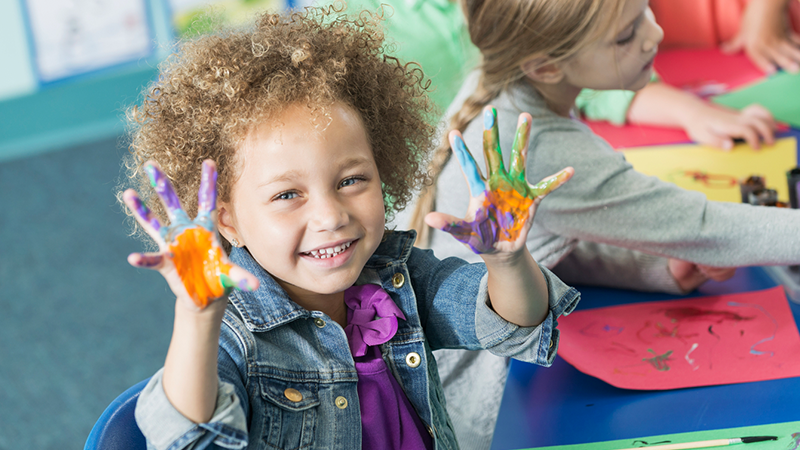
PebbleGo is the award-winning database for reading and research for K-2. It makes learning fun while improving reading and research skills. Learn more about the six different databases—Animals, Science, Biographies, Dinosaurs, Social Studies and the Spanish-language Animals.
Research-based learning is often reserved for students in upper elementary or middle school, but this is a skill that kids can and do learn at an early age. Yes, you can teach kindergarteners how to do proper research (i.e. be awesome detectives and readers) .
Here are eight inspiring research projects on subjects common for the K–2 age group. For each one, we give tips for LEARNING about the specific subject first with key research questions and tasks. Then, we offer a creative project idea, inspired by teachers and educators around the country, for DOING with your students.
1. The World of Bugs
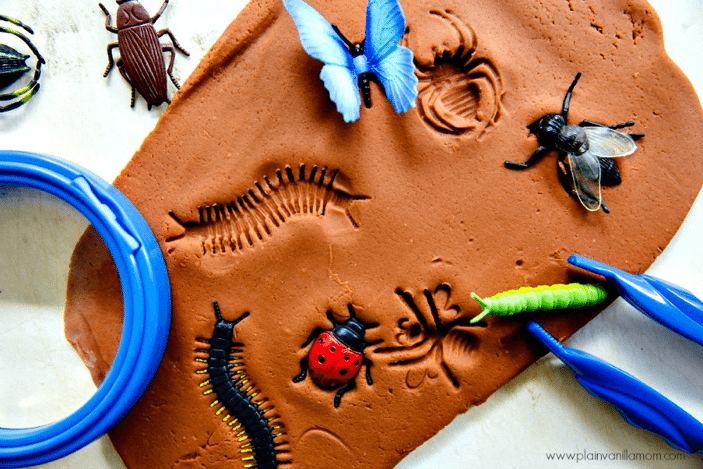
SOURCE: Plain Vanilla Mom
It’s a big, enormous world out there—and there are lots of bugs in it. This is a good one to start with if you’re teaching young elementary students how to research. Spiders, insects, and bugs will forever be fascinating subjects for kids. So this project should generate a lot of excitement.
LEARNING: Assign each of your students a different bug and have them answer very simple questions like: How many legs do they have? Where can you find them? How big are they?
DOING: This bug fossil activity is fantastic! All you need is modeling clay, plastic insects (which you can get at the dollar store), a magnifying glass, and tweezers or tongs. Your students will love making the little molds, and it will really encourage them to pay attention to detail!
2. Money, Money, Money
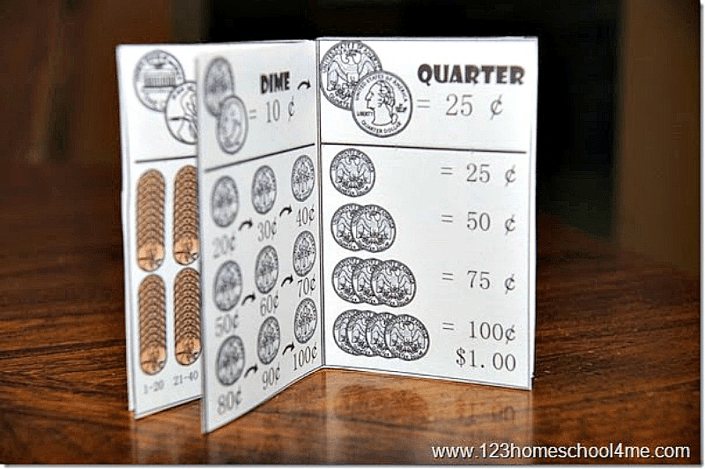
Source: 123 Homeschool 4 Me
Understanding the value of a dollar, counting, and even doing small math problems with money are all skills that your students will be doing for years to come. Here’s how you can get them going on concepts now.
LEARNING: Start with the basics and make sure your students know the value of each bill and coin. Once they understand this, talk to them about earning money, saving, and even the purpose of banks.
DOING: Get inspired by this money minibook. Either download a free one (see link above) or create your own version to meet your classroom needs. Create several books for your class or one for each student as a quick reference to help them really understand the value of money.
3. History and Fame
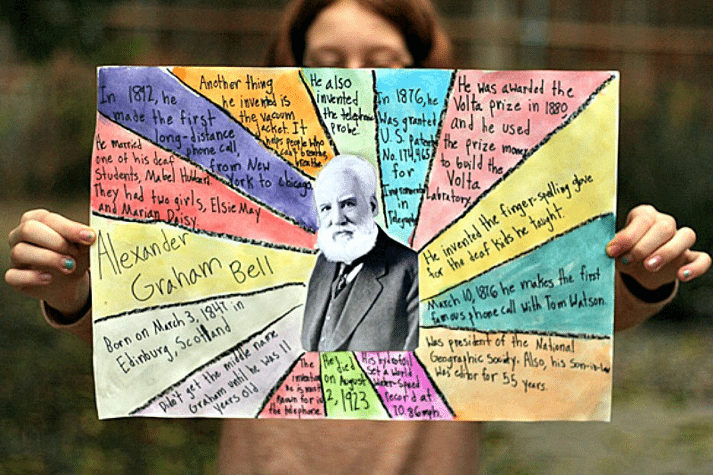
Source: Let’s Explore
Every grade level has history and biographies as part of its curriculum. It’s essential for students to learn about historymakers, inventors, artists, and other important people of the past, and there are lots of fun ways to do this.
LEARNING: The research comes first, so it’s a good idea to assign a famous person to each of your students. Have them do a little biography, answering questions like: When were they born? Why are they famous? Where did they live?
DOING: Now it’s time for the fun part, where students get to be creative in reporting their results. Some teachers have the students get up in front of the class to present on their specific person, while others make it an art project. We love biography poster collages, like the one pictured above, because they really encourage students to focus on the most essential biographical facts.
4. Learning Plant Life Cycle

Source: The Imagination Tree
Learning about plant life is always a popular classroom activity. It’s such a great opportunity to show students how things grow, and help them understand where their food comes from.
LEARNING: Students can research farming and agriculture, and learn about where food comes from, both locally and around the world. Discover where tropical fruits like bananas and pineapple come from compared to crops in the United States like corn, potatoes, and beans. Help students understand that all plants have a similar start like the beans you will grow in class.
DOING: Plant your bean plants in a clear container like a jar. You can use paper towel or cotton balls for the planting so students will be able to see the roots grow and develop. Have students track the plant’s progress. They can measure it, take photos, or draw pictures every few days. Your students will love seeing how it changes so quickly.
5. Animal Tracks
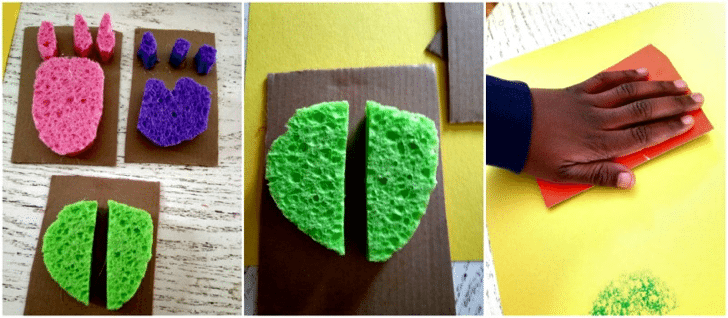
Source: Green Kids Crafts
Animals are such a big interest area for younger elementary students, and they make lessons instantly more popular. This really useful lesson covers animals, human anatomy, and animal habitats.
LEARNING: When your class studies animal tracks, students can learn a lot about animals. For instance, they can learn about an animal’s size. They can also compare the size of the animal track to their own handprints or footprints for an anatomy lesson. And students can learn about animal habitats, too! We can help our students understand how all of these items are connected.
DOING: Now that your students have learned about animal tracks, have them recreate the tracks using cardboard scraps and sponges. This will give them a real idea of the actual size and shape of different tracks in the wild.
6. Digging into Dinosaurs
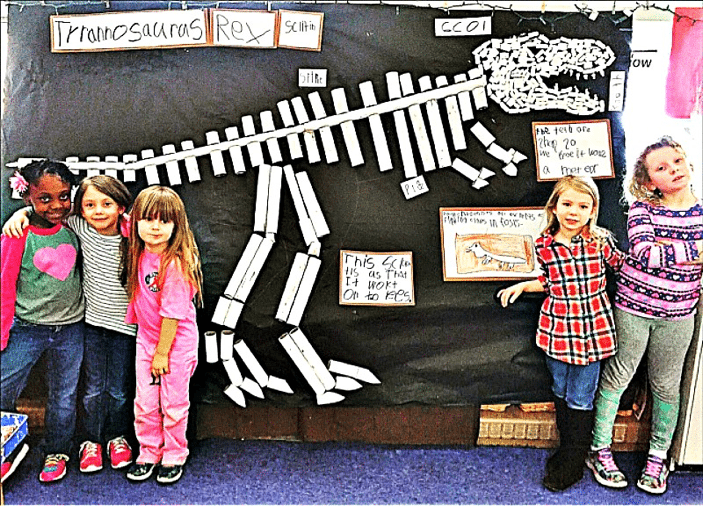
Source: Inquiring Minds
Even though they’re now extinct, dinosaurs remain some of the most popular animals with kids. Once you get your students researching, they can learn so much about these magnificent animals that came before us.
LEARNING: Help your students define the words “paleontology” and “paleontologist.” Next, encourage your kids to research different types of dinosaurs. Have them answer questions like: What were some of the big ones? Which ones could fly? What did different types of dinosaurs eat? These will all be important questions to answer before you dive into a project.
DOING: You can steal the sponge idea mentioned above to also create dinosaur tracks. Or for the ambitious teacher, create your very own giant dinosaur skeleton. This teacher outlined the shape for her students and then let them use packing peanuts and empty cardboard tubes to fill the inside.
7. Environment and Pollution
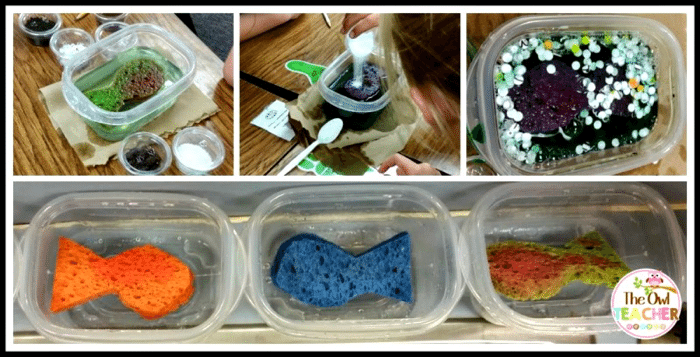
Source: The Owl Teacher
Whether you’re looking for a good Earth Day activity or you just want to teach your students more about environmental issues we are facing around the world, you can bring home the message by studying water pollution. This is a topic that affects millions every single day.
LEARNING: First, learn about the different types of pollution with your students. Air and water pollution are two big ones to start with. Help your kids learn the difference between these two and what they look like. Then ask them a question like, how could pollution affect animals, humans, and the future? Questions like this might seem too big for little minds, but they can handle it!
DOING: It really helps to see this lesson firsthand, and this Freddie the Fish activity is perfect. You’ll definitely want to see this teacher’s step-by-step instructions describing how she did it, but the basics involve a fish-shaped sponge, plastic containers, and adding different toxins to the water. Your students will really start to see how a little bit of water pollution can really get out of hand quickly.
8. Color Mixing
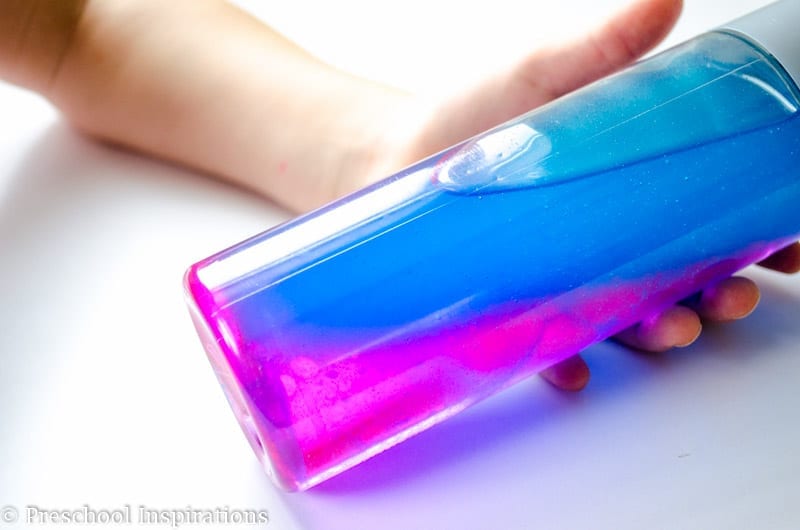
Source: Preschool Inspirations
Color mixing is always a popular activity, and it’s great for hands-on research. Your students will love being in charge of the colors and watching them change before their eyes.
LEARNING: Talk to your students about primary colors and go over the basics of what happens when you blend colors together. Depending on age, talk to them about why this happens and/or what they are seeing. Work with them to come up with a list or anchor chart about the most common color combinations.
DOING: There are so many great color-mixing activities out there, including mixing colorful ice cubes or having a color mixing station in the classroom. We also love this project from Preschool Inspirations, where they make sensory bottles with color mixing.
Make research for your K–2 students easier by using PebbleGo , a reading and research database specifically targeting younger elementary students.
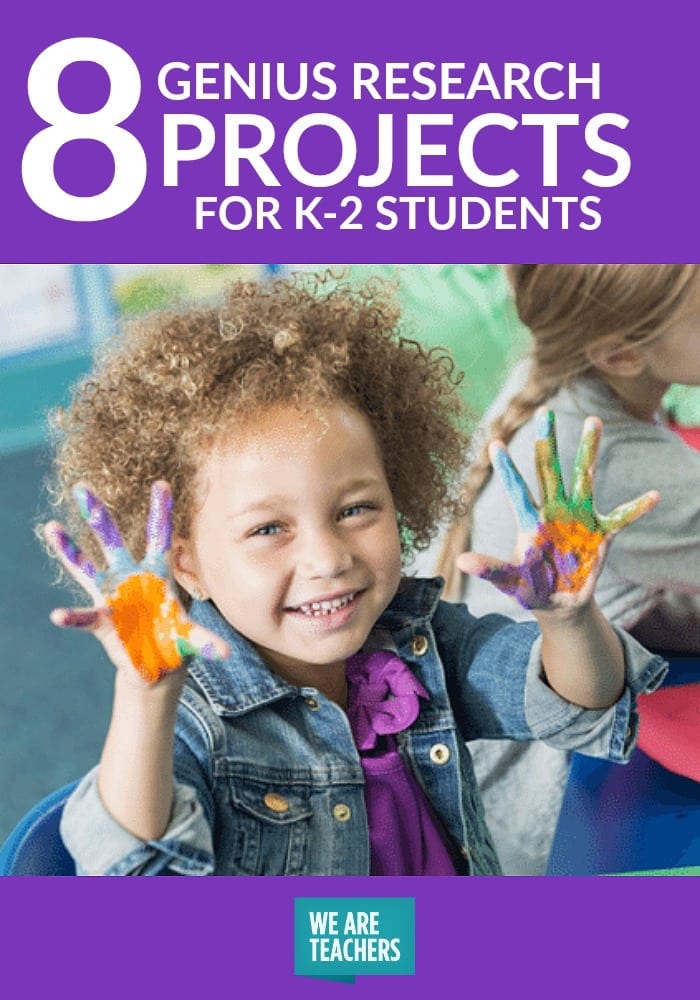
You Might Also Like
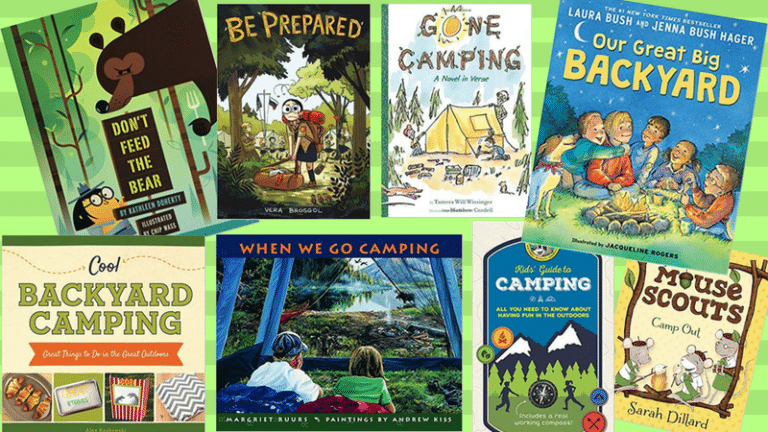
23 of Our Favorite Kids’ Books About Camping
The perfect books to read by the fireside. Continue Reading
Copyright © 2024. All rights reserved. 5335 Gate Parkway, Jacksonville, FL 32256

Resources for parents, grandparents, teachers & students

Researching with 1st Grade-Teaching Good Research Steps
Mar 19, 2015 • 2 Comments
Teaching good research habits to younger grades is a very important part of being a librarian. In the past, I have introduced the research steps using a lesson that connected the Big 6 steps to following a recipe for making an apple pie. You can read about this “Recipe for Research” lesson on my blog here. Typically, after I do this lesson, we would investigate Non-Fiction books, Text Features, and databases, and then they would do their research later in their classrooms with their teachers. This year, I wanted to be more involved in helping them learn how to do the actual research part, so I decided to do a mini-research project with my first graders as part of their library lessons. Step #1 I started off by asking them what they wanted to learn more about. Most of them answered with some sort of animal, so we decided that our first research project together would be about animals. This was actually perfect, as w e had just finished reading the book Those Darn Squirrels by Adam Rubin. (By the way, if you haven’t read this, it’s a FANTASTIC book. The kids LOVE raising their fists and shouting “Those Darn Squirrels!” whenever Old Man Fookwire yells at the crazy squirrels in his backyard. Plus, they were super excited to find out that there are 2 more books in the series!)
I told them that I was going to research Squirrels since we had just read about them, and then I introduced them to PebbleGo . This is an absolutely FANTASTIC database by Capstone Digital! It is ideal for younger grades, and makes it super easy for them to find information. Each topic is divided into 6 main tabs: body, habitat, food, life cycle, fun facts, and related articles. Each tab allows the student to either read or listen to the information, and most topics have a video they can watch as well. It is slightly expensive, but well worth the money! (If you are interested in checking it out, you can get a free 2 week trial by filling out a short form found here .) I gave them some time to explore the database so they would be familiar with it for our next lesson, and I told them to think about what animal they would like to research.
Step #2 On their next visit, we quickly reviewed the “Recipe for Research” steps again, and brainstormed a list of “egg” questions to research about their animal. T hey came up with things like: what does my animal eat, how fast can it run, who is it afraid of, how does it move, where is it’s home, etc. I created a Research Brochure (aka: note-taking tool) and had them chose 4 questions to write inside each egg.
Once their questions were written down, I asked “What do you think the lines underneath each egg are for?” They correctly guessed it was for their answers to the questions. I had them look at the lines, and we discussed how they weren’t very long and they would have to make sure they only wrote down the important words. I pulled up information on Squirrels on PebbleGo, and we read that “Tree Squirrels have bushy tails that are as long as their body.” I had them help me find the “important facts” and I told them the general rule was they could write up to 3 words from a sentence. (I am trying to start them early on learning how to paraphrase and write notes, and not just copy everything that they see.) It was fun writing down their ideas, and then they would check to see if they had more than 3 words. After several tries, they came up with “long, bushy tails”. We practiced a few more times together, and then they spent the rest of their library time on PebbleGo trying to find the answers for their animal. Before they left, I collected their research brochures to keep them safe for next time. S tep #3 The next week in the library, I showed them another database that I love to use with the younger grades, Facts 4 Me . It’s super cheap (only $50.00 for an entire year subscription!) You can take a quick tour of the site to learn more here . It’s developed by former teachers, and the layout is also very friendly. Each topic starts with a “Quick Facts” section that gives basic information. On animals, it gives a variety of info such as: type, habitat, diet, weight, height, etc. Along the left side are photographs, and under the Quick Facts section are short paragraphs giving more information.
At the bottom, it even gives the exact citation to include on your Works Cited page, so I took this opportunity to begin teaching them how to do a simple Works Cited page. For the younger grades, I created just a simple ABC form (A=Author or website, B=Book Title or topic title, C=Copyright date). I told them anytime they used facts from a source, they had to fill out a slip for their Works Cited page. I had a stack and we just stapled the slip to their brochure so it all stayed together. I gave them the rest of this library period to finish finding answers to their questions.
Step 4 Now that they had their answers, I showed them how to take their notes and create detailed, complete sentences on notebook paper. We also talked about how to write a simple paragraphs (one paragraph for each “egg” question that they had answers for.) When they were done, I had them work in pairs and peer-edit. They helped each other with spelling, capitals, punctuation, and made sure that all their egg questions were answered. Step 5 I gave them a variety of formats to choose from for their final presentation: 1) They could write a basic report using the 2-page format.
2) They could make their own animal book using the brochure format including a Table of Contents and Author page.
3) Those that wanted to create a true Non-Fiction animal book could create one with a Table of Contents, Index, and Works Cited page.
Step #6 For their finale, each student presented their animal reports to the group. I believe it’s important for students to get practice talking in front of their peers. Next time, I think it would be fun to Skype with another library and let students from each class share. Technology options: There are so many different apps that you can use to present their final information as well. I love Tellagami and Sock Puppets, and both of these are easy to use. Since we completed these activities toward the end of the year, our normal schedules were interrupted due to state testing, book fair, and end of the year changes. Exploring those apps were a great way to keep the kids excited about their research project and provided motivation for them to finish. If you are interested in doing this research activity with your students, you can find it here on my website or at TpT store . I’d love to hear how you do research with your students! Sandy
2 Responses to “Researching with 1st Grade-Teaching Good Research Steps”
Clear and easy to follow, yet thorough and precise. Thank you!
You’re welcome Mona! I hope they help! 🙂 Sandy
Leave a Comment
Click here to cancel reply.
- Name (required)
- Mail (required) (will not be published)
XHTML: You can use these tags: <a href="" title=""> <abbr title=""> <acronym title=""> <b> <blockquote cite=""> <cite> <code> <del datetime=""> <em> <i> <q cite=""> <s> <strike> <strong>

Photo courtesy D&B Visual Events

Grab my button!
We are a participant in the Amazon Services LLC Associates Program, an affiliate advertising program designed to provide a means for us to earn fees by linking to Amazon.com and affiliated sites.
- Your Wishlist
- Your Account
- Testimonials
- About Sandy
Smitten with First
October 30, 2016
Bat Research FREEBIE

Latest on Instagram

- Research Skills
50 Mini-Lessons For Teaching Students Research Skills
Please note, I am no longer blogging and this post hasn’t updated since April 2020.
For a number of years, Seth Godin has been talking about the need to “ connect the dots” rather than “collect the dots” . That is, rather than memorising information, students must be able to learn how to solve new problems, see patterns, and combine multiple perspectives.
Solid research skills underpin this. Having the fluency to find and use information successfully is an essential skill for life and work.
Today’s students have more information at their fingertips than ever before and this means the role of the teacher as a guide is more important than ever.
You might be wondering how you can fit teaching research skills into a busy curriculum? There aren’t enough hours in the day! The good news is, there are so many mini-lessons you can do to build students’ skills over time.
This post outlines 50 ideas for activities that could be done in just a few minutes (or stretched out to a longer lesson if you have the time!).
Learn More About The Research Process
I have a popular post called Teach Students How To Research Online In 5 Steps. It outlines a five-step approach to break down the research process into manageable chunks.

This post shares ideas for mini-lessons that could be carried out in the classroom throughout the year to help build students’ skills in the five areas of: clarify, search, delve, evaluate , and cite . It also includes ideas for learning about staying organised throughout the research process.
Notes about the 50 research activities:
- These ideas can be adapted for different age groups from middle primary/elementary to senior high school.
- Many of these ideas can be repeated throughout the year.
- Depending on the age of your students, you can decide whether the activity will be more teacher or student led. Some activities suggest coming up with a list of words, questions, or phrases. Teachers of younger students could generate these themselves.
- Depending on how much time you have, many of the activities can be either quickly modelled by the teacher, or extended to an hour-long lesson.
- Some of the activities could fit into more than one category.
- Looking for simple articles for younger students for some of the activities? Try DOGO News or Time for Kids . Newsela is also a great resource but you do need to sign up for free account.
- Why not try a few activities in a staff meeting? Everyone can always brush up on their own research skills!
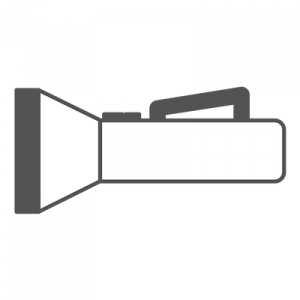
- Choose a topic (e.g. koalas, basketball, Mount Everest) . Write as many questions as you can think of relating to that topic.
- Make a mindmap of a topic you’re currently learning about. This could be either on paper or using an online tool like Bubbl.us .
- Read a short book or article. Make a list of 5 words from the text that you don’t totally understand. Look up the meaning of the words in a dictionary (online or paper).
- Look at a printed or digital copy of a short article with the title removed. Come up with as many different titles as possible that would fit the article.
- Come up with a list of 5 different questions you could type into Google (e.g. Which country in Asia has the largest population?) Circle the keywords in each question.
- Write down 10 words to describe a person, place, or topic. Come up with synonyms for these words using a tool like Thesaurus.com .
- Write pairs of synonyms on post-it notes (this could be done by the teacher or students). Each student in the class has one post-it note and walks around the classroom to find the person with the synonym to their word.

- Explore how to search Google using your voice (i.e. click/tap on the microphone in the Google search box or on your phone/tablet keyboard) . List the pros and cons of using voice and text to search.
- Open two different search engines in your browser such as Google and Bing. Type in a query and compare the results. Do all search engines work exactly the same?
- Have students work in pairs to try out a different search engine (there are 11 listed here ). Report back to the class on the pros and cons.
- Think of something you’re curious about, (e.g. What endangered animals live in the Amazon Rainforest?). Open Google in two tabs. In one search, type in one or two keywords ( e.g. Amazon Rainforest) . In the other search type in multiple relevant keywords (e.g. endangered animals Amazon rainforest). Compare the results. Discuss the importance of being specific.
- Similar to above, try two different searches where one phrase is in quotation marks and the other is not. For example, Origin of “raining cats and dogs” and Origin of raining cats and dogs . Discuss the difference that using quotation marks makes (It tells Google to search for the precise keywords in order.)
- Try writing a question in Google with a few minor spelling mistakes. What happens? What happens if you add or leave out punctuation ?
- Try the AGoogleADay.com daily search challenges from Google. The questions help older students learn about choosing keywords, deconstructing questions, and altering keywords.
- Explore how Google uses autocomplete to suggest searches quickly. Try it out by typing in various queries (e.g. How to draw… or What is the tallest…). Discuss how these suggestions come about, how to use them, and whether they’re usually helpful.
- Watch this video from Code.org to learn more about how search works .
- Take a look at 20 Instant Google Searches your Students Need to Know by Eric Curts to learn about “ instant searches ”. Try one to try out. Perhaps each student could be assigned one to try and share with the class.
- Experiment with typing some questions into Google that have a clear answer (e.g. “What is a parallelogram?” or “What is the highest mountain in the world?” or “What is the population of Australia?”). Look at the different ways the answers are displayed instantly within the search results — dictionary definitions, image cards, graphs etc.
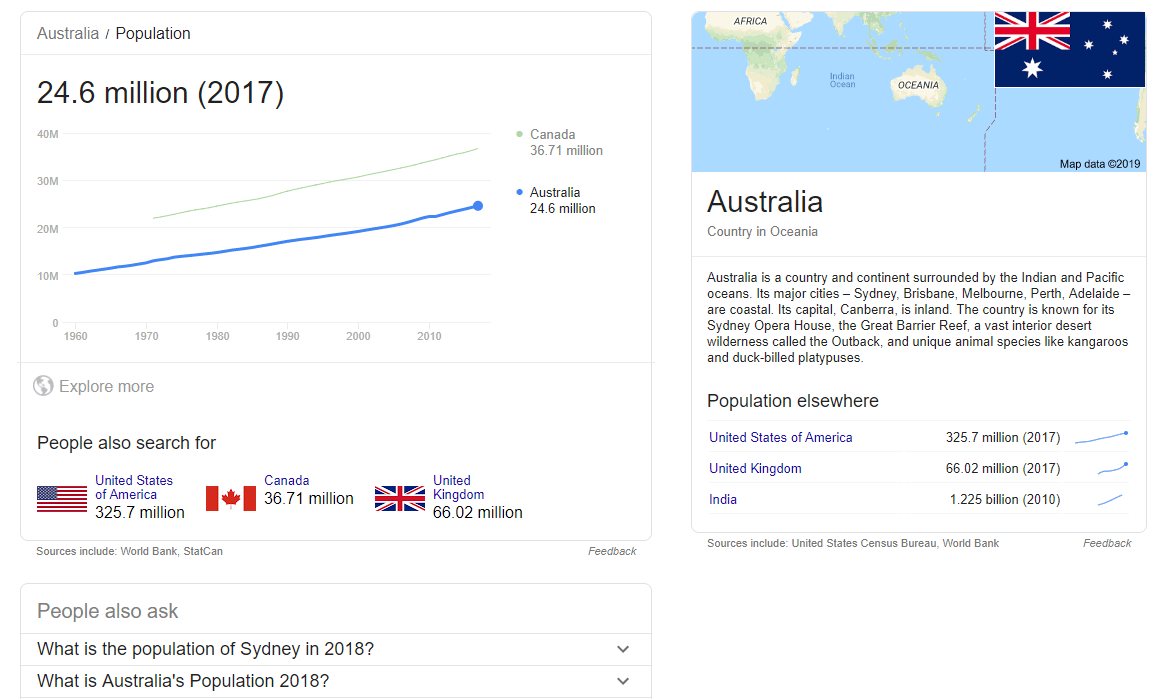
- Watch the video How Does Google Know Everything About Me? by Scientific American. Discuss the PageRank algorithm and how Google uses your data to customise search results.
- Brainstorm a list of popular domains (e.g. .com, .com.au, or your country’s domain) . Discuss if any domains might be more reliable than others and why (e.g. .gov or .edu) .
- Discuss (or research) ways to open Google search results in a new tab to save your original search results (i.e. right-click > open link in new tab or press control/command and click the link).
- Try out a few Google searches (perhaps start with things like “car service” “cat food” or “fresh flowers”). A re there advertisements within the results? Discuss where these appear and how to spot them.
- Look at ways to filter search results by using the tabs at the top of the page in Google (i.e. news, images, shopping, maps, videos etc.). Do the same filters appear for all Google searches? Try out a few different searches and see.
- Type a question into Google and look for the “People also ask” and “Searches related to…” sections. Discuss how these could be useful. When should you use them or ignore them so you don’t go off on an irrelevant tangent? Is the information in the drop-down section under “People also ask” always the best?
- Often, more current search results are more useful. Click on “tools” under the Google search box and then “any time” and your time frame of choice such as “Past month” or “Past year”.
- Have students annotate their own “anatomy of a search result” example like the one I made below. Explore the different ways search results display; some have more details like sitelinks and some do not.
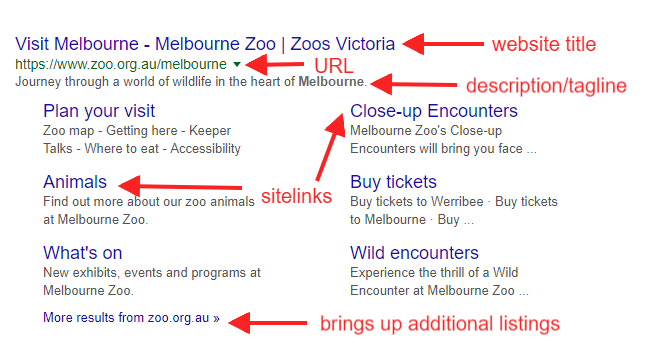
- Find two articles on a news topic from different publications. Or find a news article and an opinion piece on the same topic. Make a Venn diagram comparing the similarities and differences.
- Choose a graph, map, or chart from The New York Times’ What’s Going On In This Graph series . Have a whole class or small group discussion about the data.
- Look at images stripped of their captions on What’s Going On In This Picture? by The New York Times. Discuss the images in pairs or small groups. What can you tell?
- Explore a website together as a class or in pairs — perhaps a news website. Identify all the advertisements .
- Have a look at a fake website either as a whole class or in pairs/small groups. See if students can spot that these sites are not real. Discuss the fact that you can’t believe everything that’s online. Get started with these four examples of fake websites from Eric Curts.
- Give students a copy of my website evaluation flowchart to analyse and then discuss as a class. Read more about the flowchart in this post.
- As a class, look at a prompt from Mike Caulfield’s Four Moves . Either together or in small groups, have students fact check the prompts on the site. This resource explains more about the fact checking process. Note: some of these prompts are not suitable for younger students.
- Practice skim reading — give students one minute to read a short article. Ask them to discuss what stood out to them. Headings? Bold words? Quotes? Then give students ten minutes to read the same article and discuss deep reading.

All students can benefit from learning about plagiarism, copyright, how to write information in their own words, and how to acknowledge the source. However, the formality of this process will depend on your students’ age and your curriculum guidelines.
- Watch the video Citation for Beginners for an introduction to citation. Discuss the key points to remember.
- Look up the definition of plagiarism using a variety of sources (dictionary, video, Wikipedia etc.). Create a definition as a class.
- Find an interesting video on YouTube (perhaps a “life hack” video) and write a brief summary in your own words.
- Have students pair up and tell each other about their weekend. Then have the listener try to verbalise or write their friend’s recount in their own words. Discuss how accurate this was.
- Read the class a copy of a well known fairy tale. Have them write a short summary in their own words. Compare the versions that different students come up with.
- Try out MyBib — a handy free online tool without ads that helps you create citations quickly and easily.
- Give primary/elementary students a copy of Kathy Schrock’s Guide to Citation that matches their grade level (the guide covers grades 1 to 6). Choose one form of citation and create some examples as a class (e.g. a website or a book).
- Make a list of things that are okay and not okay to do when researching, e.g. copy text from a website, use any image from Google images, paraphrase in your own words and cite your source, add a short quote and cite the source.
- Have students read a short article and then come up with a summary that would be considered plagiarism and one that would not be considered plagiarism. These could be shared with the class and the students asked to decide which one shows an example of plagiarism .
- Older students could investigate the difference between paraphrasing and summarising . They could create a Venn diagram that compares the two.
- Write a list of statements on the board that might be true or false ( e.g. The 1956 Olympics were held in Melbourne, Australia. The rhinoceros is the largest land animal in the world. The current marathon world record is 2 hours, 7 minutes). Have students research these statements and decide whether they’re true or false by sharing their citations.
Staying Organised

- Make a list of different ways you can take notes while researching — Google Docs, Google Keep, pen and paper etc. Discuss the pros and cons of each method.
- Learn the keyboard shortcuts to help manage tabs (e.g. open new tab, reopen closed tab, go to next tab etc.). Perhaps students could all try out the shortcuts and share their favourite one with the class.
- Find a collection of resources on a topic and add them to a Wakelet .
- Listen to a short podcast or watch a brief video on a certain topic and sketchnote ideas. Sylvia Duckworth has some great tips about live sketchnoting
- Learn how to use split screen to have one window open with your research, and another open with your notes (e.g. a Google spreadsheet, Google Doc, Microsoft Word or OneNote etc.) .
All teachers know it’s important to teach students to research well. Investing time in this process will also pay off throughout the year and the years to come. Students will be able to focus on analysing and synthesizing information, rather than the mechanics of the research process.
By trying out as many of these mini-lessons as possible throughout the year, you’ll be really helping your students to thrive in all areas of school, work, and life.
Also remember to model your own searches explicitly during class time. Talk out loud as you look things up and ask students for input. Learning together is the way to go!
You Might Also Enjoy Reading:
How To Evaluate Websites: A Guide For Teachers And Students
Five Tips for Teaching Students How to Research and Filter Information
Typing Tips: The How and Why of Teaching Students Keyboarding Skills
8 Ways Teachers And Schools Can Communicate With Parents
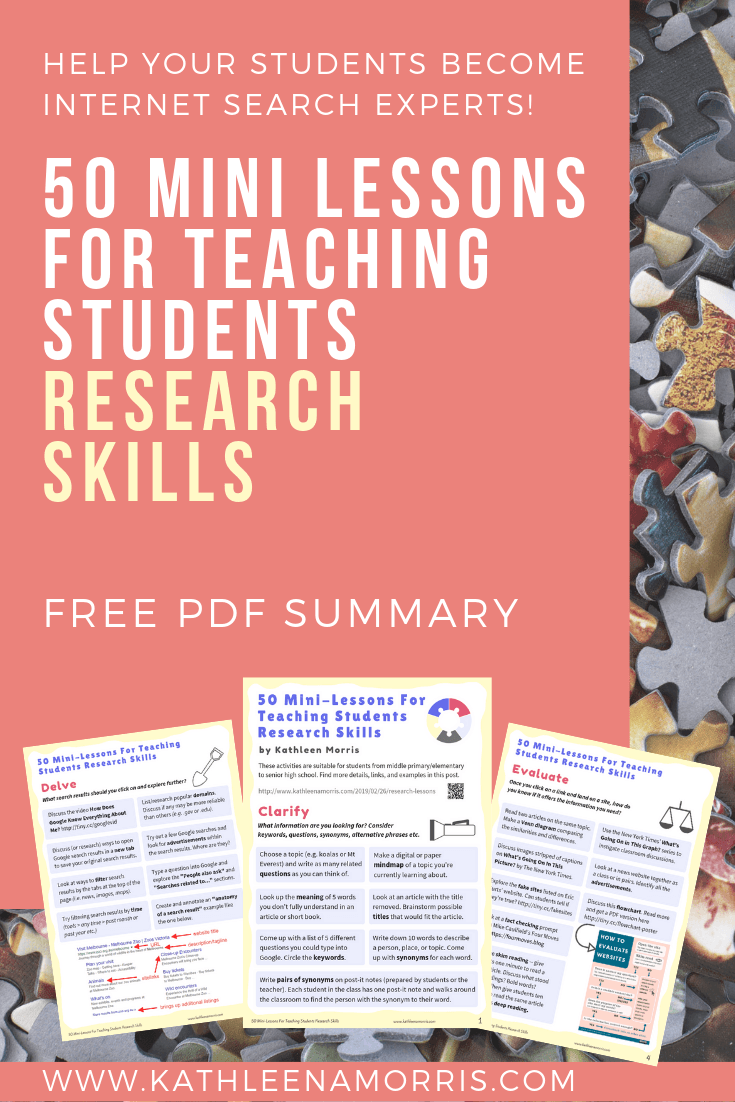
10 Replies to “50 Mini-Lessons For Teaching Students Research Skills”
Loving these ideas, thank you
This list is amazing. Thank you so much!
So glad it’s helpful, Alex! 🙂
Hi I am a student who really needed some help on how to reasearch thanks for the help.
So glad it helped! 🙂
seriously seriously grateful for your post. 🙂
So glad it’s helpful! Makes my day 🙂
How do you get the 50 mini lessons. I got the free one but am interested in the full version.
Hi Tracey, The link to the PDF with the 50 mini lessons is in the post. Here it is . Check out this post if you need more advice on teaching students how to research online. Hope that helps! Kathleen
Best wishes to you as you face your health battler. Hoping you’ve come out stronger and healthier from it. Your website is so helpful.
Comments are closed.
Southern Fried Teachin'
Research Projects That Are Actually Student-Friendly
July 9, 2021
When I was a student, I HATED doing research. I was always so overwhelmed and didn’t know where to even start. I remember my teachers giving me index cards to write down my research, but I still didn’t know where to start. So a LOT of time was wasted. And then I scrambled at the end trying to finish my project.
Raise your hand if you were like me!
Even though research is easier today with the internet, it can still be super overwhelming for students.
When I taught 3rd grade, my students had to research inventors and their inventions, and I remember just how hard research was for them. They had no idea where to start or what to research. They wasted so much time and ended up getting pretty frustrated.
Which is exactly why I created these research posters.
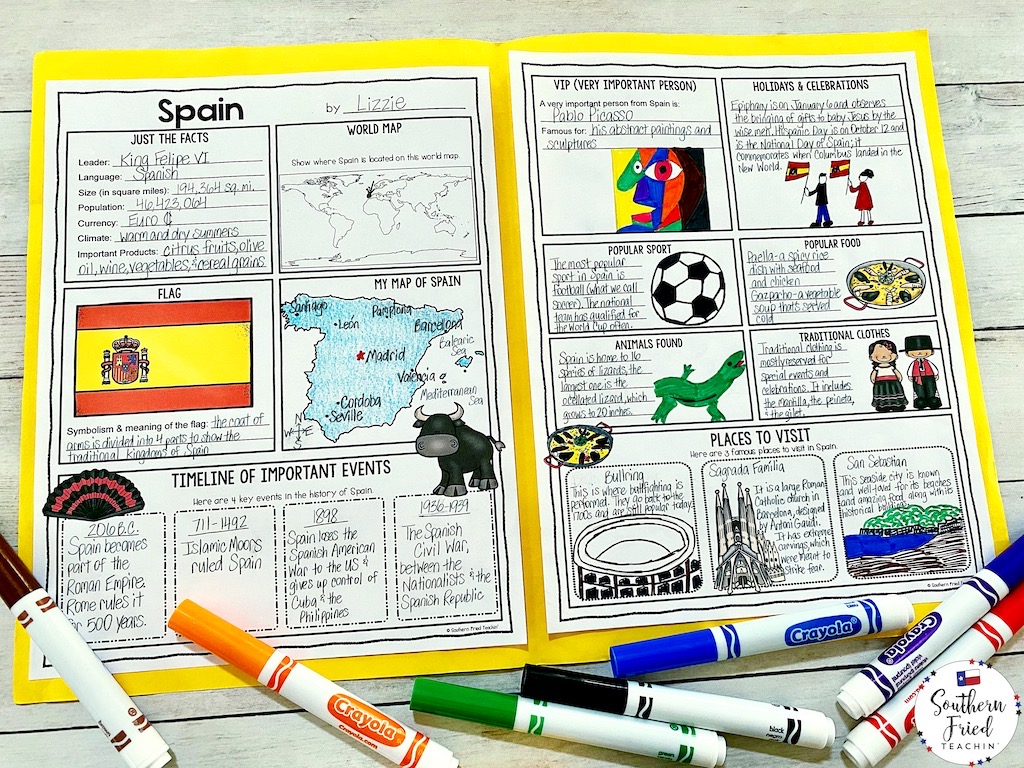
The next time I have my students do research we will go over the most important categories or topics to include in their research. I would give each student a piece of paper and fold it to divide it into different sections, one section for each category. Then they could take their research to make their project.
I basically used that concept to make my research project posters. It makes research so much easier!
You might remember when I talked about my Country Research Project Posters HERE and my State Research Project Posters HERE . Here’s a video to learn more about them.
I have heard such wonderful feedback from teachers on them which just made my heart smile.
Here are some of the research topics and what some teachers have said about them…
- “My students loved using this resource when we did our country reports. It was visually appealing for them and easy to understand.”
- “Such a fun project. Love how simple and organized the sheets for each country are. A fun self guided project for my 5th graders.”
- “Loved this resource. I used it in conjunction to our map unit. It was a quick way for my students to apply our class notes into a final assignment for each country we looked at.”
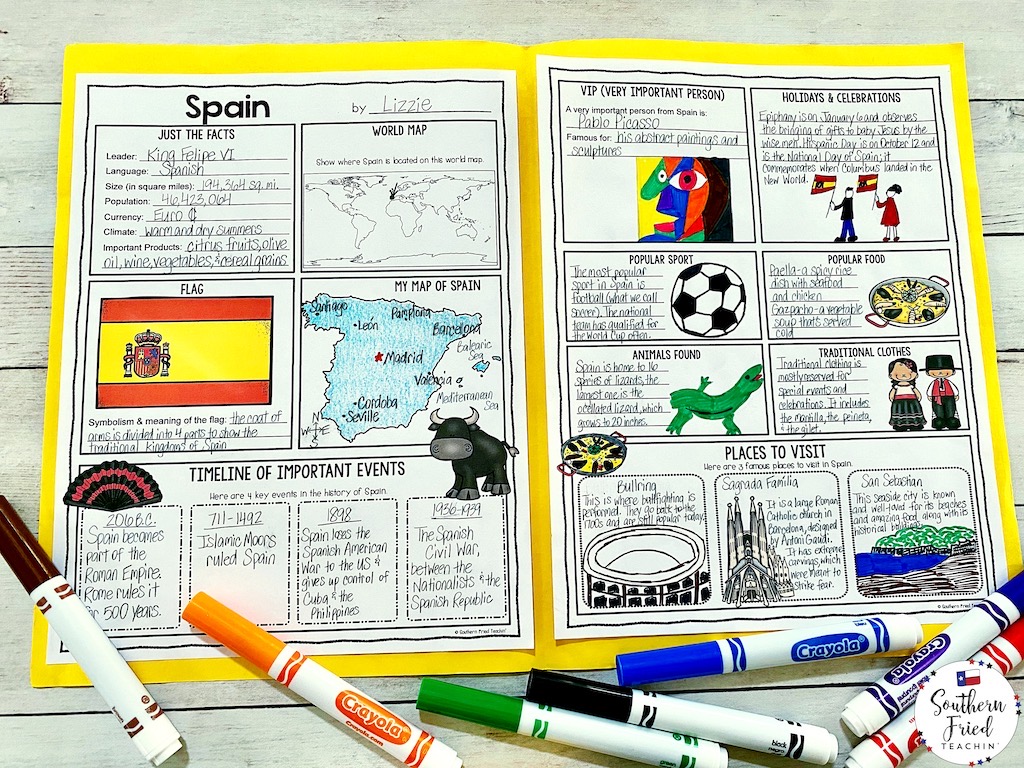
Winter Holidays Around the World
- “Perfect for a research tie-in for reading and social studies! Students loved learning about the different cultures and ways holidays are celebrated around the world!”
- “I used this before Christmas break. It was a good research project for my 8th graders. They were practicing research skills as well as learning information that was related to traditions we have in our country.”
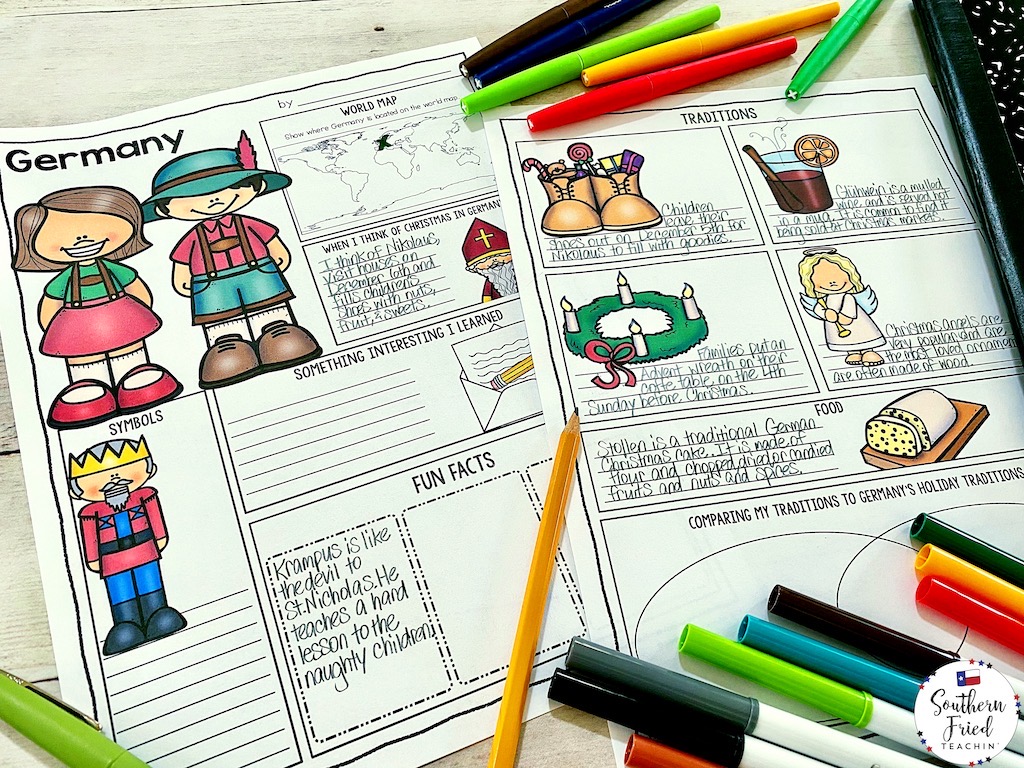
- “This resource has it all done for me! I absolutely love this resource! Well worth the money and the time I’ve saved by getting this resource!”
- “This was SUCH A FUN project for my students! We displayed ALL 50 state projects in the hall and the entire school was excited about it!”
- “I wanted my students to research states, because they seem to be lost when it comes to states. As much as I would like to say go research a state and give them what they needed to include, they needed more guidance. These posters provided the structure they needed to be successful.”
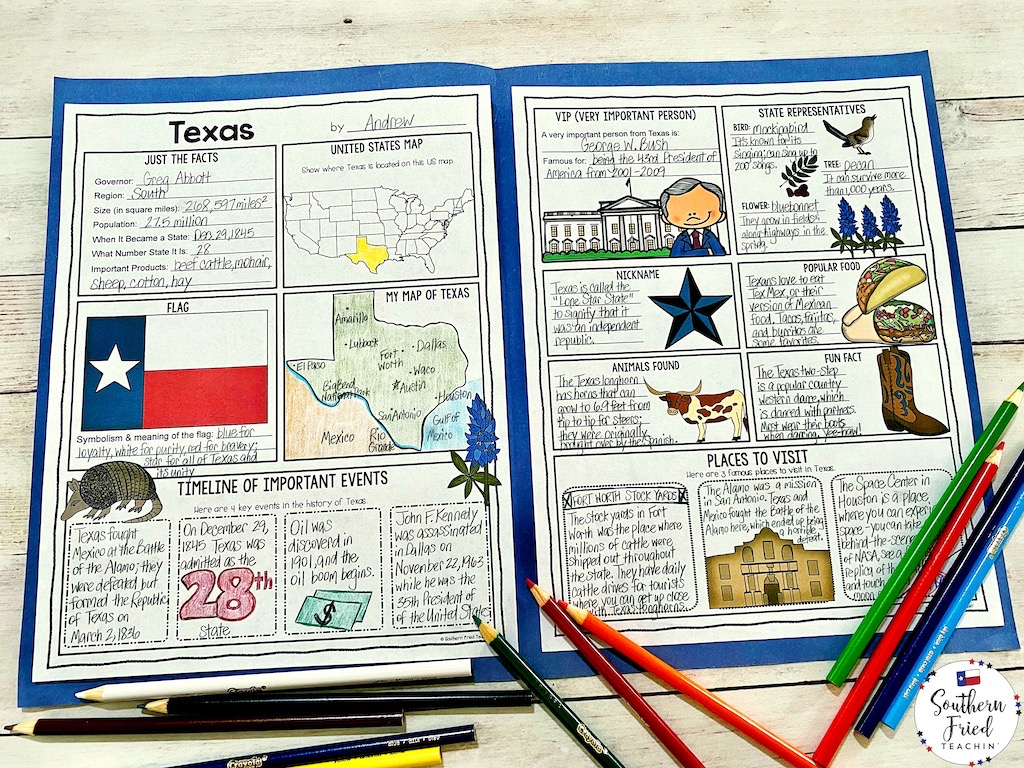
- “I am using this resource to help guide my student’s research about the planets. My students are loving using this resource and I love how hands-off I can be. I would definitely use this product again next year.”
- “My students loved doing the research and using these sheets to guide them. Their work turned out great!”
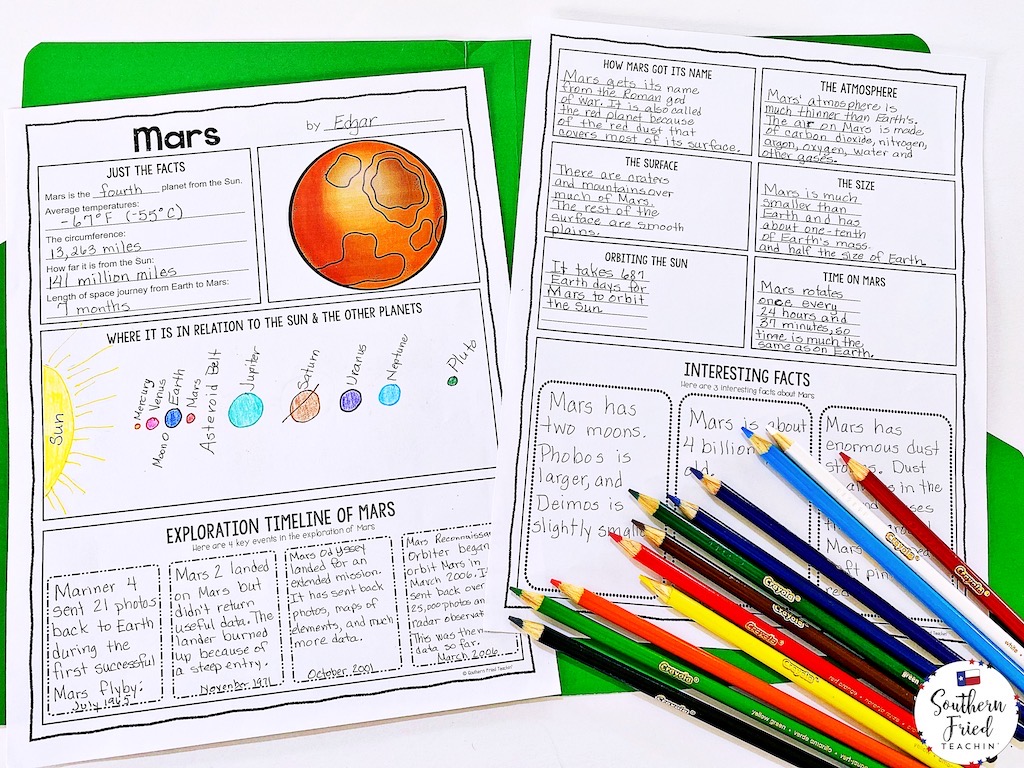
World Landmarks
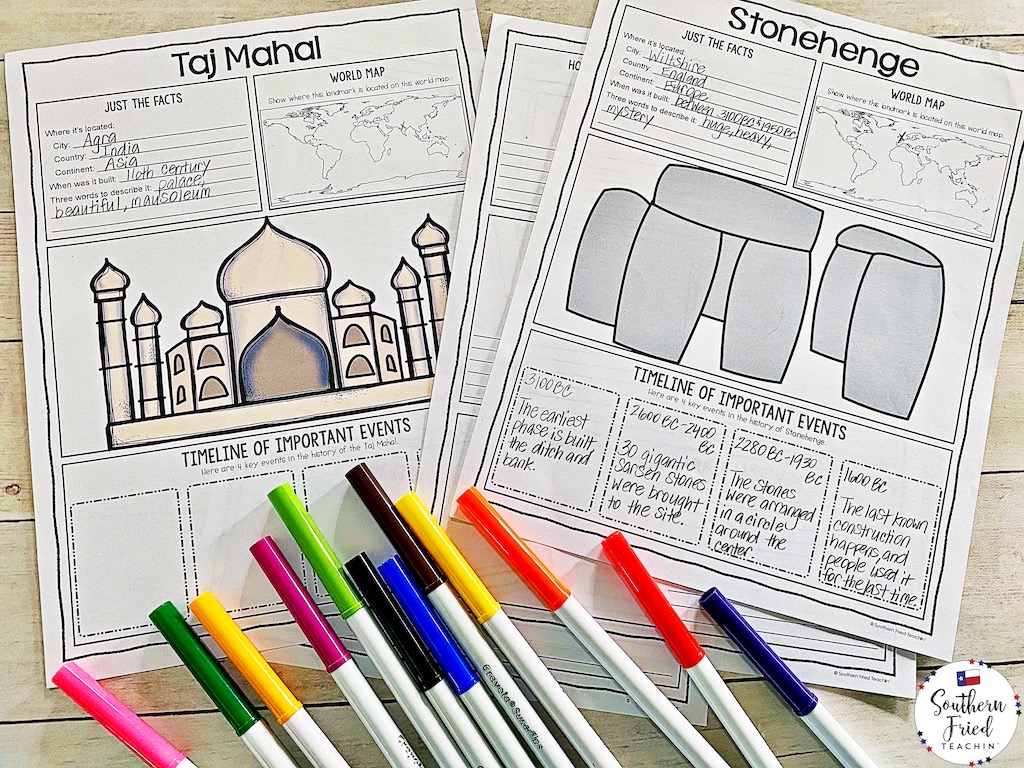
- “My Social Studies students loved this activity. They learned a lot about how things have changed over the years.”
- “I used this resource as a way for my students to research a decade that they were interested in. We ended the unit with a grade level Decades Day! Everyone Loved It!”
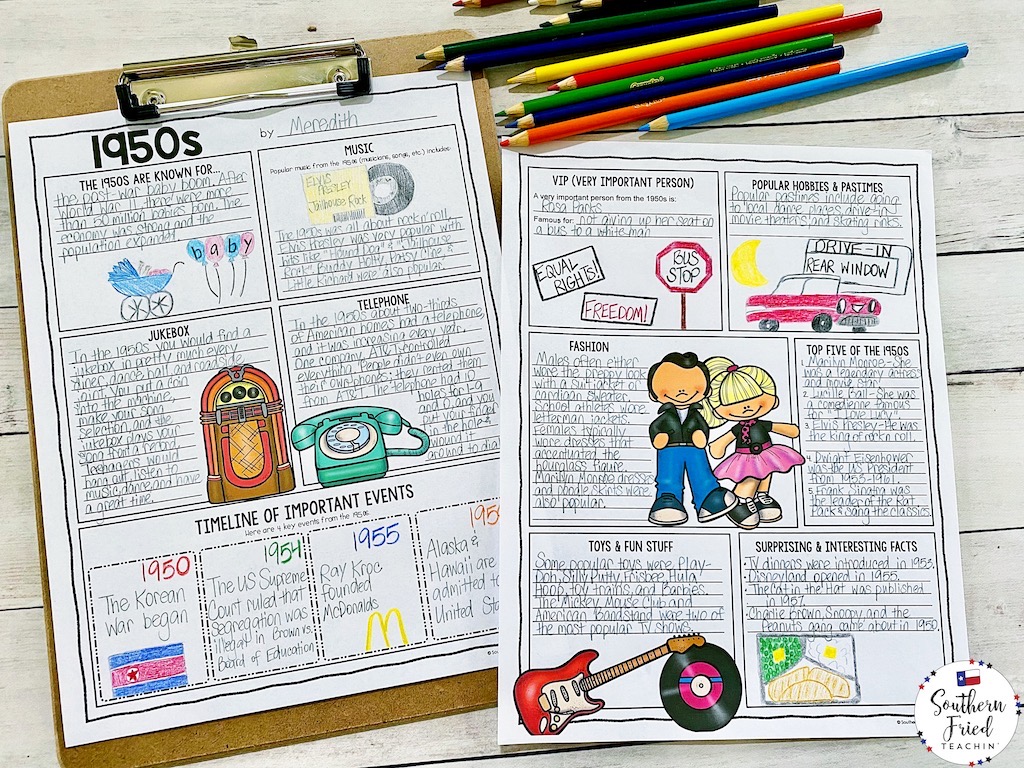
American Revolution
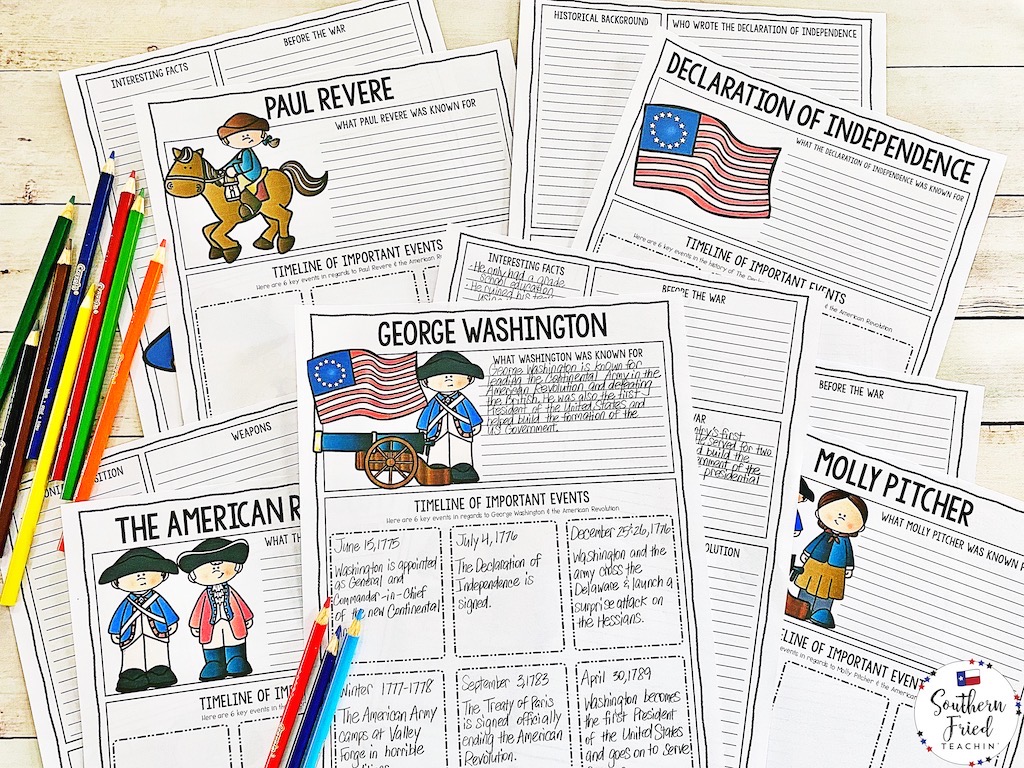
- “The kids loved these and were able to follow along. The topics were relevant and engaging.”
- “I used this as a class project for my 1st-grade class. It was a hit at Open House!”
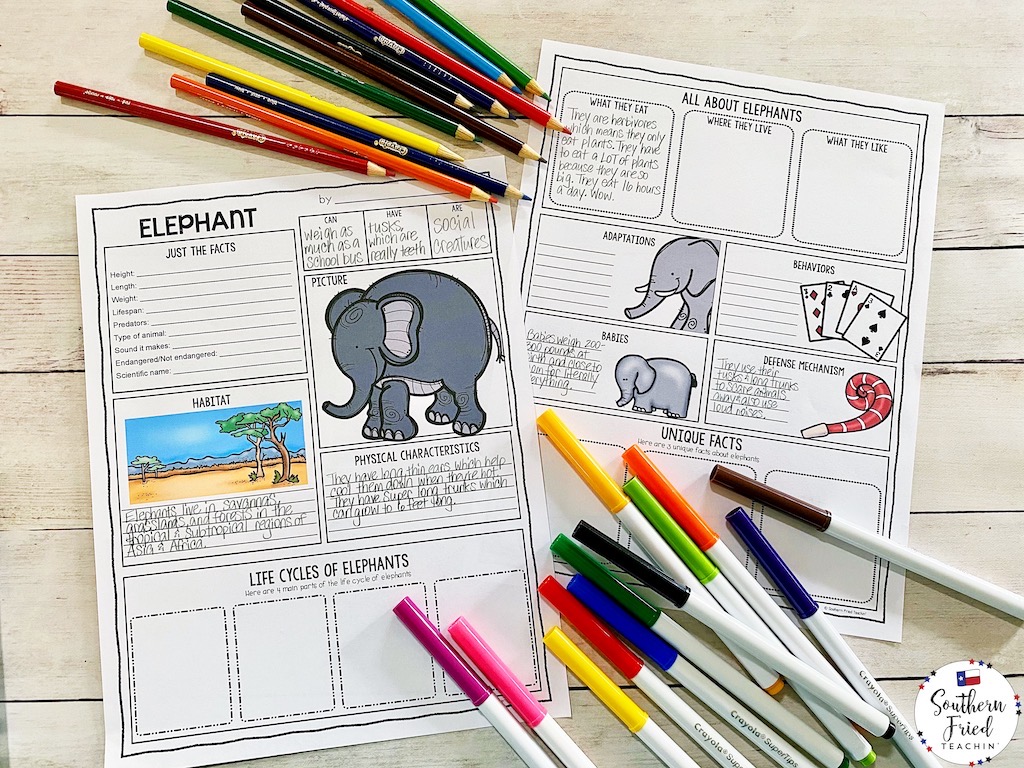
World War I & World War II
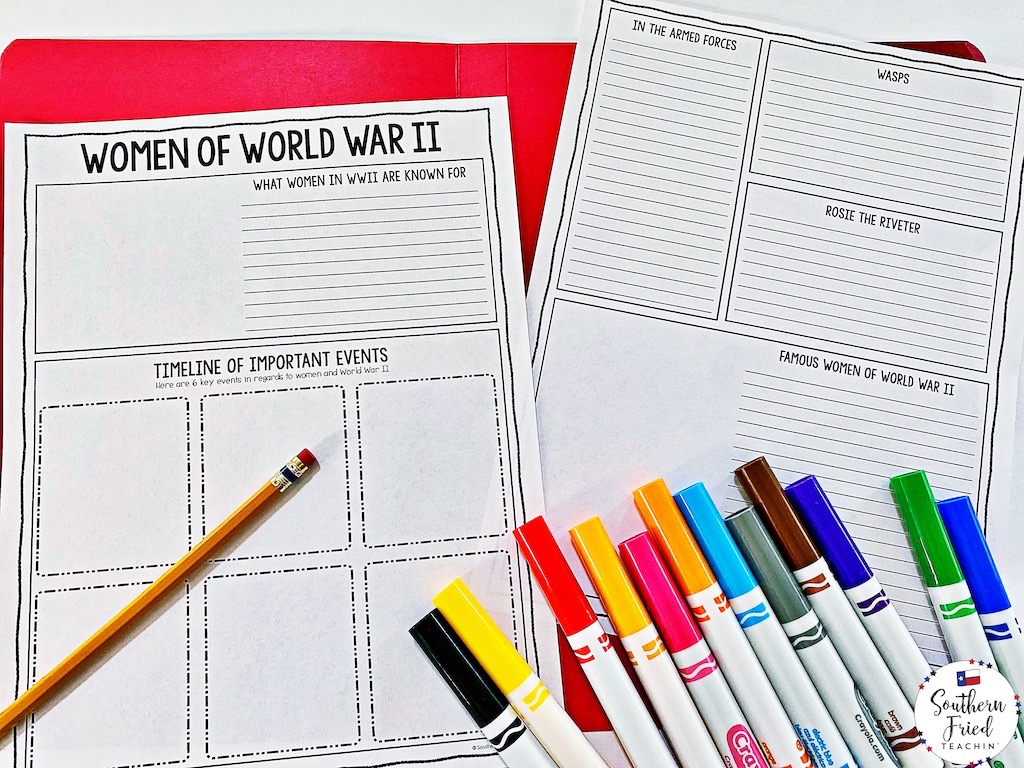
- “I have used this packet while teaching WWII in social studies and Research in writing. My students have been working as partners on this, and they will be teaching their posters to the class. They have loved working on this.”
- “My students love WW2 and they especially loved getting to do more research on different parts of the war.”
Native Americans
- “Used these for an extension project with my high fliers in 2nd. They loved it and it REALLY helped them be more independent researchers! Thank you!!”
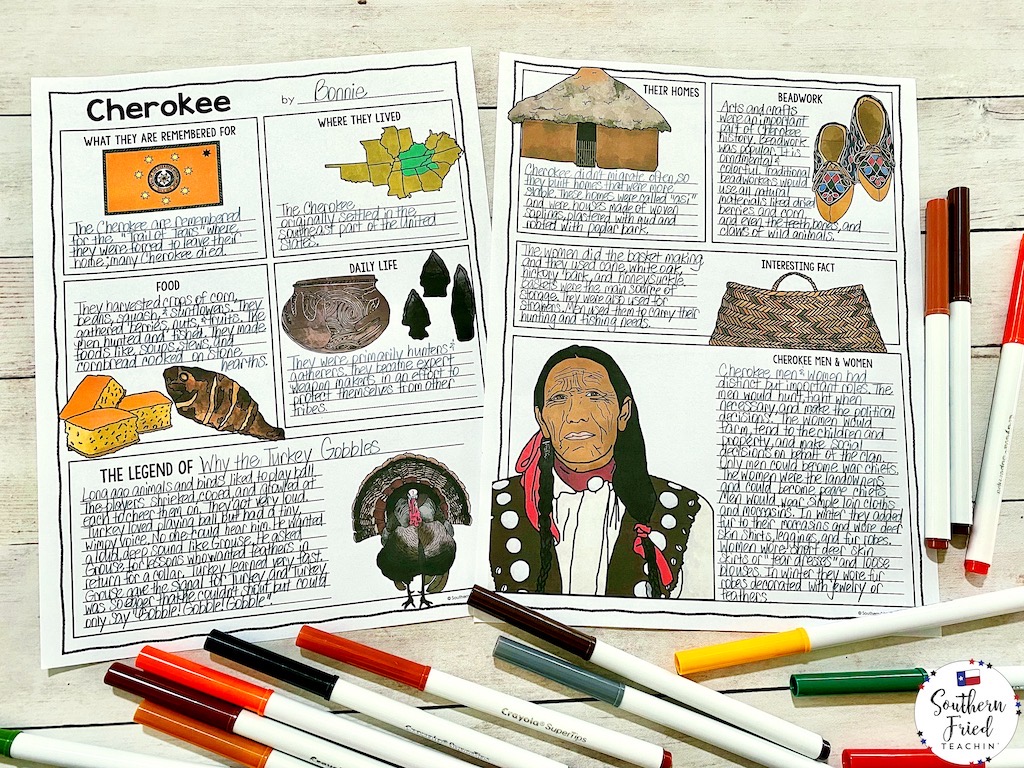
Children’s Authors
- “I really enjoyed this resource. With virtual and in school learning these kinds of materials have been a great way to keep students engaged and make learning fun. I think that this is very thorough and is definitely worth buying. This is a fantastic, zero prep, and easy to use in the classroom. With virtual learning and the way technology is in the classroom, I highly recommend this resource! Thanks so so much for the extra help in my classroom!”
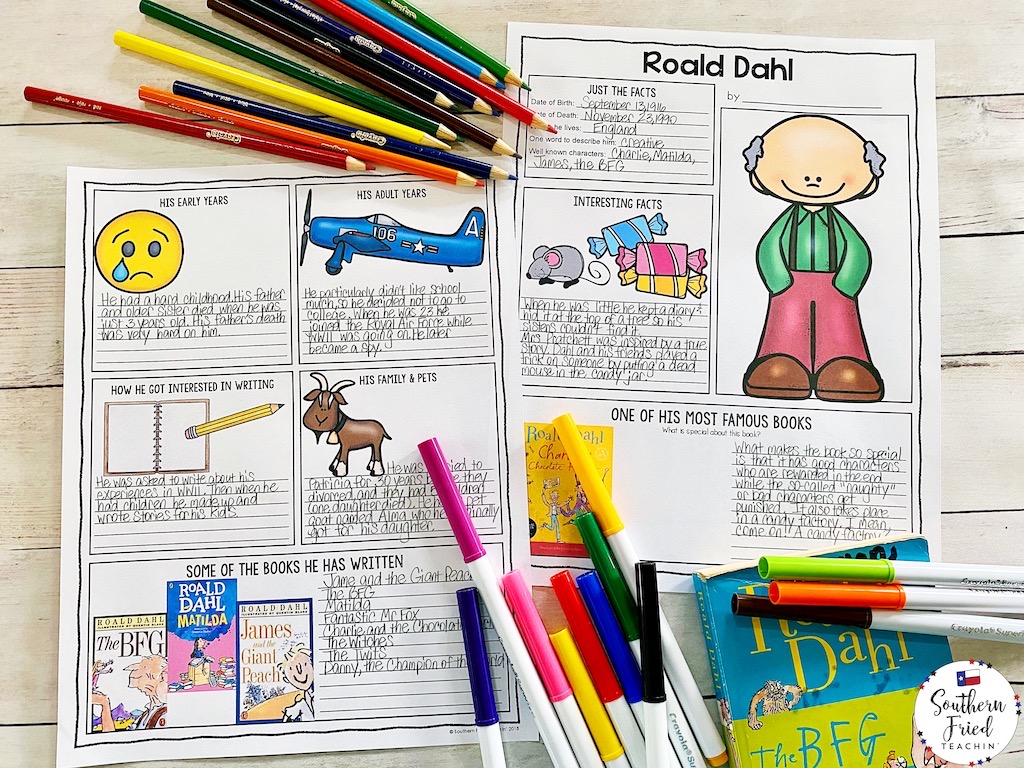
Greek Mythology Gods & Goddesses
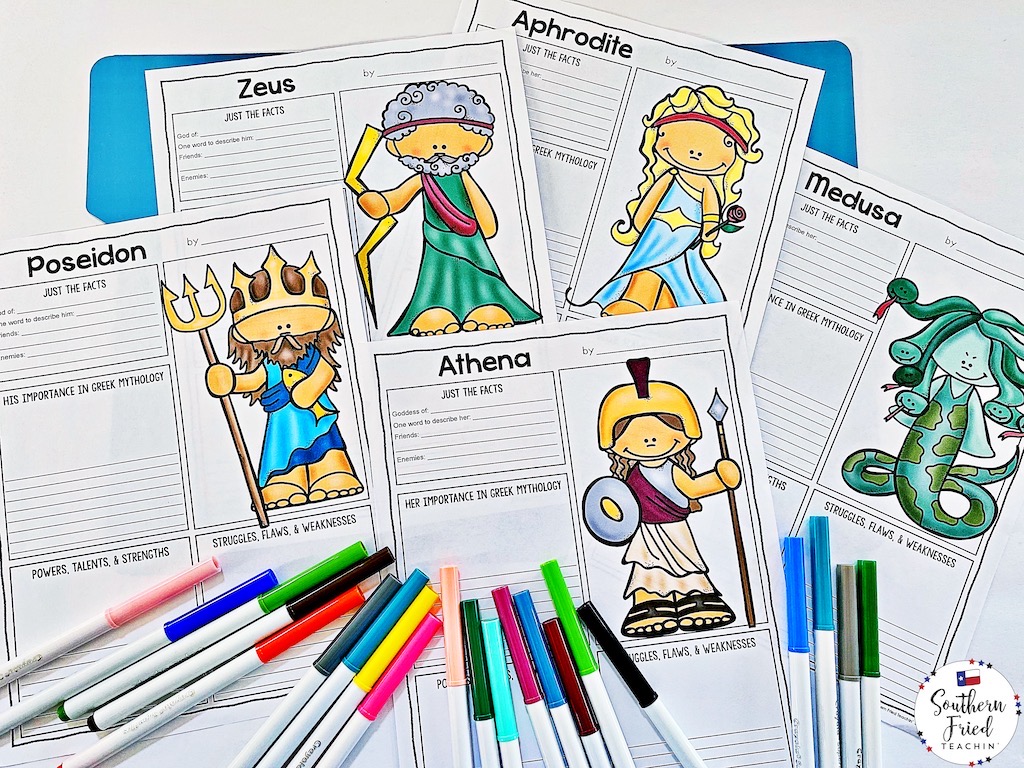
- “This goes so great with our myths and legends module. The students are engaged and love discovering about their god/goddess.”
US Presidents
- “This was AWESOME! My kids loved it and it was a great resource!”
- “So easy to use! Definitely no prep – I needed to provide the research resources, but the posters were great and I loved the blank posters to give students other options of presidents to choose!”
- “This graphic organizer is perfect for my special needs students to use for researching the presidents!”
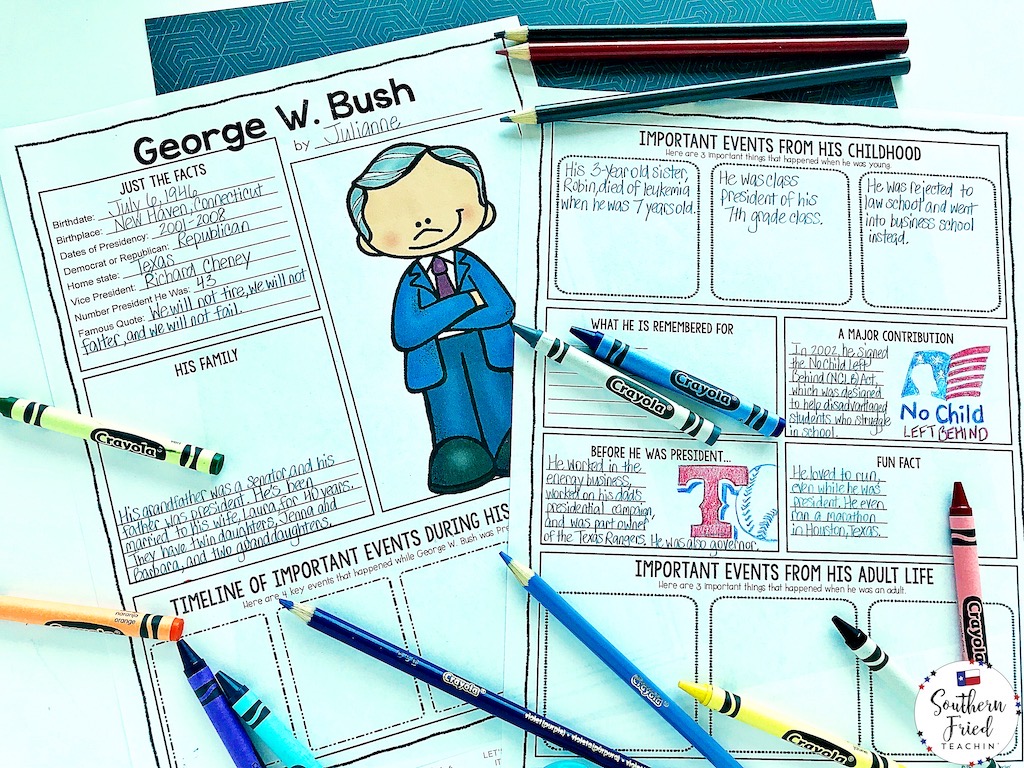
Ancient Civilizations
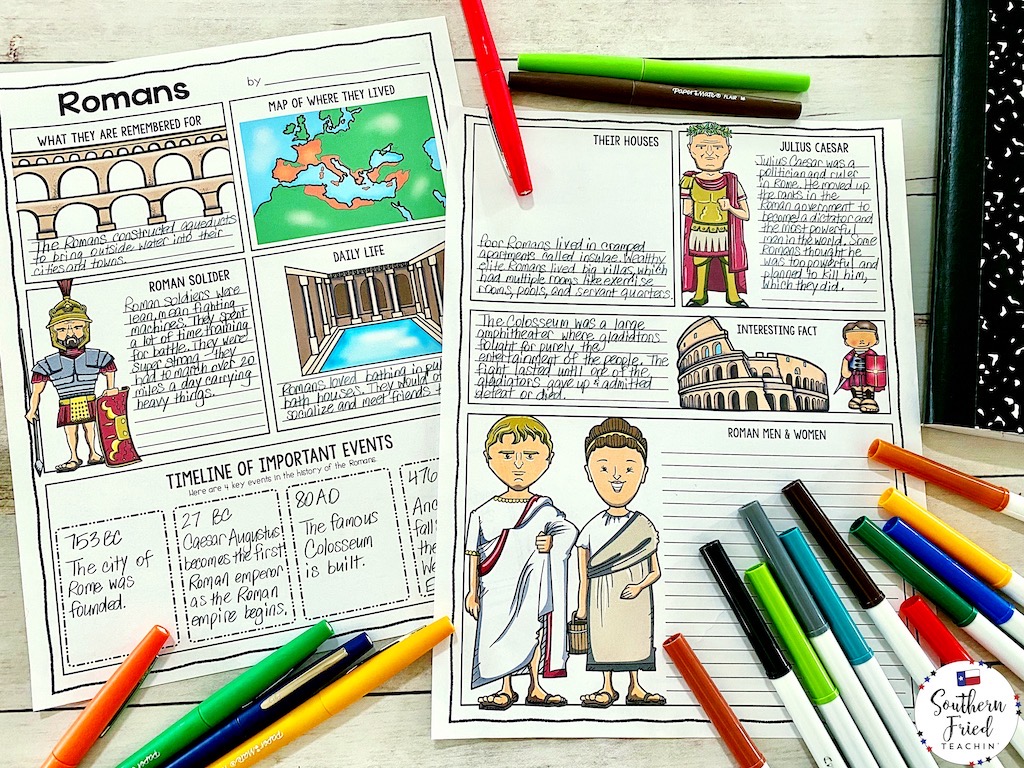
- “I used this to support some of my students in their research projects about ancient civilizations. I liked how they were laid out and organized. Made it incredibly easy for my students to use.”
- “I used this with a couple of gifted students who love different types of civilizations. They researched and used this as a guide. They loved it so much!!!”
- “Great resource! I used it for an enrichment opportunity!”
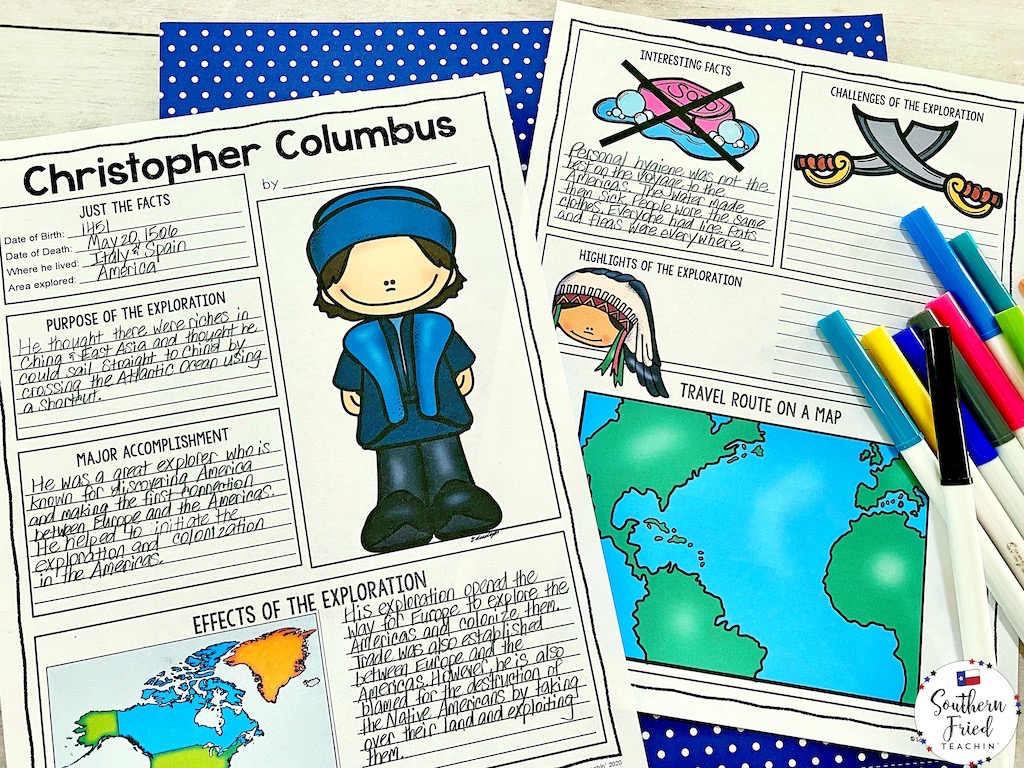
This Day in History
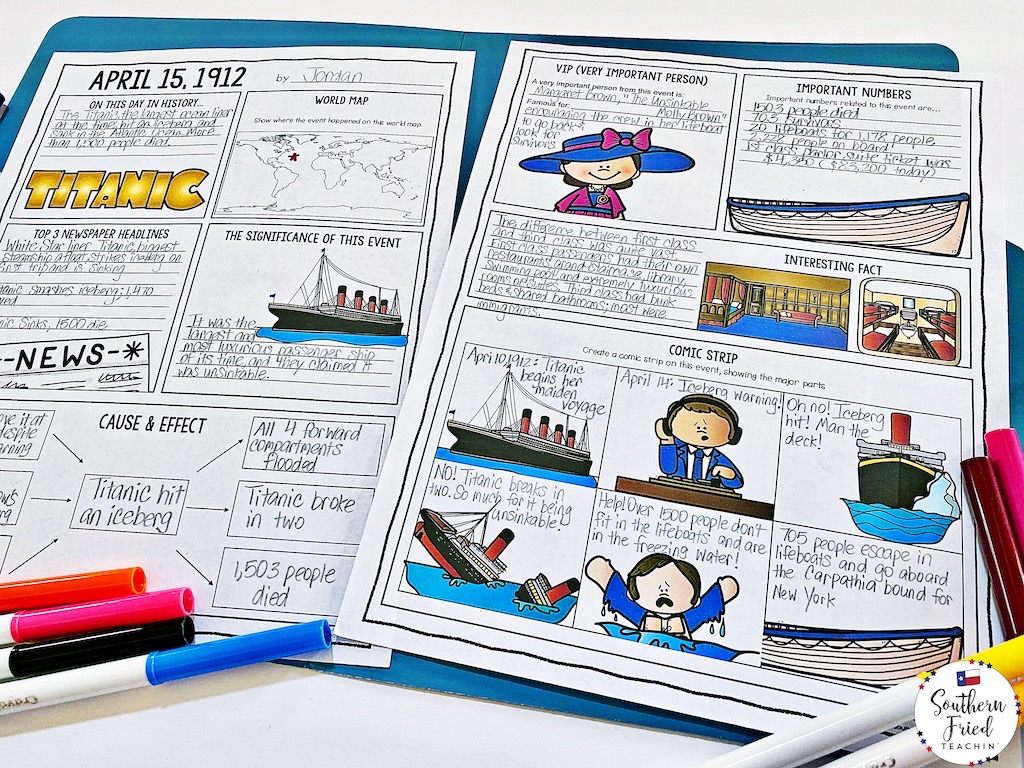
- “This year I used this at the end of the year for the students to pick a day we learned about and present…. next year I am going to do this mini project at the beginning of the school year and when the days comes up I will have the students present their work. Thanks!”
- “Students highly engaged! Great project!”
Famous Americans
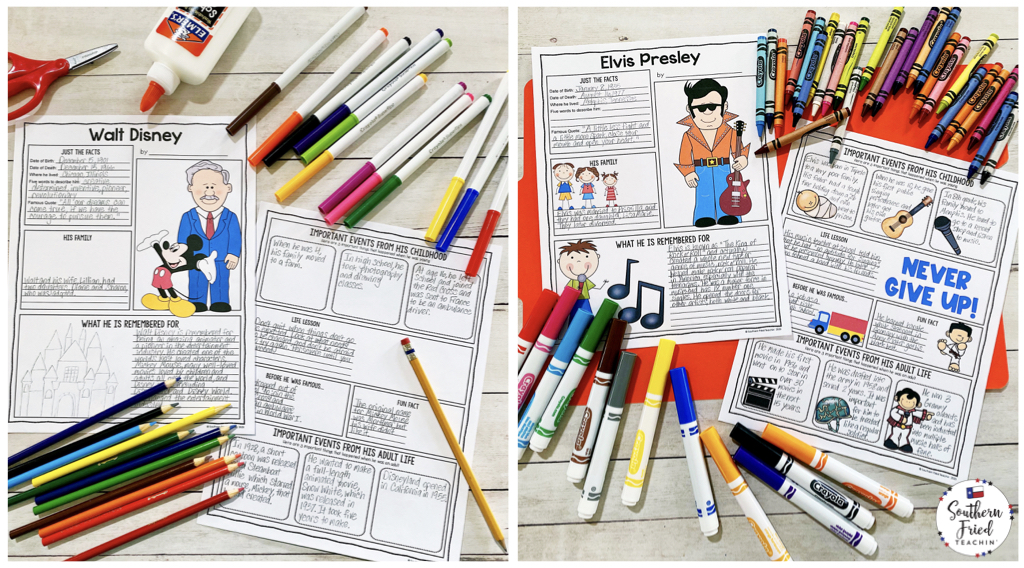
Black History
- “My students and I loved this resource!”
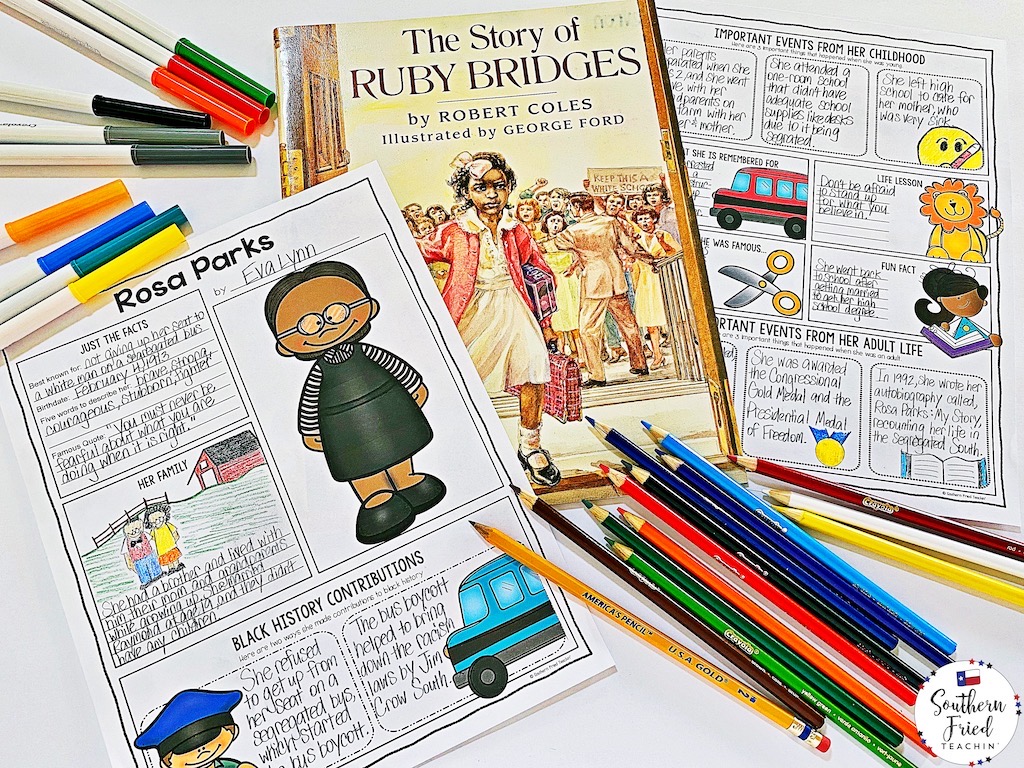
In just my Black History research project posters alone, there are 48 people to choose from.
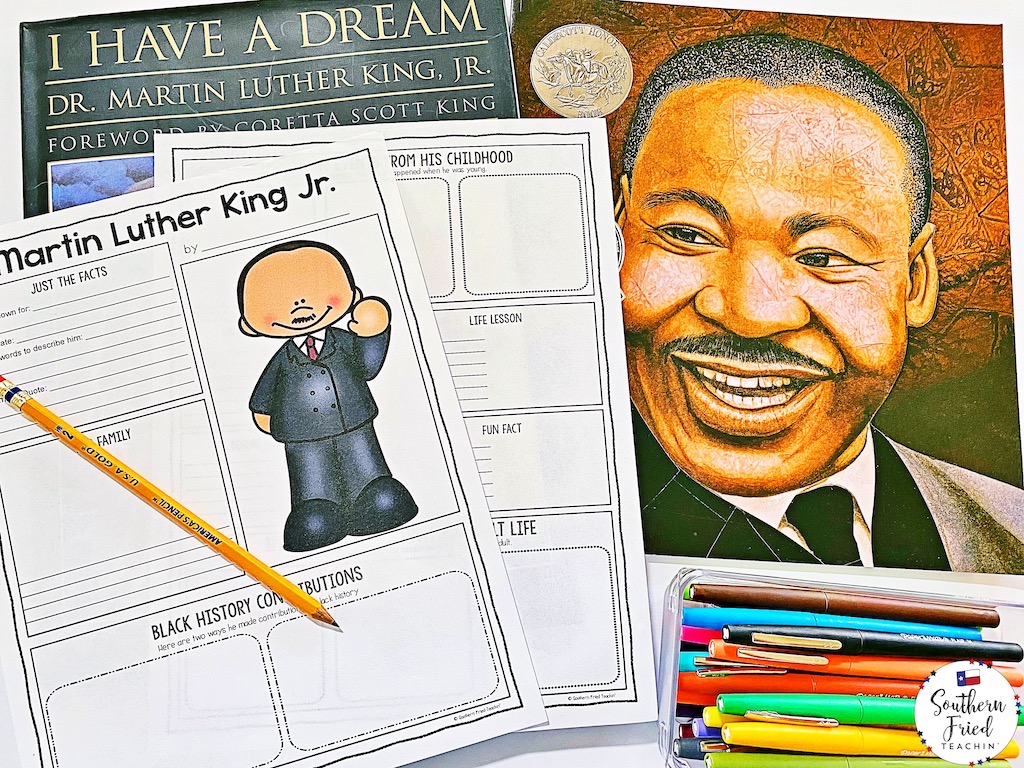
Body Systems
- “I used this template as a research guide for my students. Each student chose 2 body systems to research and they used the information they put on the papers to create either a Google Slide presentation or a hand drawn poster. The questions helped guide the students to find the most important information and they really learned a lot in the process. Thank you!”
- “My kids absolutely loved do these, they learned so much and had fun!”
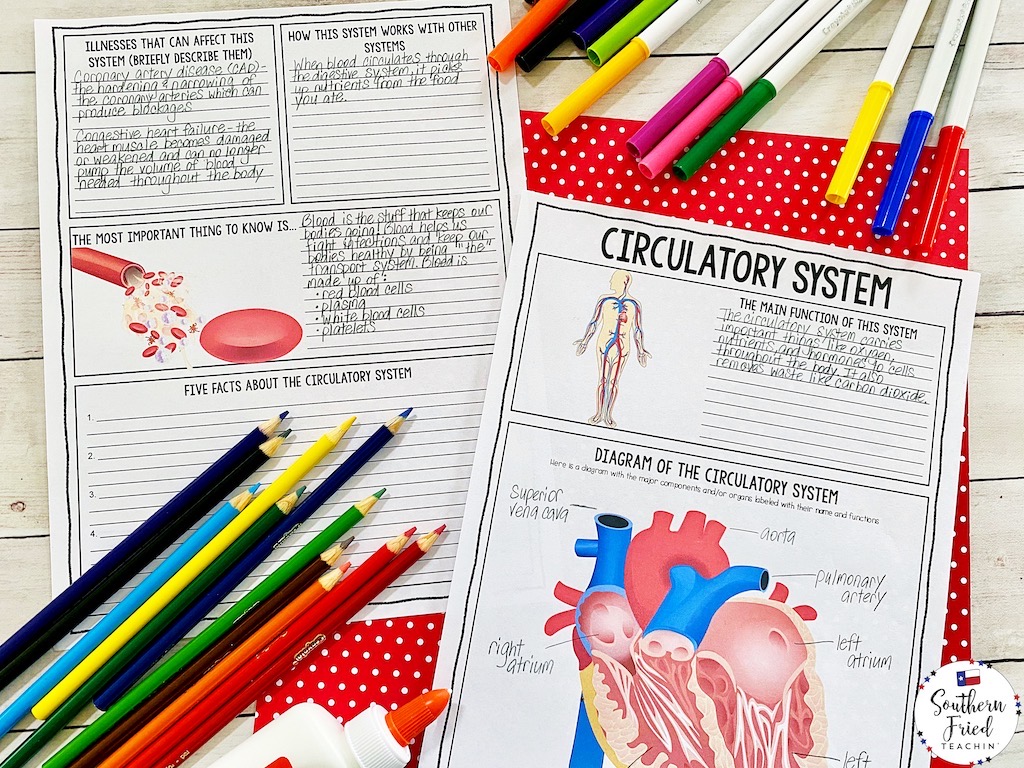
Do you remember doing research when you were a kid? What was your favorite topic to research? If you have any research topic requests I would love to know them!
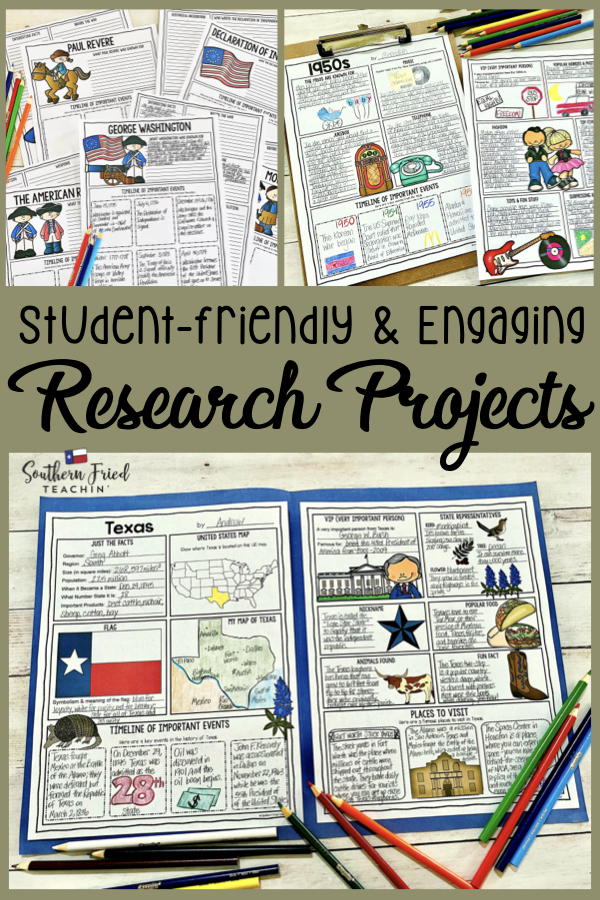
Latest on Pinterest

Latest on Facebook
1 years ago

This content isn't available right now
Share on Facebook Share on Twitter Share on Linked In Share by Email
2 years ago
Latest on Instagram
Please go to the Instagram Feed settings page to create a feed.
- Rating Count
- Price (Ascending)
- Price (Descending)
- Most Recent
Research project first grade
Resource type.

Animal Research Project Report First Grade Graphic Organizer and Template

Animal Research Project Lapbook, Booklet and Activities for 1st , 2nd, 3rd Grade
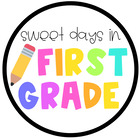
Animal Research Project for Kindergarten and First Grade - Library Skills
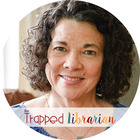
COUNTRY RESEARCH PROJECT REPORT TEMPLATE GRAPHIC ORGANIZER 1st 2nd 3rd 4th Grade

Animal Research Project Report l Writing Unit l 1st , 2nd, 3rd Grade l Worksheets
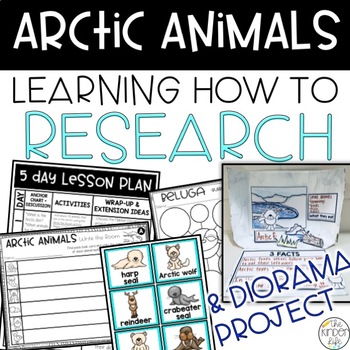
Arctic Animals Kindergarten | First Grade Research Diorama Project

Animal Research Report Project for First Grade or Second Grade

STATE REPORT TEMPLATE Research Project Graphic Organizer 1st 2nd 3rd 4th Grade

CKLA First Grade Animal Research Project Skills 4.22-4.24

Reading Biography Research Project Based Writing Kindergarten 1st 2nd Grade

ANIMAL RESEARCH Report Project Template Graphic Organizer 1st 2nd 3rd Grade
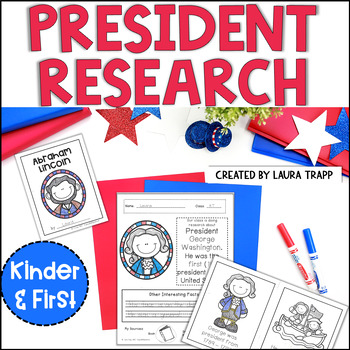
Presidents Research Project for Kindergarten and First Grade - Library Skills
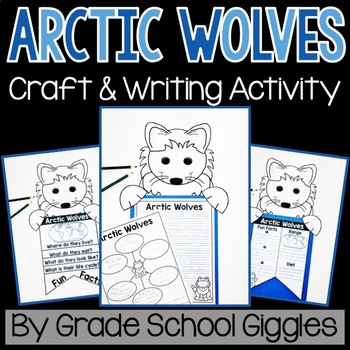
Arctic Wolf Winter Craft, Arctic Animal Research Writing Project 1st - 3rd Grade

Animal Research Project 1st Grade Graphic Organizer Informational Writing Report

Frog Unit & Research Project First Grade
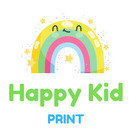
Kangaroo Animal Research Project 1st Grade Informative Writing Prompts

Animal Research Project 1st Grade & 2nd Grade - Animal Research Template
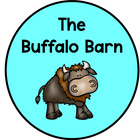
Arctic Polar Animals Research project 1st , 2nd, 3rd grade . writing, templates

Animals ANIMAL RESEARCH PROJECT Report GRAPHIC ORGANIZER Template 1st 2nd Grade
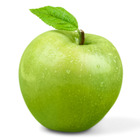
Inventors Research Project for First Grade

Hawaii Research Report Project Writing Template - 1st Grade -5th Grade

Arctic Polar Animals Research project BUNDLE for 1st , 2nd, 3rd grade activity
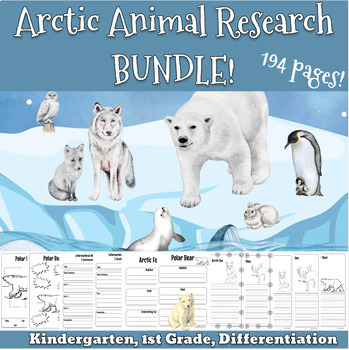
Arctic Polar Animals Research project BUNDLE for Kindergarten 1st grade activity

The first offset credits approved by a major integrity program don’t make the grade
Unfortunately, the first credit quality labels released by the ICVCM raise concerns about whether this effort can provide the quality assurance the market desperately wants and needs.
We analyzed fourteen carbon offset projects credited under the Climate Action Reserve’s US Landfill Protocol Version 6.0 , which the ICVCM has now approved for its quality label. By comparing crediting data from the Climate Action Reserve with landfill gas collection data from the US Environmental Protection Agency, we found that nearly 50 percent of the credits issued under this protocol are likely non-additional. These credits do not represent high-quality outcomes for the climate.
While our analysis explores a small subset of landfill projects, the focus of this commentary is on the ICVCM’s assessment process, itself. So much effort has gone into establishing the ICVCM as a point of oversight for the offsets industry as a whole. It is important to know how well that oversight is playing out. Landfills provide a window for studying these broader, market-wide dynamics. We conclude that those planning to rely on the ICVCM quality label should proceed cautiously; the ICVCM process may not be set up to reliably separate the wheat from the chaff.
High-quality labels on low-quality credits
The problem is the ICVCM has labeled seemingly non-additional landfill credits as CCP-Approved.
Consider the Resource Recovery Landfill ( CAR516 ) project in Cherryvale, Kansas, which receives offsets for operating a system that collects and combusts methane emitted from decomposing garbage. Offsets are awarded to landfill projects because burning methane converts that gas to CO₂, which is considered less harmful to the atmosphere than the methane would have been. But the crediting data for this project show a suspicious pattern. After receiving credits for operating its gas collection system from 2006 to 2011 (Figure 1, green bar), the Resource Recovery Landfill stopped filing the paperwork necessary to receive offset credits and fell into a period of dormancy. 3 3 We show data between 2010 and 2022, which are the years for which EPA gas collection data are available. Some landfills, including the Resource Recovery Landfill, started operating gas collection systems and receiving offset credits prior to 2010. Then, in 2022, the project suddenly started receiving credits again (Figure 1, yellow bar). 4 4 We’re referencing years in which the project activity was credited (sometimes referred to as “vintage year”), rather than years in which credits were issued or in which paperwork was filed. In the case of CAR516, the project came out of dormancy with paperwork filed in 2024, which resulted in the issuance of post-dated credits for vintage year 2022.
If the credits issued to Resource Recovery truly represented additional climate benefits that were enabled by carbon finance, you would expect that a ten-year gap in credit issuance would have some effect on the landfill’s operation of its gas collection system. Instead, data collected by the Environmental Protection Agency (EPA) shows that the Resource Recovery Landfill consistently operated its gas collection throughout the pause in crediting, from 2012 to 2021 (Figure 1, blue bar). 5 5 The EPA’s Facility Level Information on Greenhouse gases Tool makes available a vast amount of data on a landfill-by-landfill basis. In fact, the Resource Recovery system actually expanded during that period. EPA data show the gas collection system growing from 19 to 25 gas extraction wells during the project’s gap in crediting.
To be clear, the fact that Resource Recovery’s gas collection system ran continuously is a good thing for the planet. In addition to reducing methane emissions, collecting and treating landfill gas can help reduce smells and other environmental side effects associated with operating a landfill. But offsets must be used to spur new climate action — not just reward existing actions. Resource Recovery, and other landfill gas projects like it, claim that in the absence of regulation and without carbon finance, methane would be released to the atmosphere unabated. The gap in crediting shows this is not the case and strongly indicates that the second wave of credits Resource Recovery received is non-additional.
It turns out that many of the other landfill projects enrolled under the Climate Action Reserve (CAR) US Landfill Protocol Version 6.0 mirror this pattern. Of the fourteen projects that have been credited under the protocol, six have crediting gaps of three years or longer. In all cases, EPA data shows continual operation of the methane destruction systems at these landfills (Figure 2). And at four of the landfills, the methane destruction systems expanded during the crediting gap.
Time series of initial credit issuance , renewed credit issuance , and the operation of gas collection and combustion systems for six landfills credited under the Climate Action Reserve’s US Landfill Protocol Version 6.0. All projects have a crediting gap of at least three years, with some gaps as long as ten years. The lack of crediting, combined with the continuation of gas collection, is inconsistent with the concept of additionality.
Roughly 0.84 million credits have been issued under CAR’s US Landfill Protocol Version 6.0, all of which are now eligible for the ICVCM’s CCP-Approved label. More than 0.41 million of these credits represent a second wave of non-additional crediting to the six projects with large crediting gaps shown in Figure 2. On a protocol basis, that works out to 49.3 percent over-crediting. 6 6 For context, the ICVCM reports that 27 million credits are currently CCP-Approved. This number includes both ozone depleting substances and landfill credits. We have not evaluated any other protocols or projects within these approved credit categories and cannot speak to their quality.
In reading through CAR’s protocol, we trace the origin of this over-crediting to a minor change first introduced in the preceding version of CAR’s landfill protocol, Version 5.0 . After years of minimal project development under Version 4.0 of the protocol, CAR revised its rules to i) allow projects to receive credits for twenty years, as opposed to just ten years and ii) provide a way for previously lapsed projects to submit minimal paperwork and start receiving credits again. Later, Version 6.0 added the option for a third crediting period, theoretically allowing projects to receive credits for up to 30 years. There are at least 10 other landfill projects enrolled under Version 5.0 of the CAR landfill protocol that have crediting gaps of three or more years. While these projects support the interpretation that a change in the protocol allowed for the observed non-additional crediting patterns, they are excluded from our analysis as Version 5.0 of CAR’s landfill protocol wasn’t included in the ICVCM’s initial list of eligible protocols in the category of landfill gas.
What this tells us about the ICVCM process
The approval of hundreds of thousands of likely non-additional credits as “CCP-Approved” points to a larger problem with the ICVCM’s approach for identifying and labeling high-quality credits. We don’t want to speculate too much about a process we aren’t involved with, but we suspect the principal problem stems from the ICVCM’s goal of reviewing and approving whole categories, which could make them less likely to dig into the specific attributes of individual projects. The ICVCM emphasized this distinction in a set of “ informal board observations ” released with their initial approval of protocols within their Landfill Gas Capture and Utilization category, writing: “Mitigation activity-level assessment is outside the scope of the ICVCM assessment process, which focusses [ sic ] on programs and categories (types of carbon credits).”
Here we see the limits to that “high level” approach – evaluating protocols alone is not enough to determine credit quality. The quality of individual projects can vary within a protocol. The quality of an offset credit flows not only from the protocol it abides by and the transparency of the registry it is listed under, but also from the specific details of the individual project’s implementation.
And the risk for divergence between the specifics of a project and the generalities of programs and protocols will only grow as the ICVCM moves to approve other credit categories. That’s because judging the quality of landfill-related credits should be easier than nearly every other type of offset credit on the market. The change from methane to CO₂ can be measured directly at the landfill, without relying on complicated measurements or algorithms. Landfill credits do not depend on understanding and monitoring global ecological systems or regional political outcomes, the way forest offset projects do. And, in the case of US landfills, we have rich reporting data from the EPA that makes it straightforward to test assumptions about additionality and observe real outcomes of how landfill gas systems operate. If easy-to-spot, low-quality landfill credits are being given ICVCM gold stars, it’s difficult to imagine how buyers can trust the ICVCM’s labels on more controversial credit types, like improved forest management and avoided tropical deforestation .
That’s not to say there aren’t merits to the ICVCM’s broader efforts. Their assessment process has already led to real improvements in market transparency. For example, Criterion 9.4 of the ICVCM Assessment Framework requires that crediting programs “make publicly available information on the pooled buffer reserve contents, including origin of carbon credits[.]” After that criterion was published, the American Carbon Registry began to make information about the specific credits placed in its buffer pool available. Previously, the registry had simply disclosed the total size of its buffer pool. Becoming “CCP-Eligible” required that ACR change its disclosure practices and, because of that change, we now know the exact composition of the program’s buffer pool. This is meaningful progress in market transparency and we’re hopeful that the ICVCM continues to use its influence and position in the market to make further incremental improvements.
Rather than dismiss the ICVCM based on this analysis, we urge market participants to adjust their expectations about what the ICVCM assessment process can deliver. As demonstrated by this small collection of landfill credits, the “CCP-Approved” label is not an unambiguous signal of credit quality.
Grayson performed the analysis and wrote the article with Freya. Kata Martin designed the figures.
Please cite as:
G Badgley and F Chay (2024) “The first offset credits approved by a major integrity program don’t make the grade” CarbonPlan https://carbonplan.org/research/icvcm-landfill-additionality
This work was funded in part by grants from the Patrick J. McGovern Foundation. No one except the authors exercised control over the research process or products. The authors are solely responsible for the content of this commentary, which does not reflect the views of any other individuals or organizations.
Article text and figures made available under a CC BY 4.0 International license . The code underlying this commentary is made available under an MIT license .

IMAGES
VIDEO
COMMENTS
Science Buddies' first grade science projects are the perfect way for first grade students to have fun exploring science, technology, engineering, and math (STEM). Our first grade projects are written and tested by scientists and are specifically created for use by students in the first grade. Students can choose to follow the science ...
There are a lot of 1st grade science projects that can help children draw conclusions and make connections to the world around them. In first grade science, children learn about topics within life, physical, and earth sciences. That means there are a lot of different types of science experiments to choose from when looking for an engaging (or easy) project for your class or at home.
Teaching academically honest research skills helps first graders learn how to collect, organize, and interpret information.
45 Fabulous 1st Grade Science Projects That Little Learners Will Love Hands-on science is a surefire way to connect with every kid.
Science doesn't need to be difficult or complicated! Here's our list of the best science projects for first graders that use simple supplies.
Science Buddies' first grade science projects are the perfect way for first grade students to have fun exploring science, technology, engineering, and math (STEM). Our first grade projects are written and tested by scientists and are specifically created for use by students in the first grade. Students can choose to follow the science experiment as written or put their own spin on the project.
Here are some fun and easy STEM science projects for your first grade class this spring. STEM Science Projects for 1st Graders In the first grade, students are naturally curious about the natural world and how things work. This opens the doors for opportunities for classroom science projects that introduce the foundational fluencies of STEM.
59 Science Projects for 1st Graders. Discover first grade science experiments that can spark curiosity! Our carefully selected science projects are designed to teach kids with fun hands-on learning and inspire them to love science! 1. Make a Parachute. Learn how to make a parachute and experiment with gravity! Easy. 2.
Biology Science Fair Ideas for 1st Grade. Make a Plant cell using craft materials, such as paper mache, clay, or playdough. Model a butterfly's life cycle using paper plates, tissue paper, and markers. Construct a human body using cardboard and paper cutouts of organs. Bird's nest using twigs, grass, and clay.
Our first grade projects are written and tested by scientists and are specifically created for use by students in the first grade. Students can choose to follow the science experiment as written or put their own spin on the project. For a personalized list of science projects, first graders can use the Science Buddies Topic Selection Wizard ...
Teaching research skills in kindergarten and first grade lays a strong foundation for future learning success.
The Common Core Standards ask our 1st and 2nd grade students to "Participate in shared research and writing projects", as well as, "…gather information from provided sources to answer a question.". Our students are very capable of participating in real-world research with the appropriate scaffolds, supports, and explicit instruction.
Take a look at how we learned about animal habitats in first grade as we reasearched different animals, wrote reports and created hands on dioramas.
Penguins and Polar Bears: 1st Grade Research. Happy day, friends! I just wanted to quickly stop by and share an amazing way we've started doing research this week, as well as some ideas for learning about penguins, polar bears, arctic, tundra, and all things cold. Please note, I do understand that penguins and polar bears reside on different ...
Over 1,200 free science projects searchable by subject, difficulty, time, cost and materials. Browse the library or let us recommend a winning science project for you!
It is important to develop students' research skills from a young age. These 17 awesome research projects will get your students excited to learn!
Here are eight inspiring research projects on subjects common for the K-2 age group. For each one, we give tips for LEARNING about the specific subject first with key research questions and tasks.
Since we completed these activities toward the end of the year, our normal schedules were interrupted due to state testing, book fair, and end of the year changes. Exploring those apps were a great way to keep the kids excited about their research project and provided motivation for them to finish.
We used non-fiction books as well as Epic to complete our research. On the back of the foldables, we labeled the different parts of bats. You can find this bat research foldable for FREE, here. (link updated) All of the first grade students completed a home project where they had to create a bat habitat diorama.
Learn how to teach research skills to primary students, middle school students, or high school students. 50 activities that could be done in just a few minutes a day. Lots of Google search tips and research tips for kids and teachers.
Discover the wonders of the plant kingdom with science experiments focused on plant biology. Explore growth, photosynthesis, and adaptations. Pick the ultimate first-grade science exploration from our hands-on collection of fun experiments.
Can research actually be fun and engaging for kids? You bet! These Research Project Posters are super student friendly and help guide your students in what exactly to research. And they are perfect for students to display their research!
This beginning animal research project is ideal for use in library skills classes in kindergarten and first grade or in the K or 1st grade classroom. Your students will practice basic research and note taking skills.
Science Buddies' first grade science projects are the perfect way for first grade students to have fun exploring science, technology, engineering, and math (STEM). Our first grade projects are written and tested by scientists and are specifically created for use by students in the first grade. Students can choose to follow the science ...
The first offset credits approved by a major integrity program don't make the grade (11) COMMENTARY ... We analyzed fourteen carbon offset projects credited under the Climate Action Reserve's US Landfill Protocol Version 6.0, which the ICVCM has now approved for its quality label. By comparing crediting data from the Climate Action Reserve ...